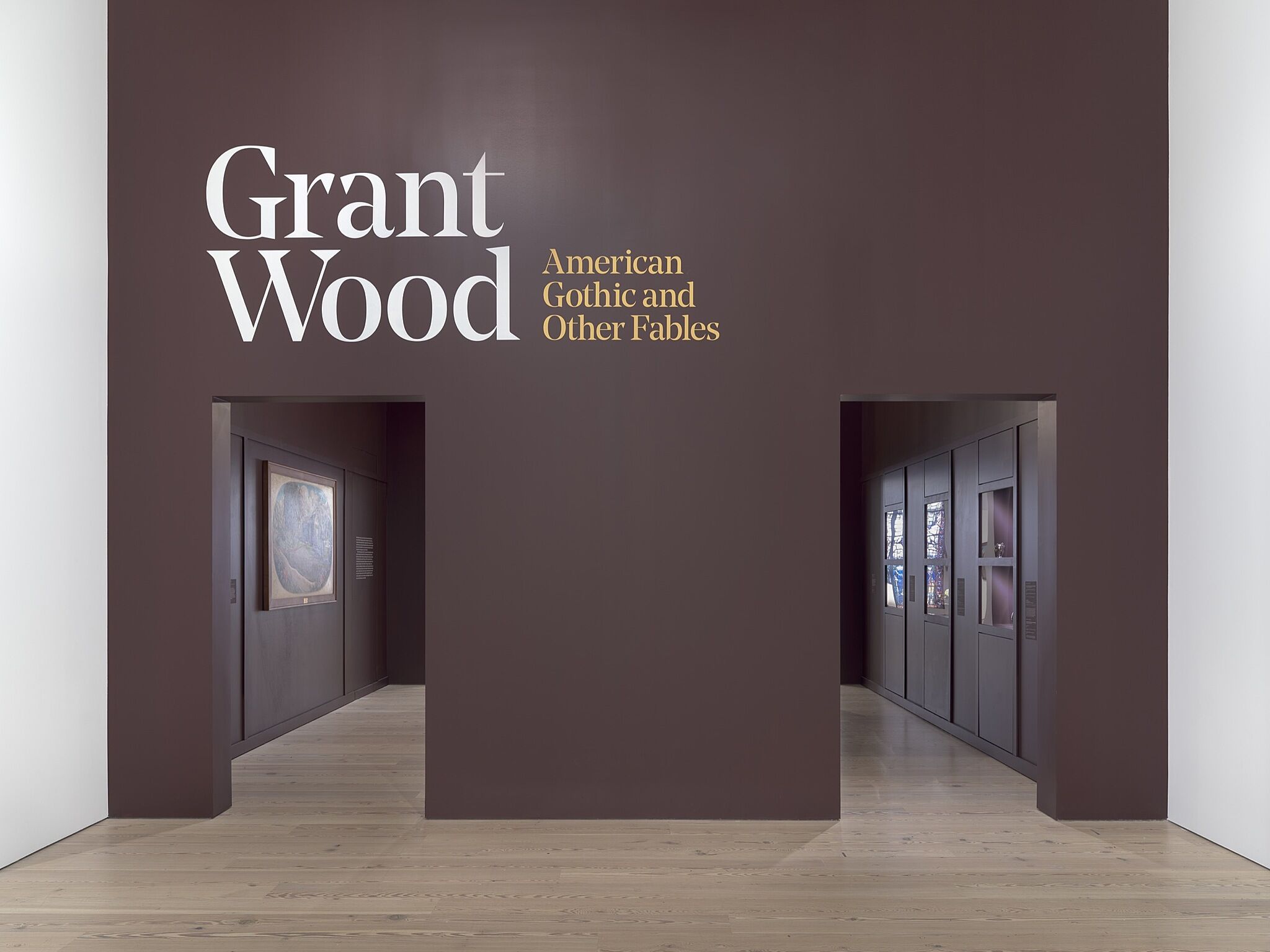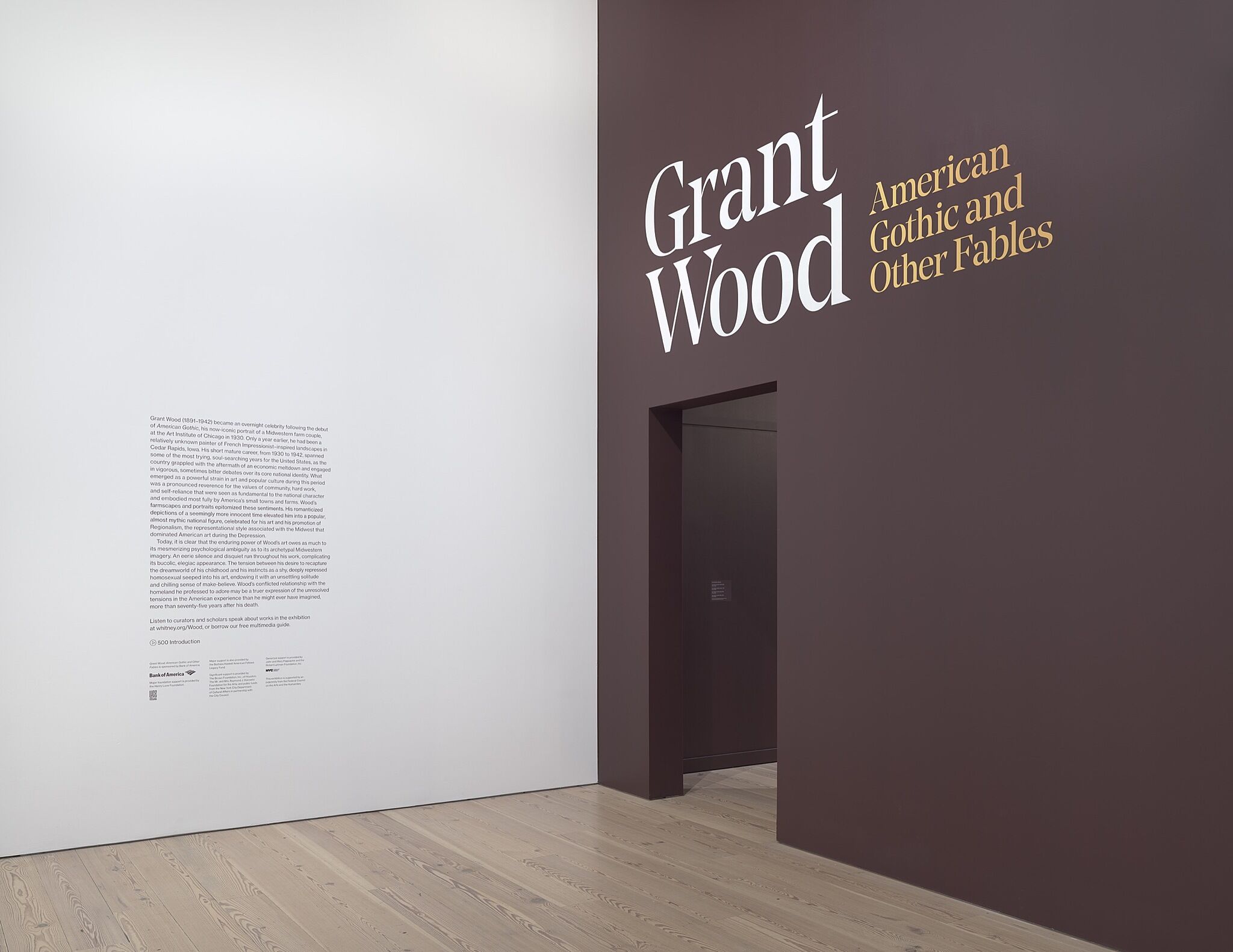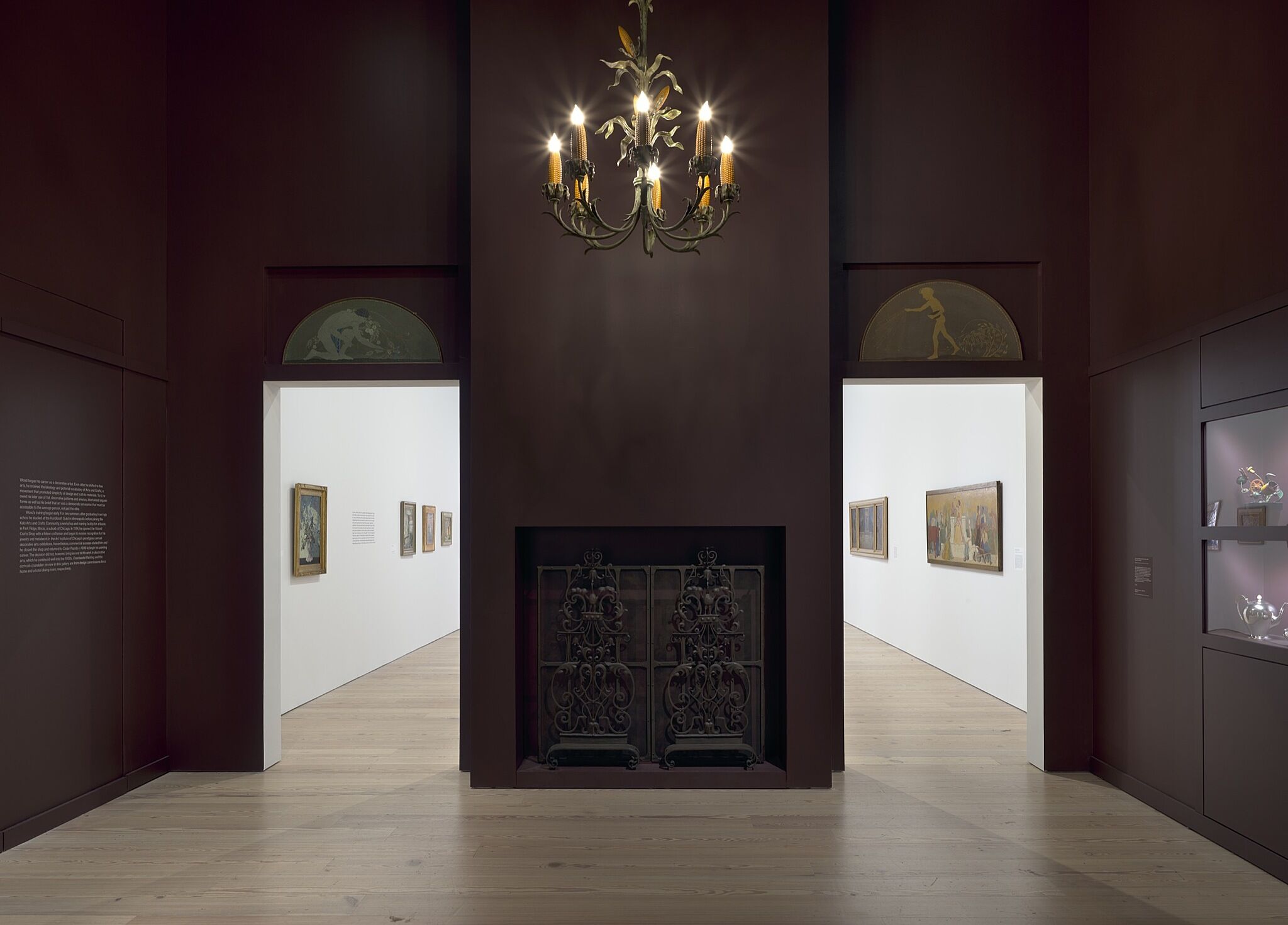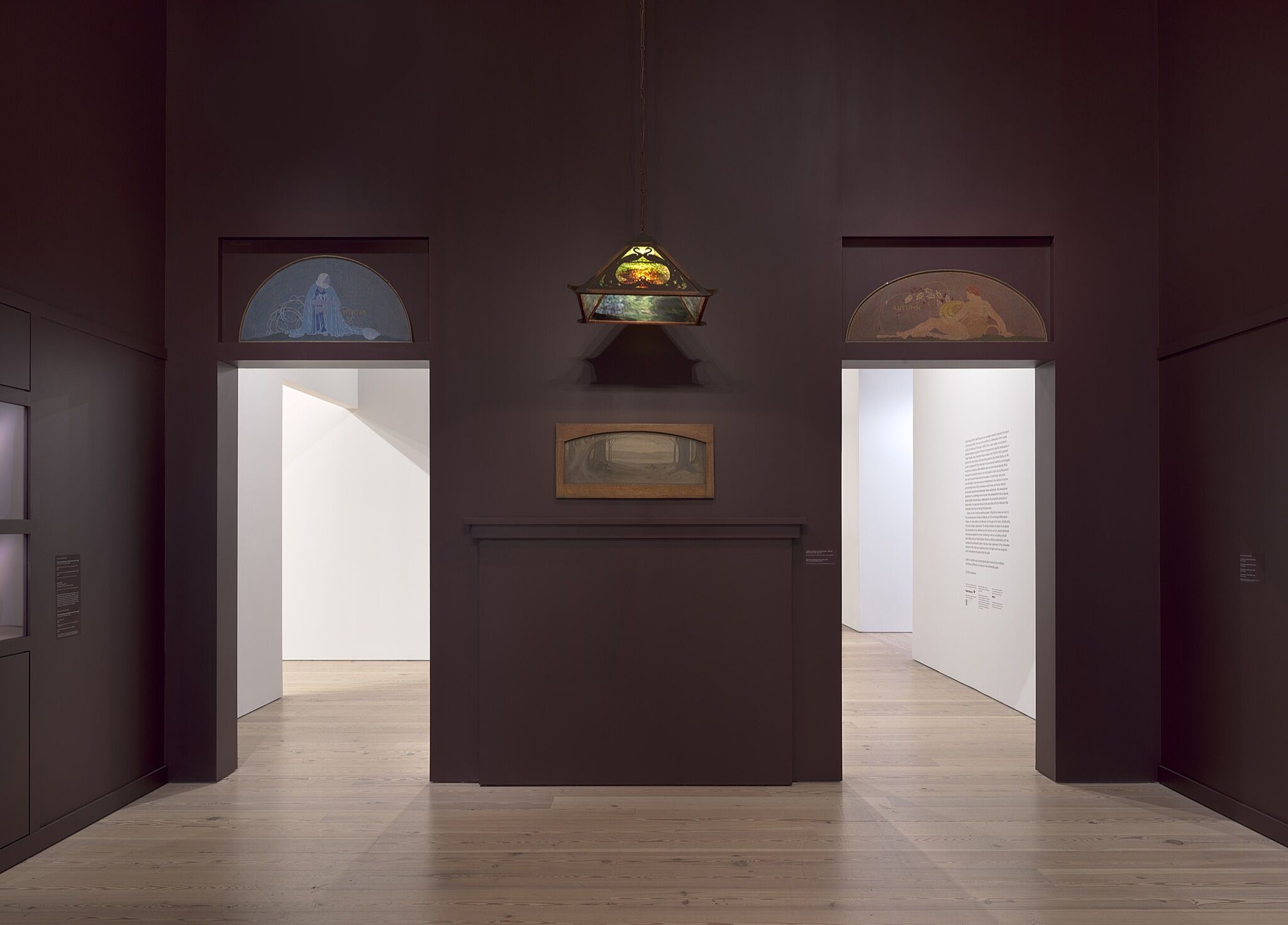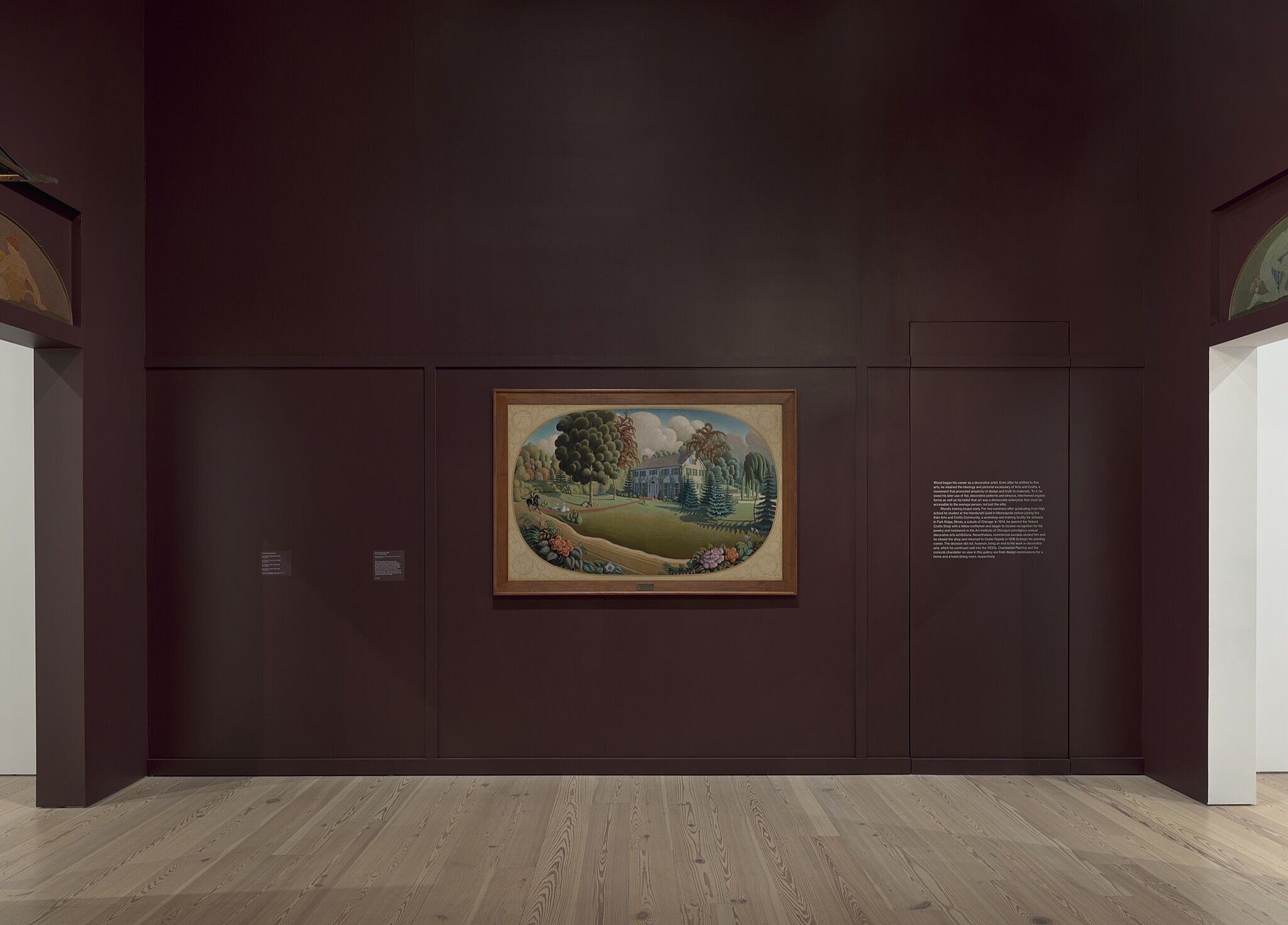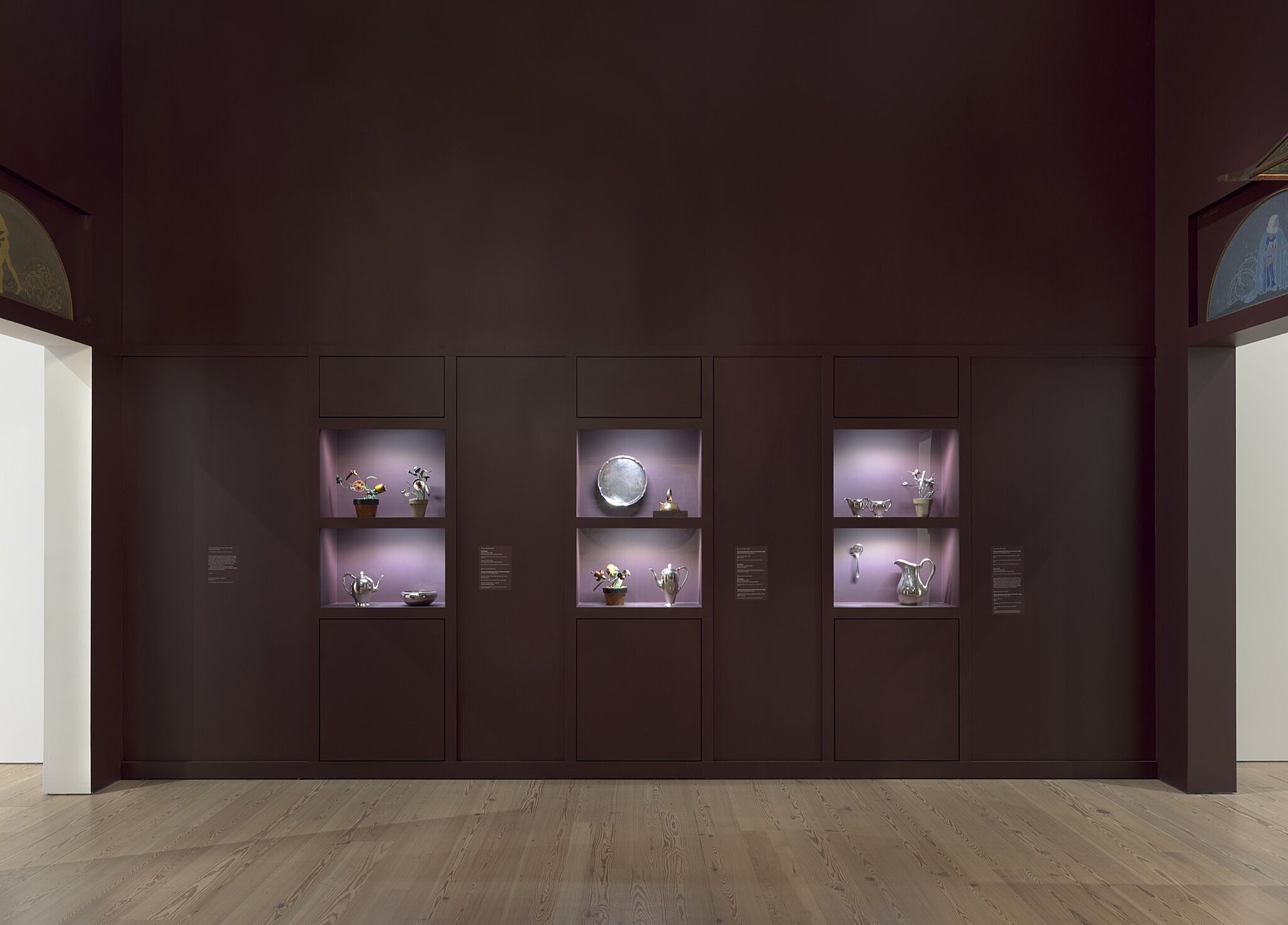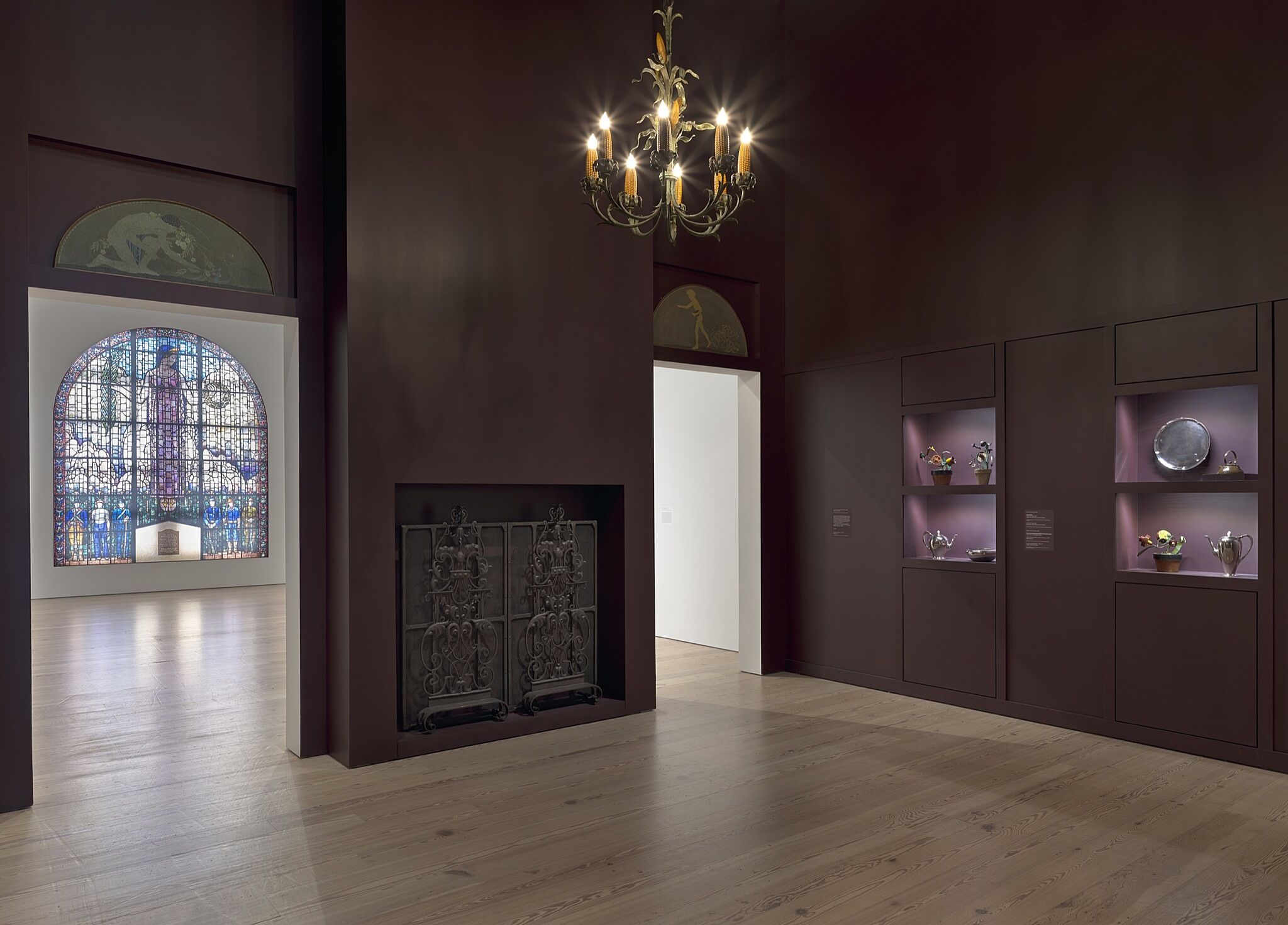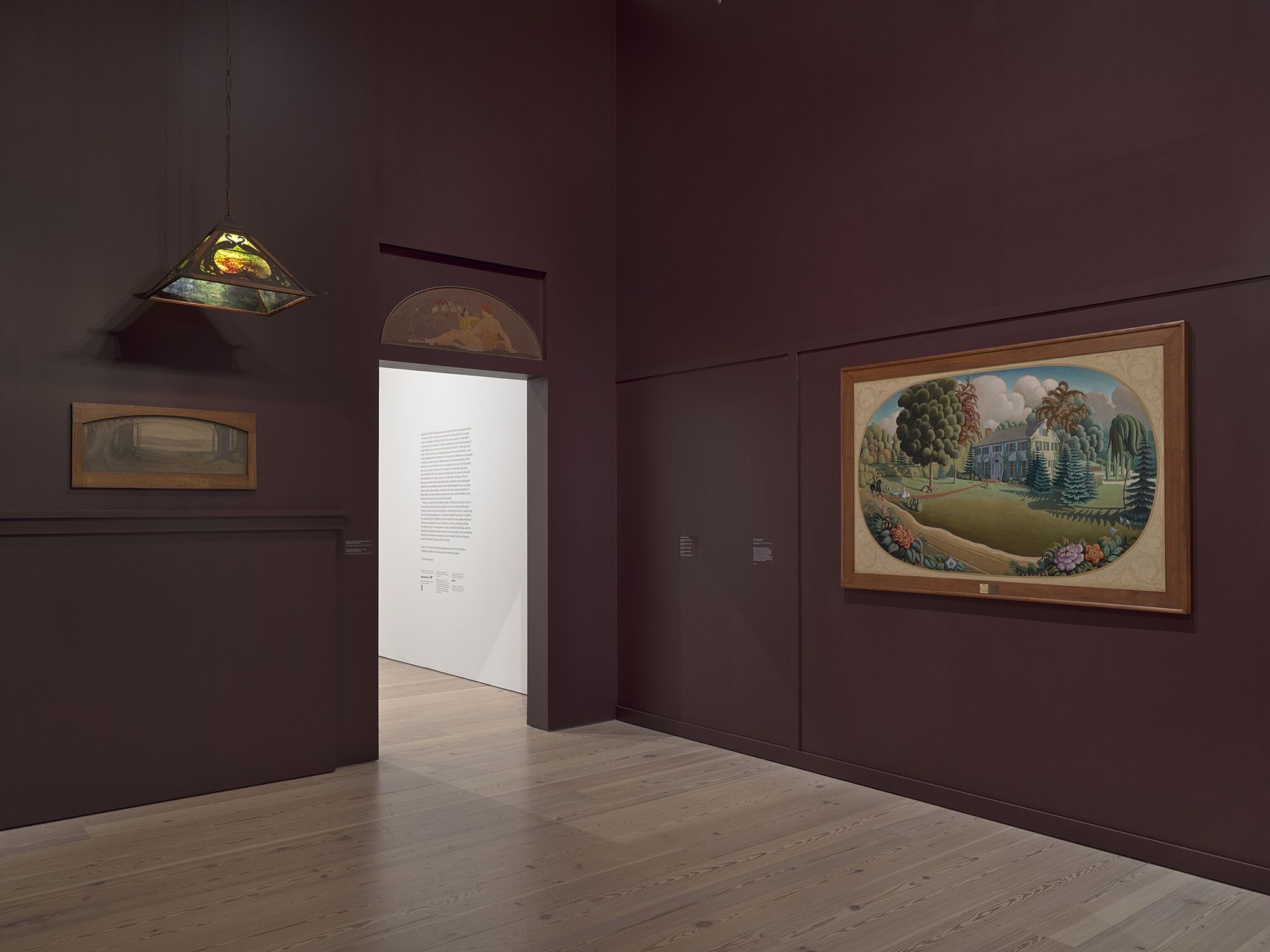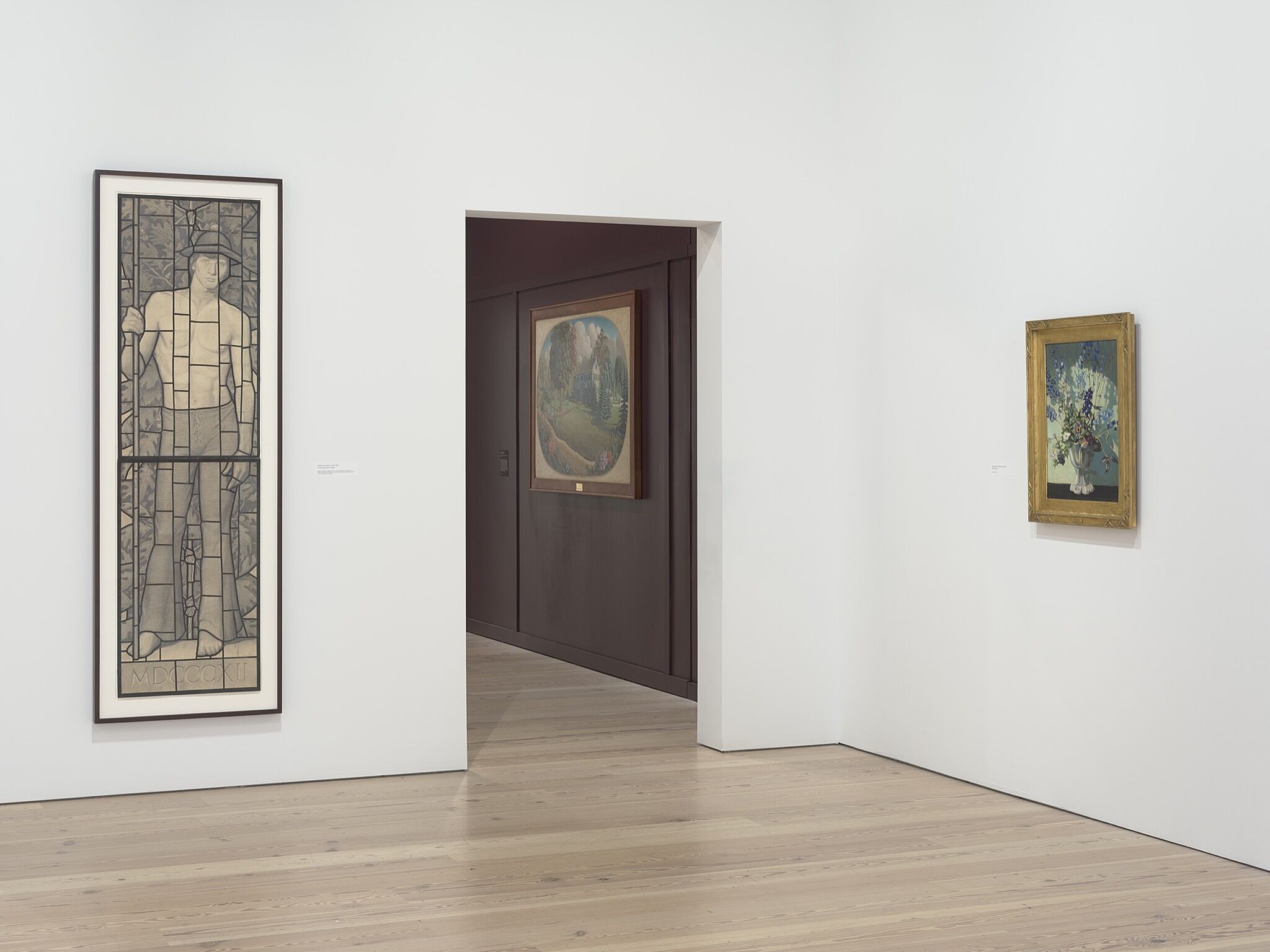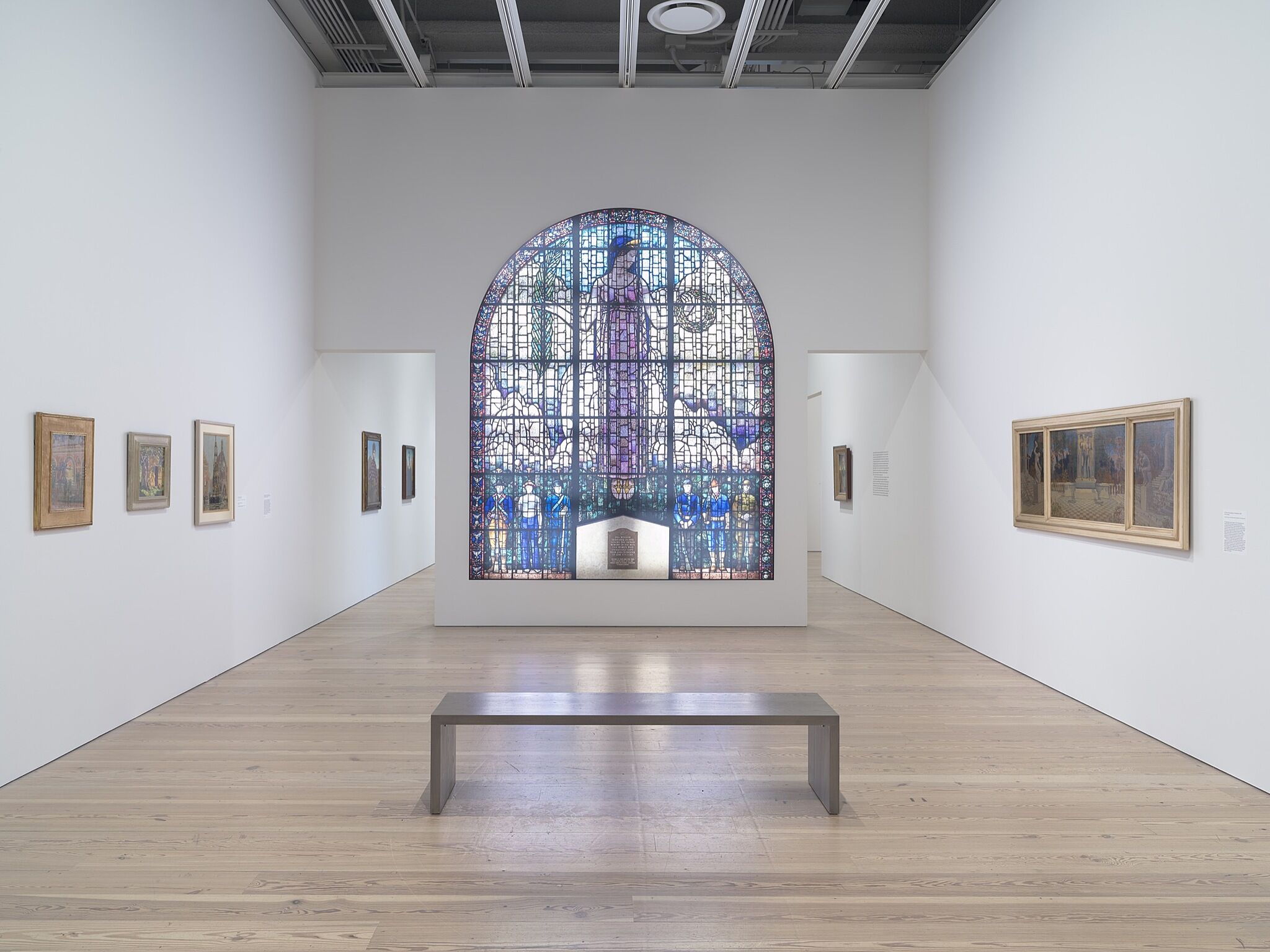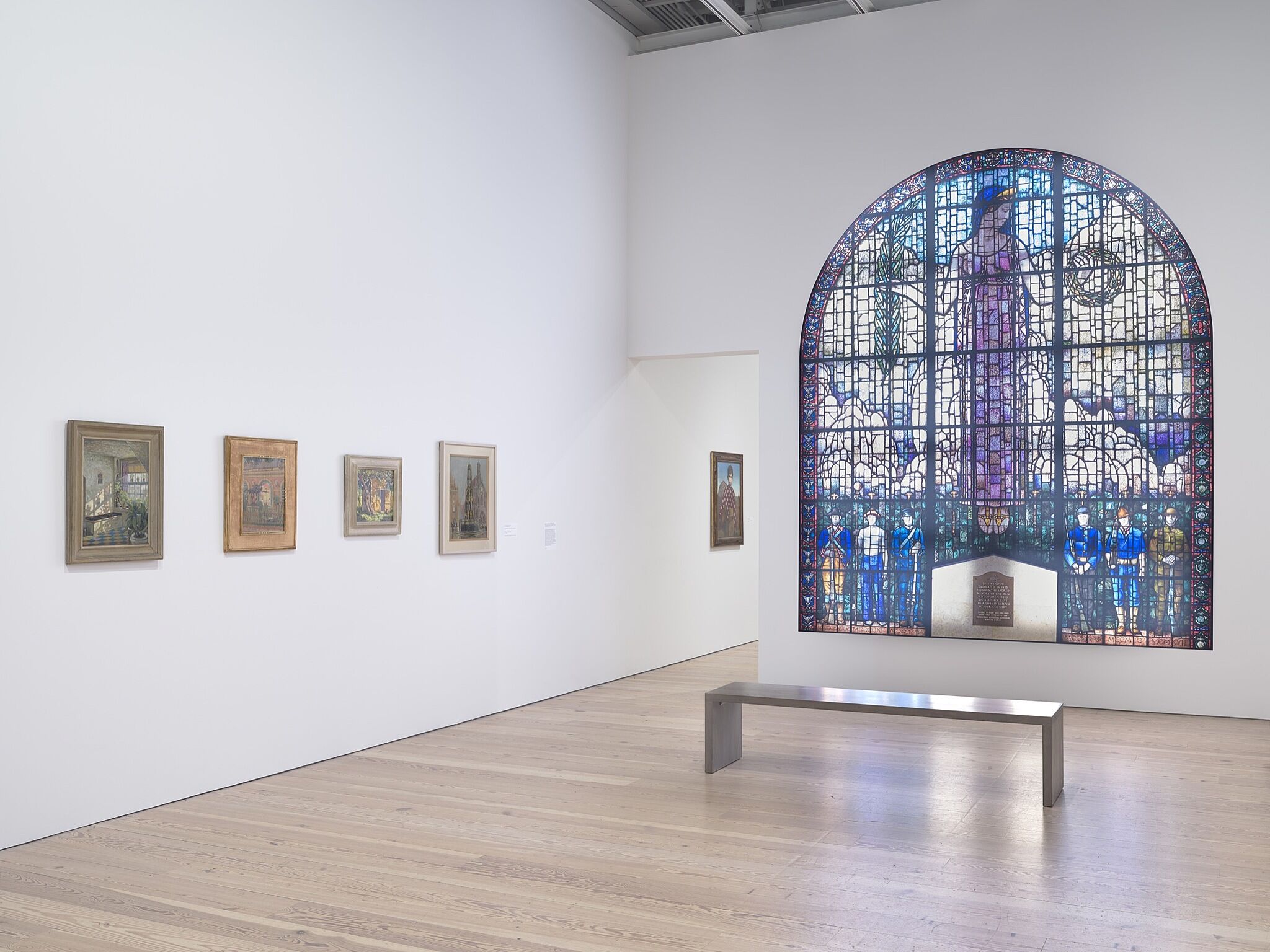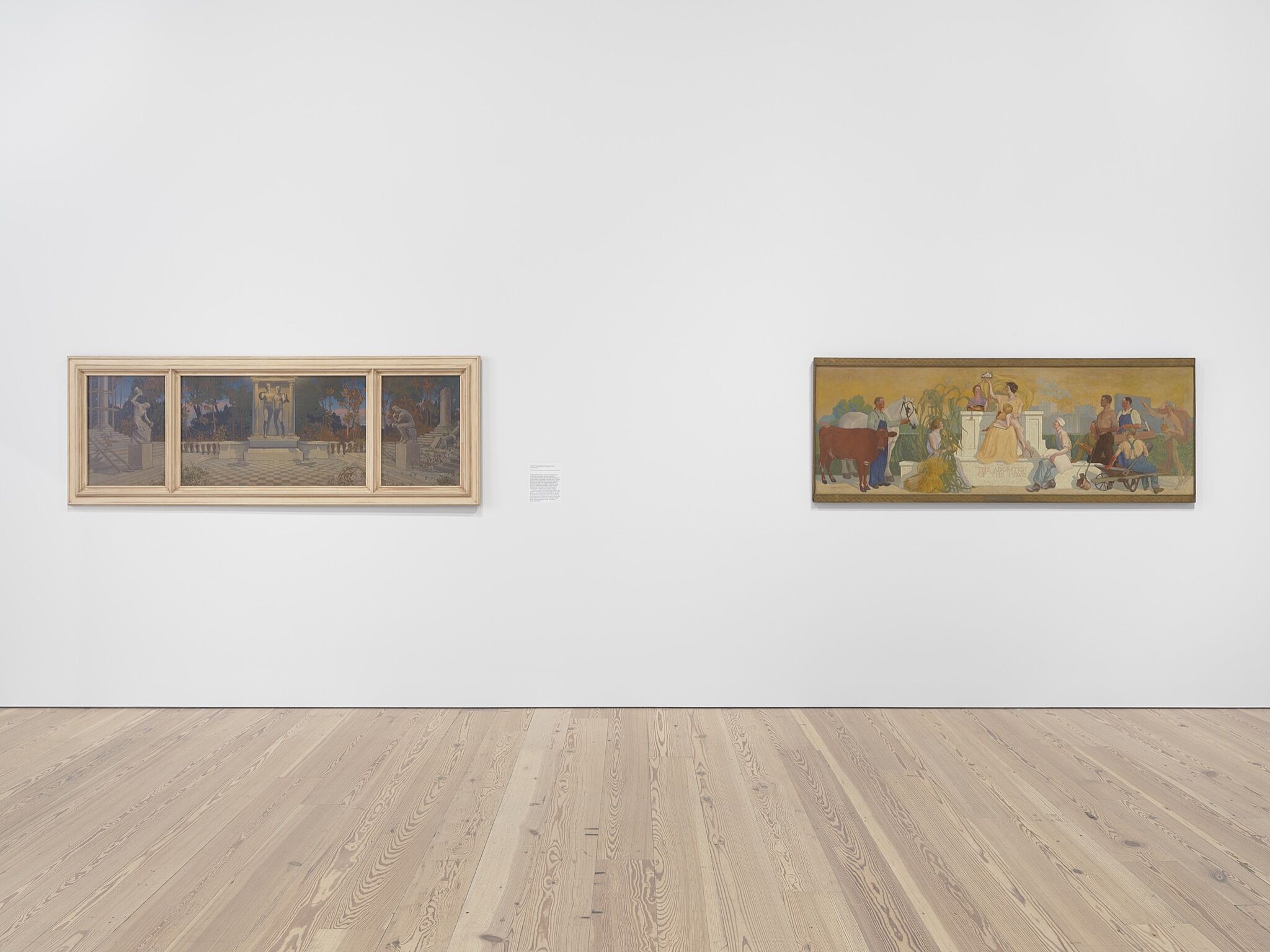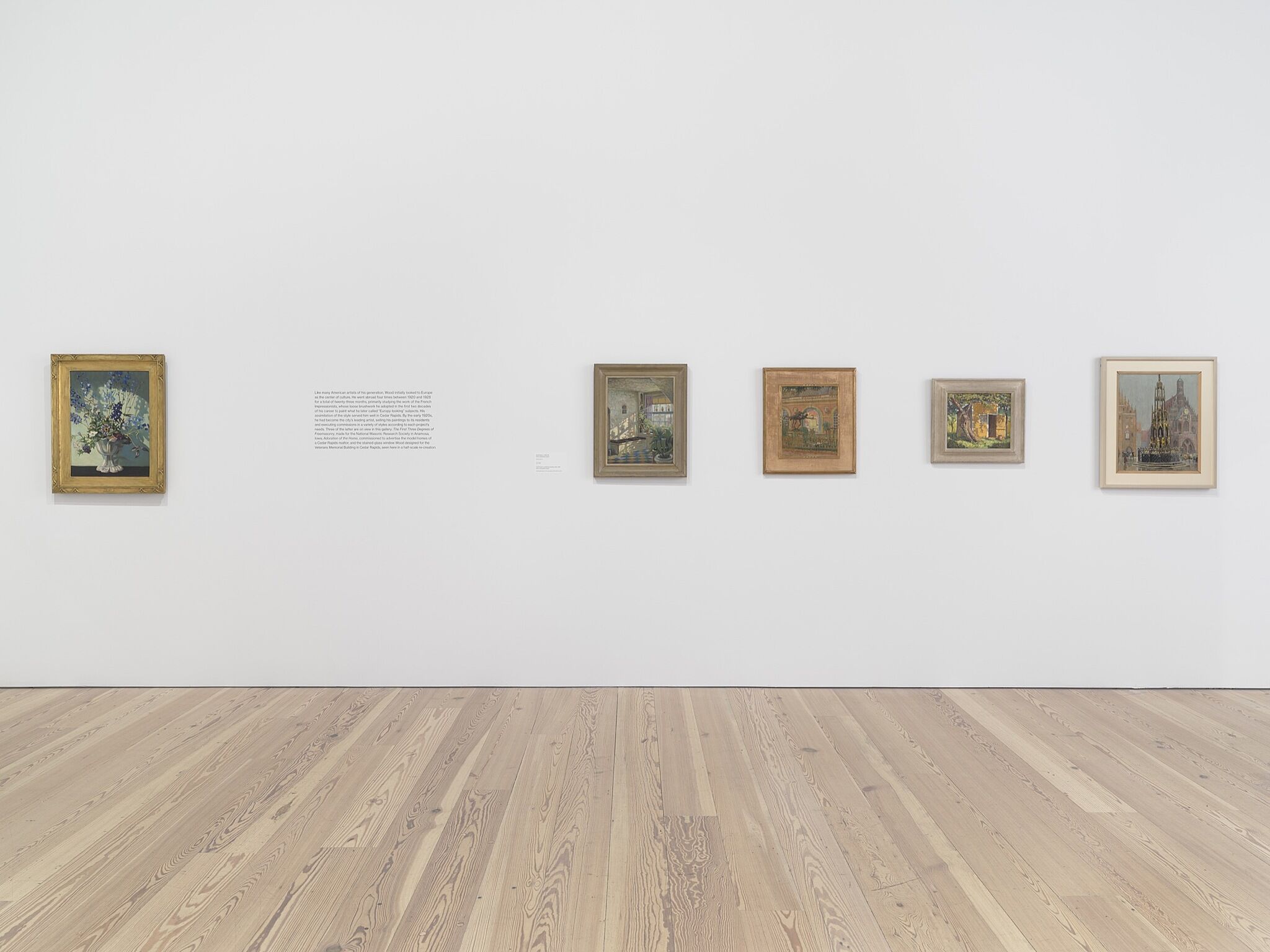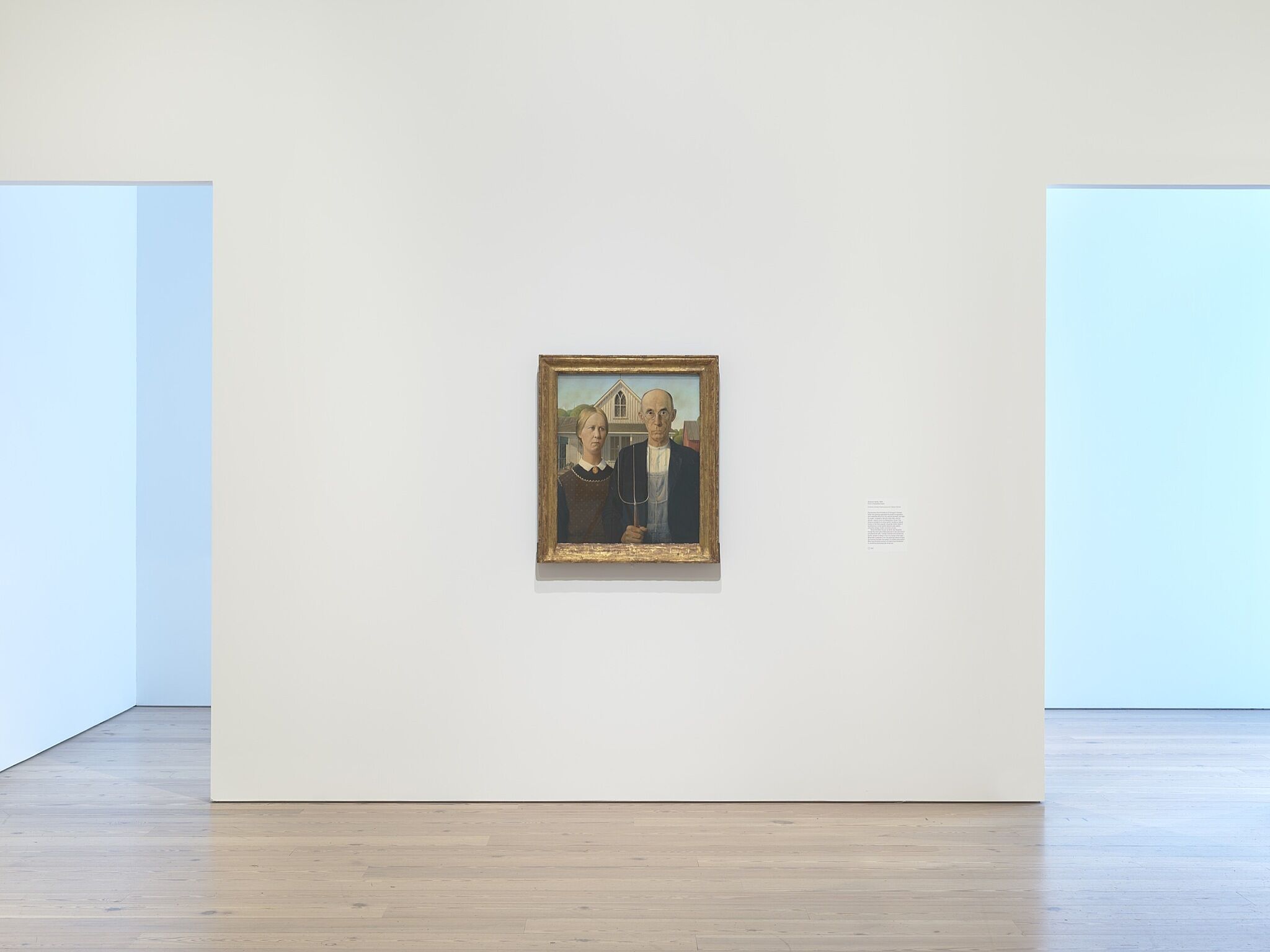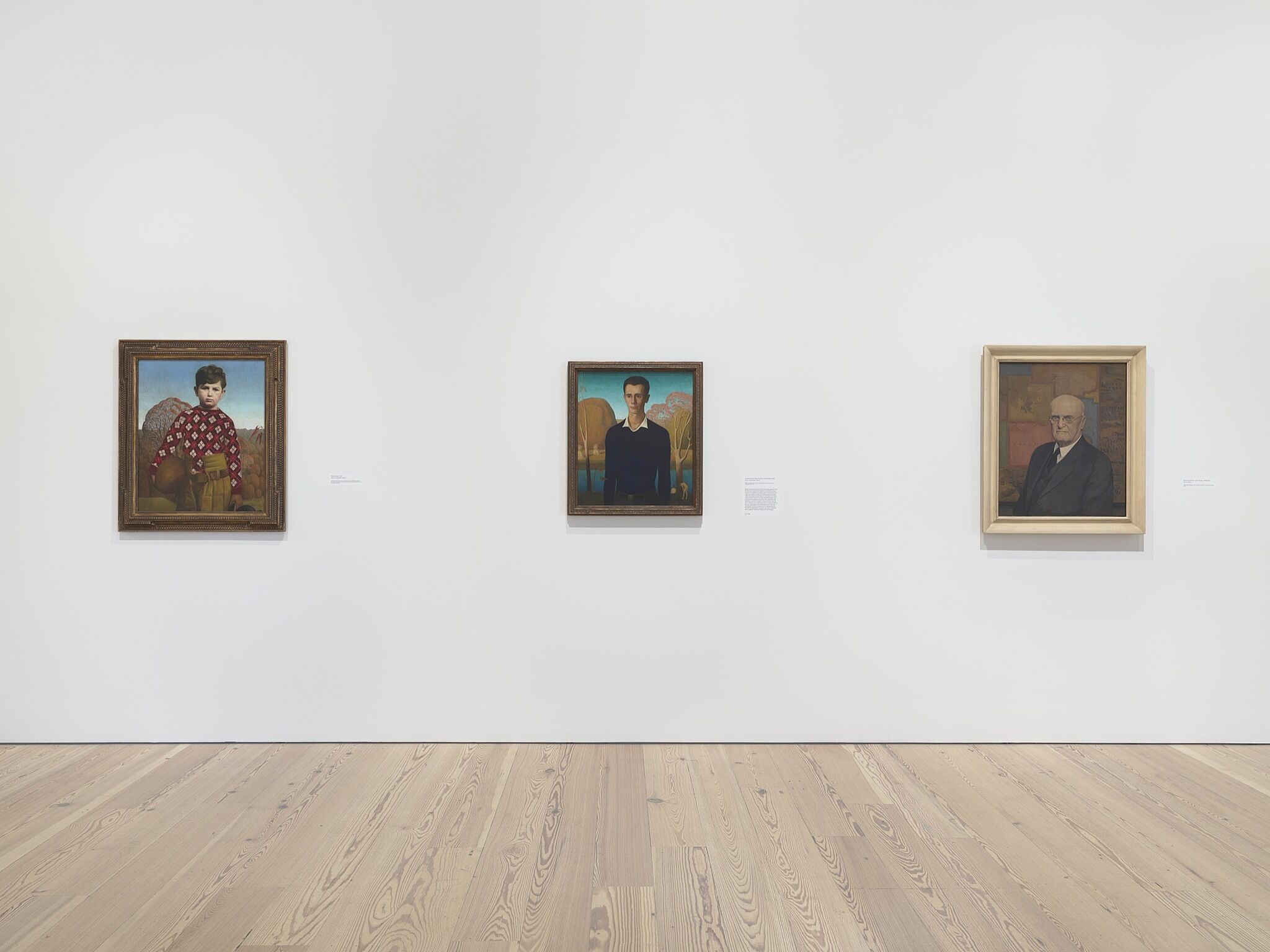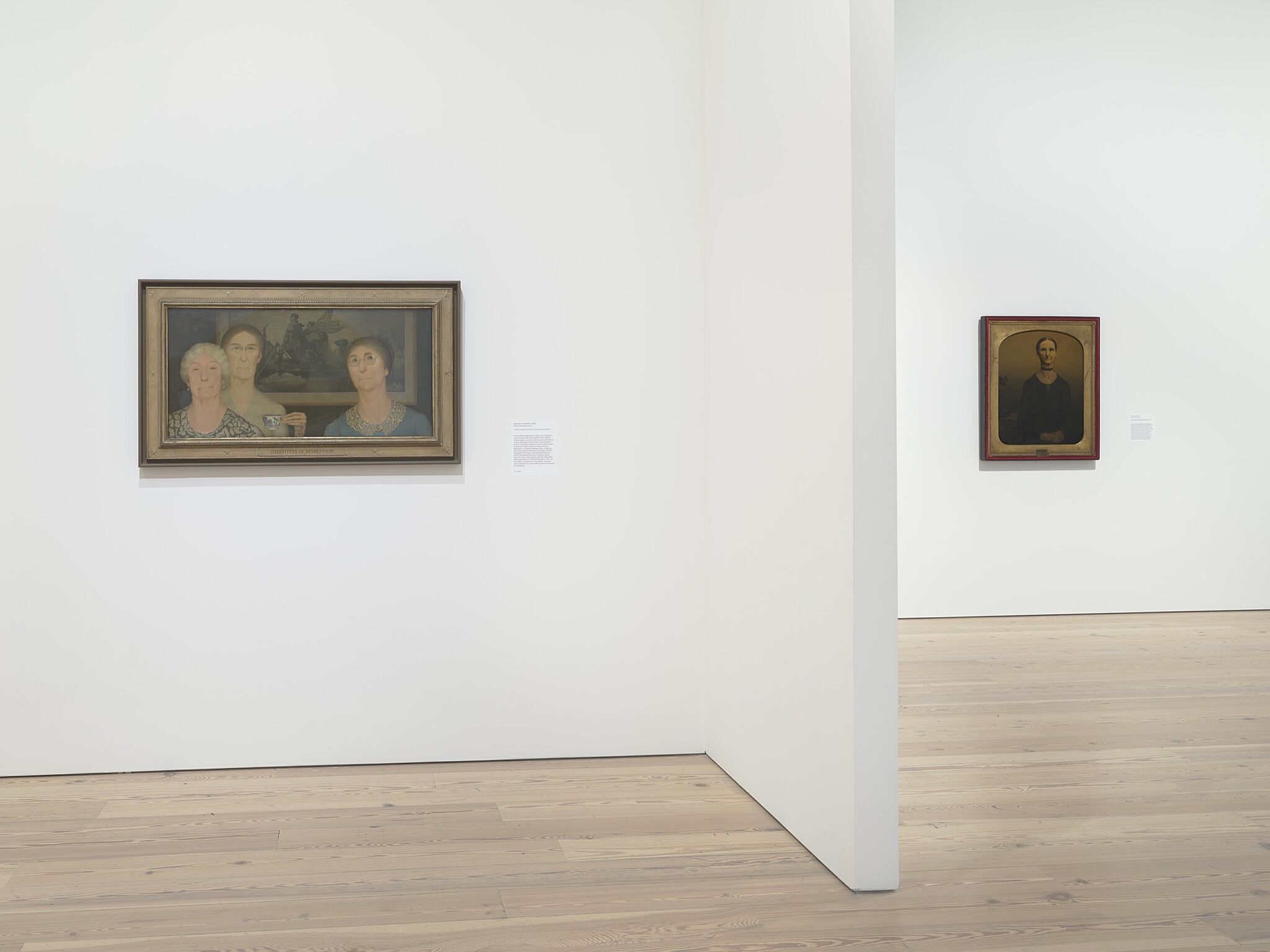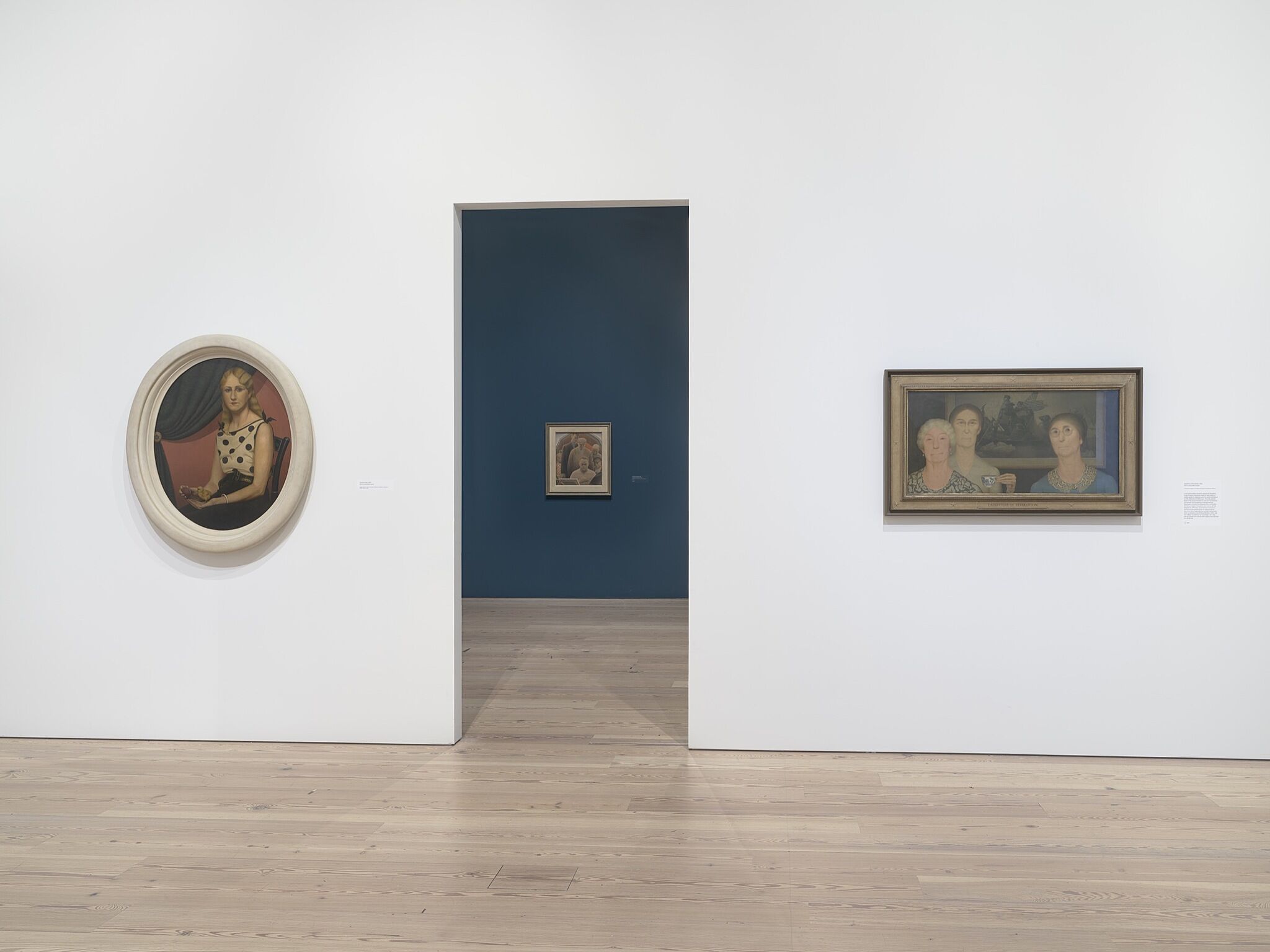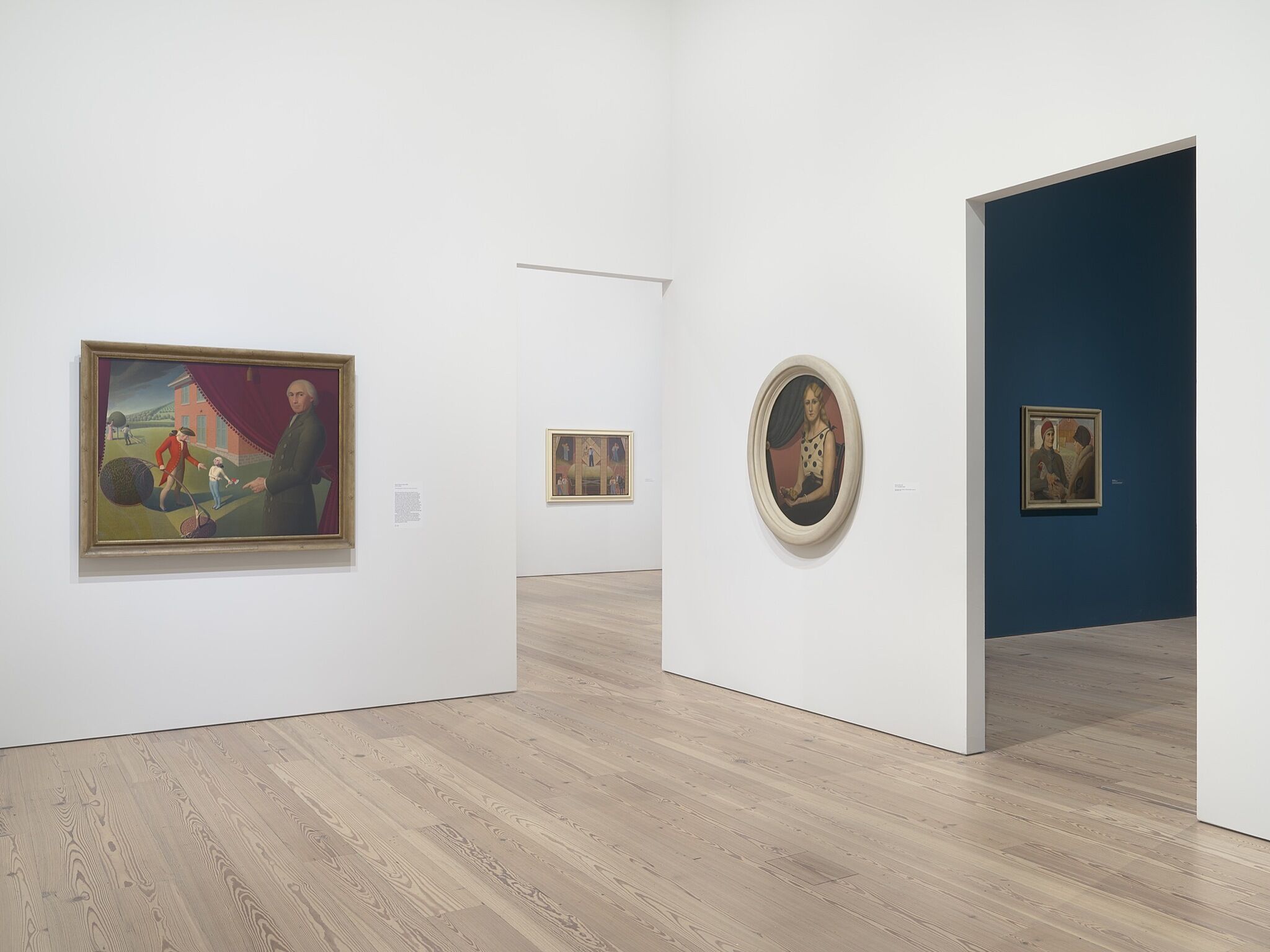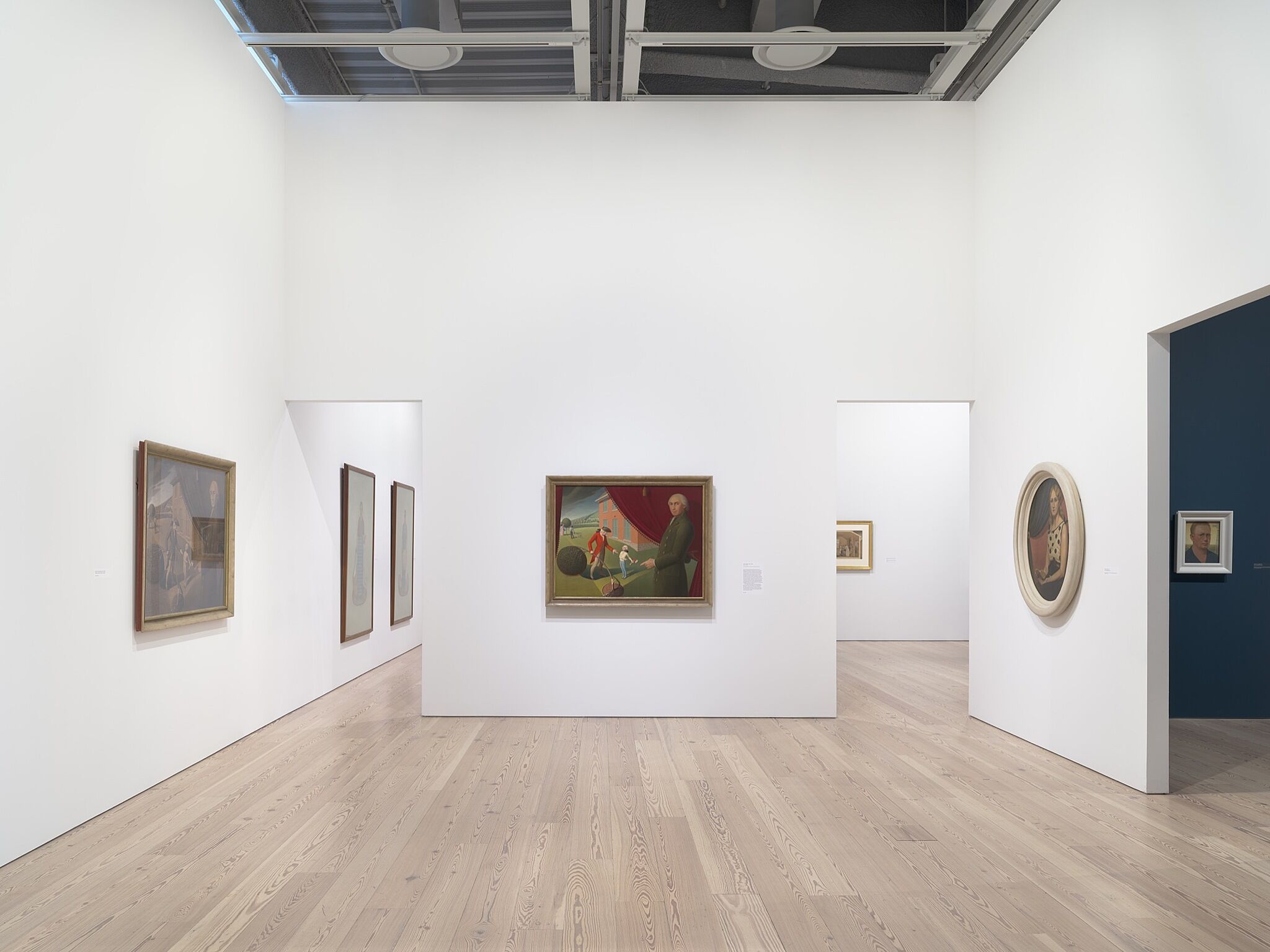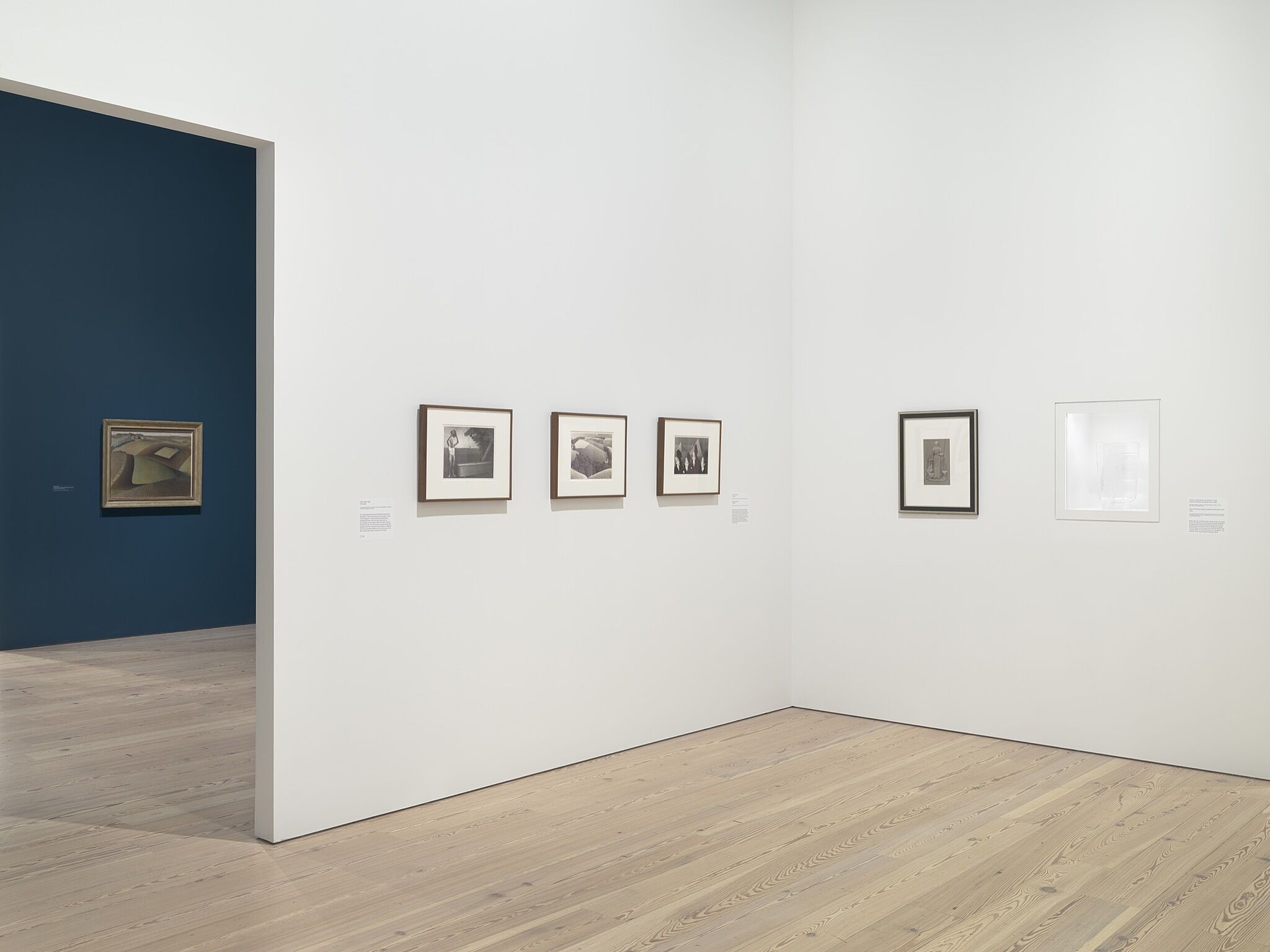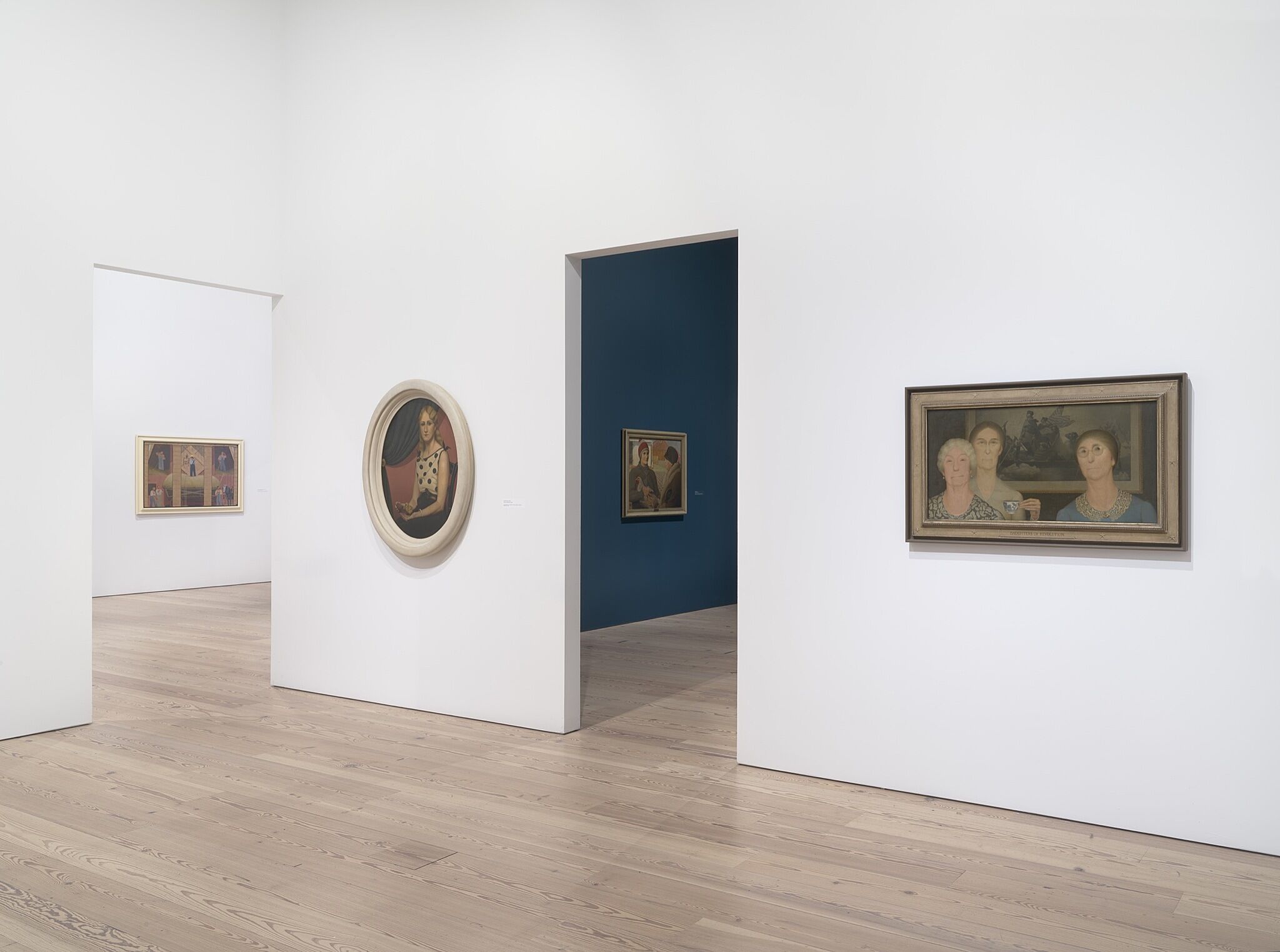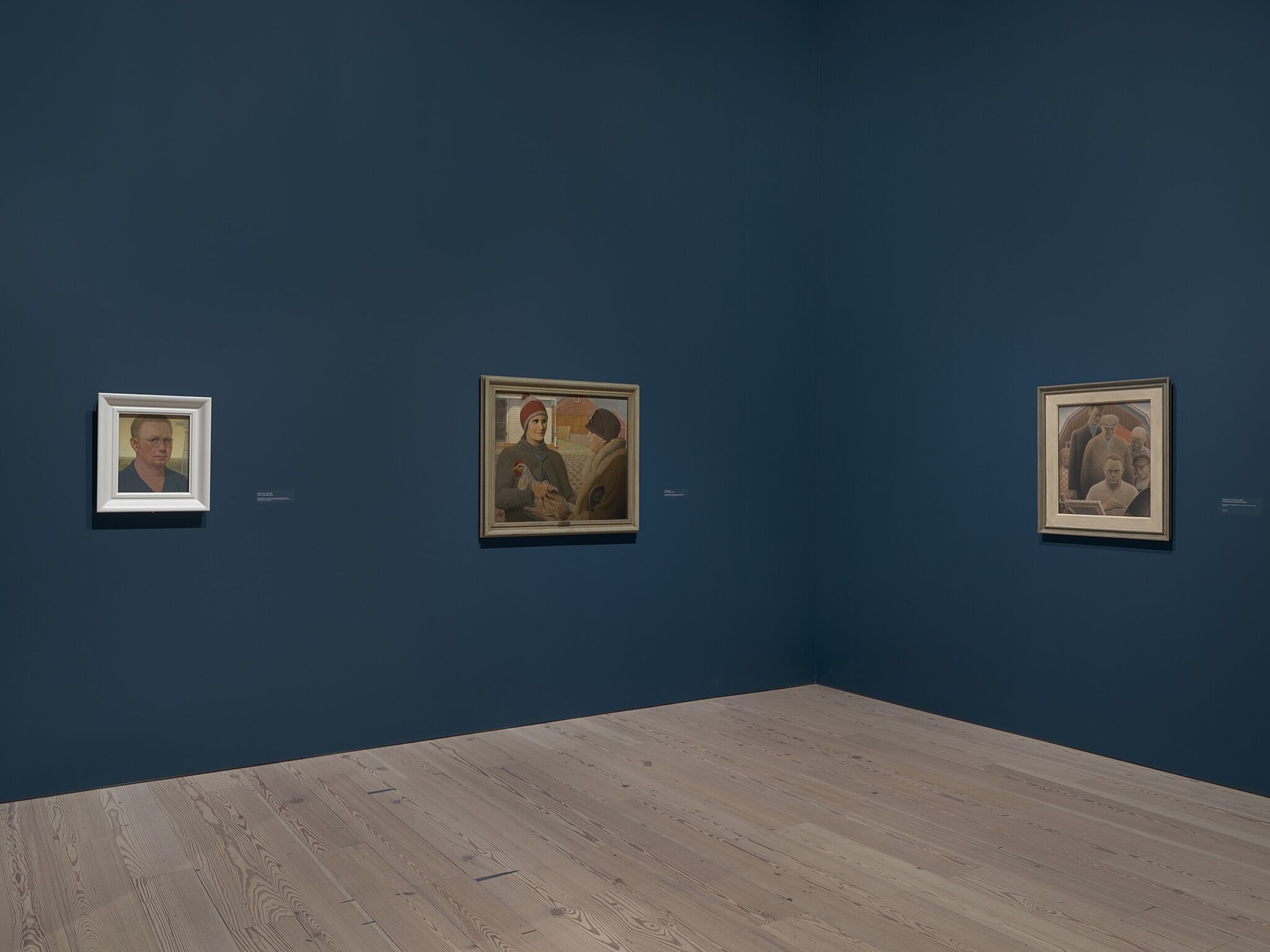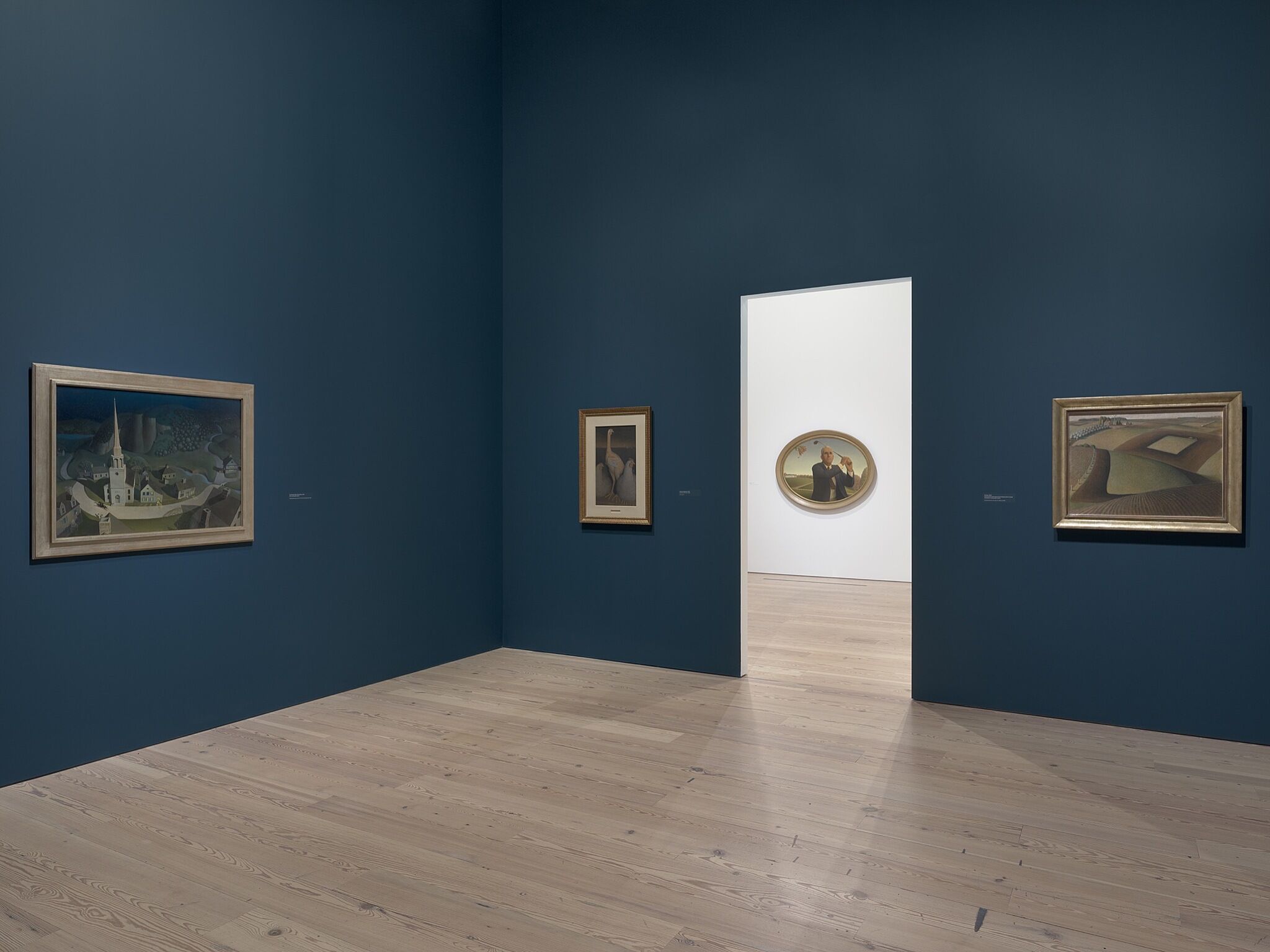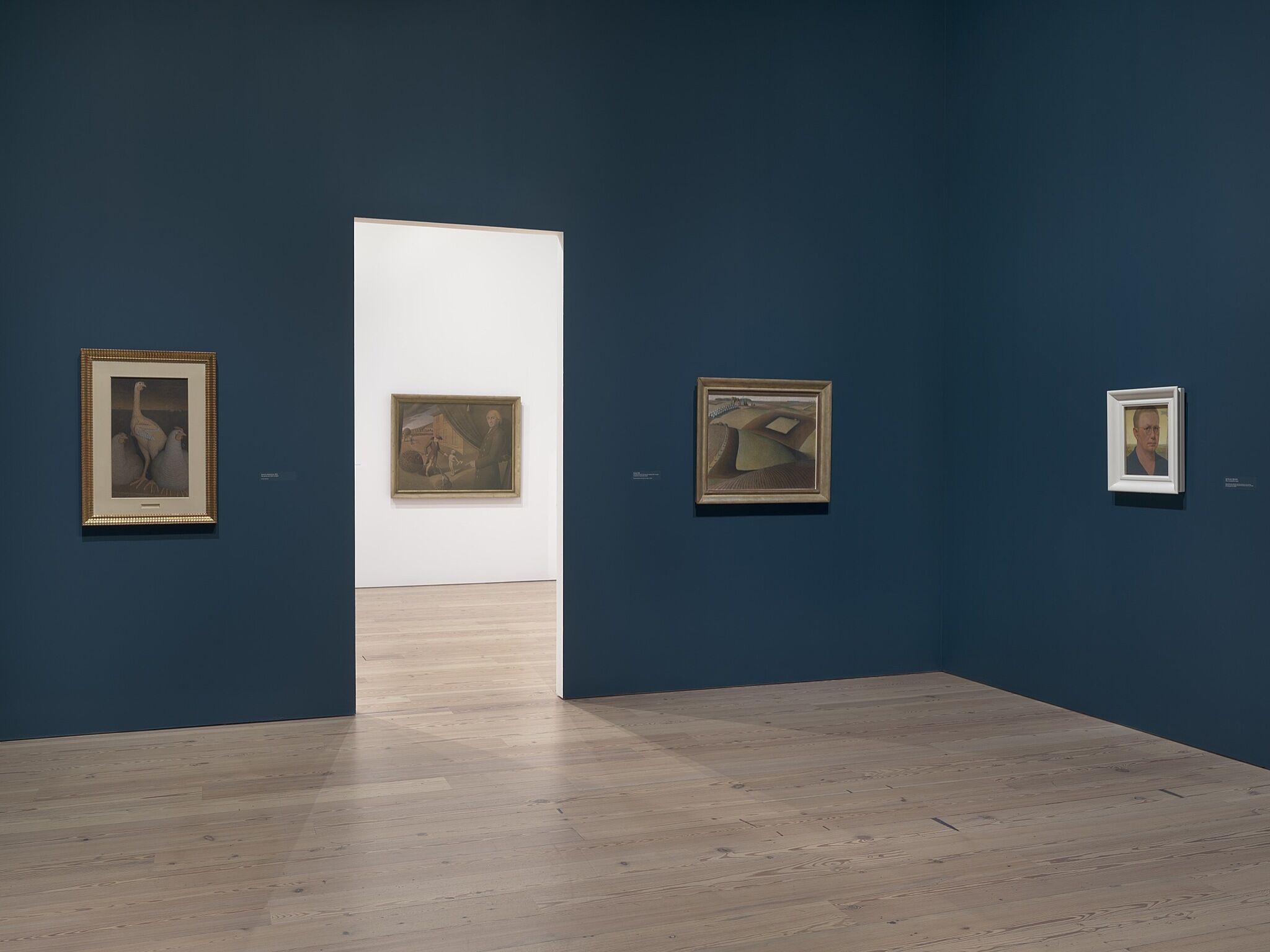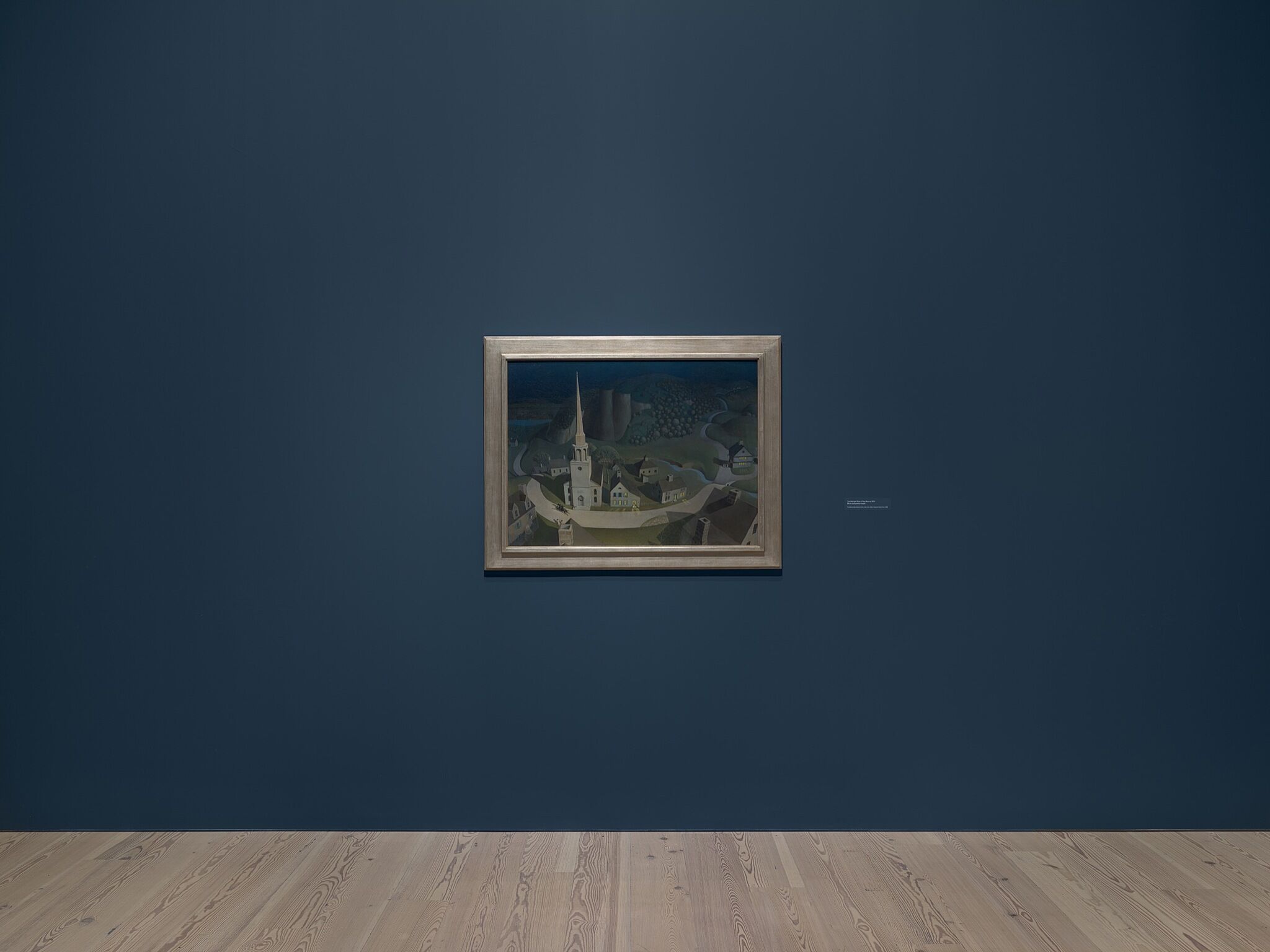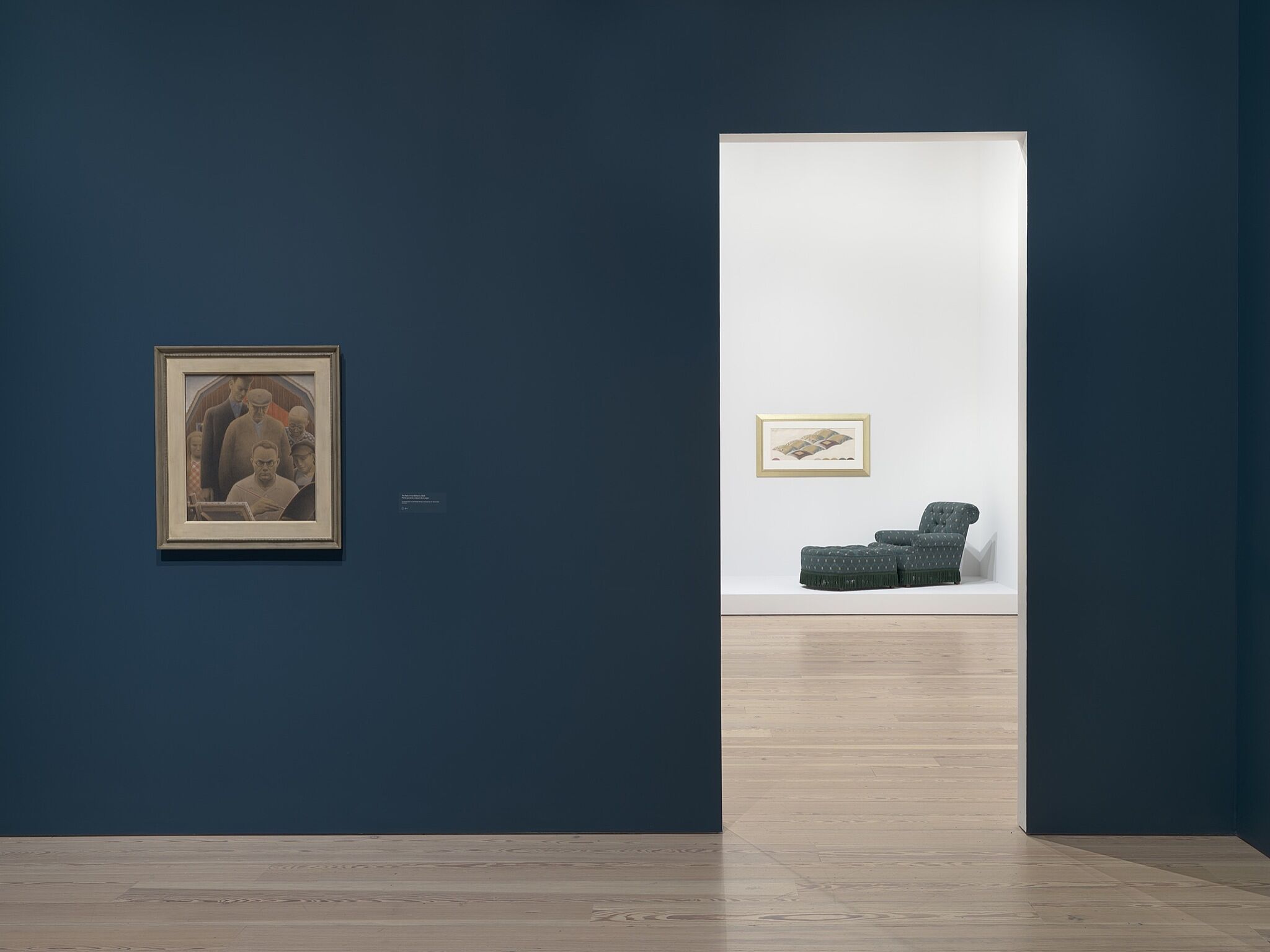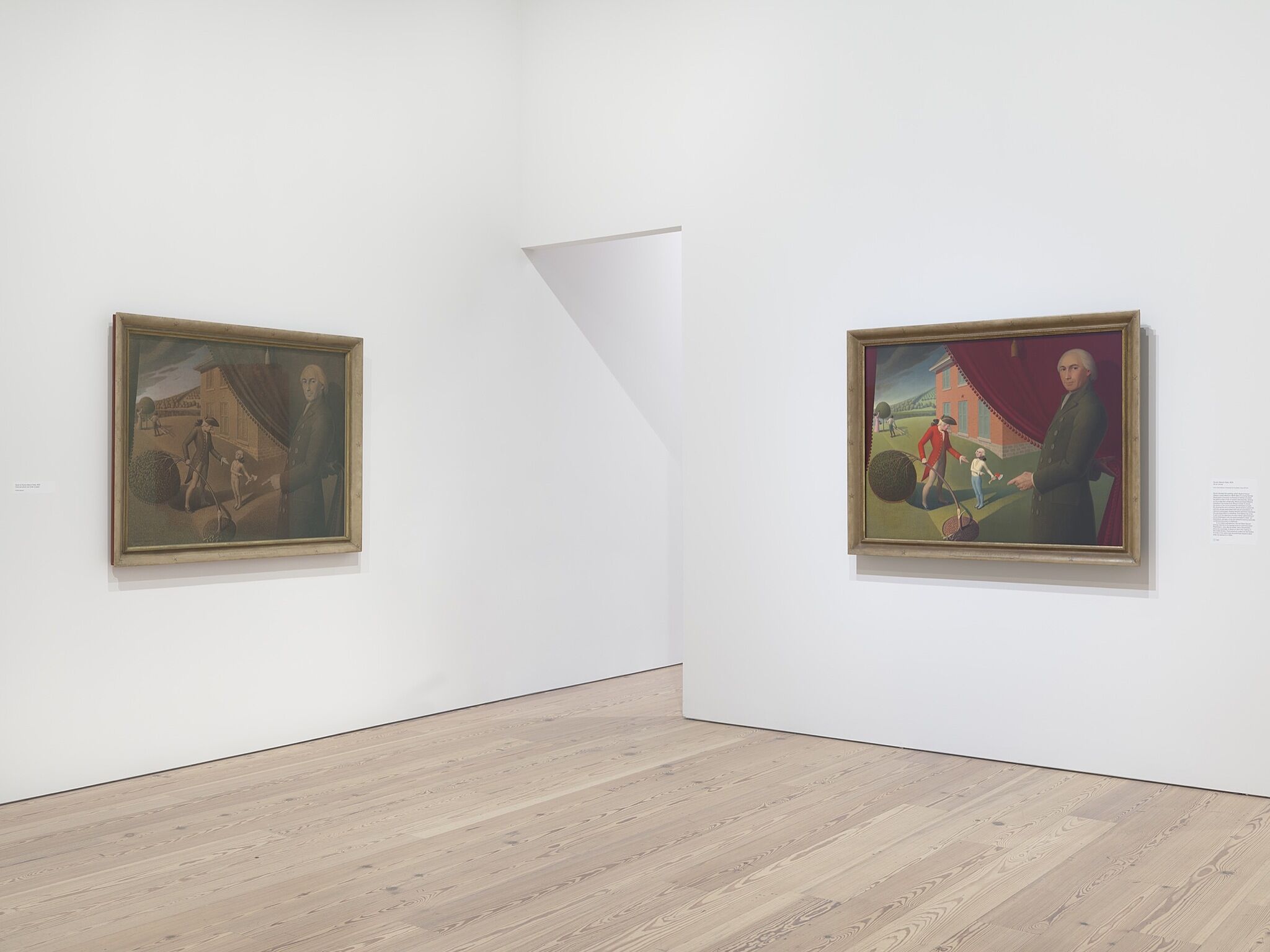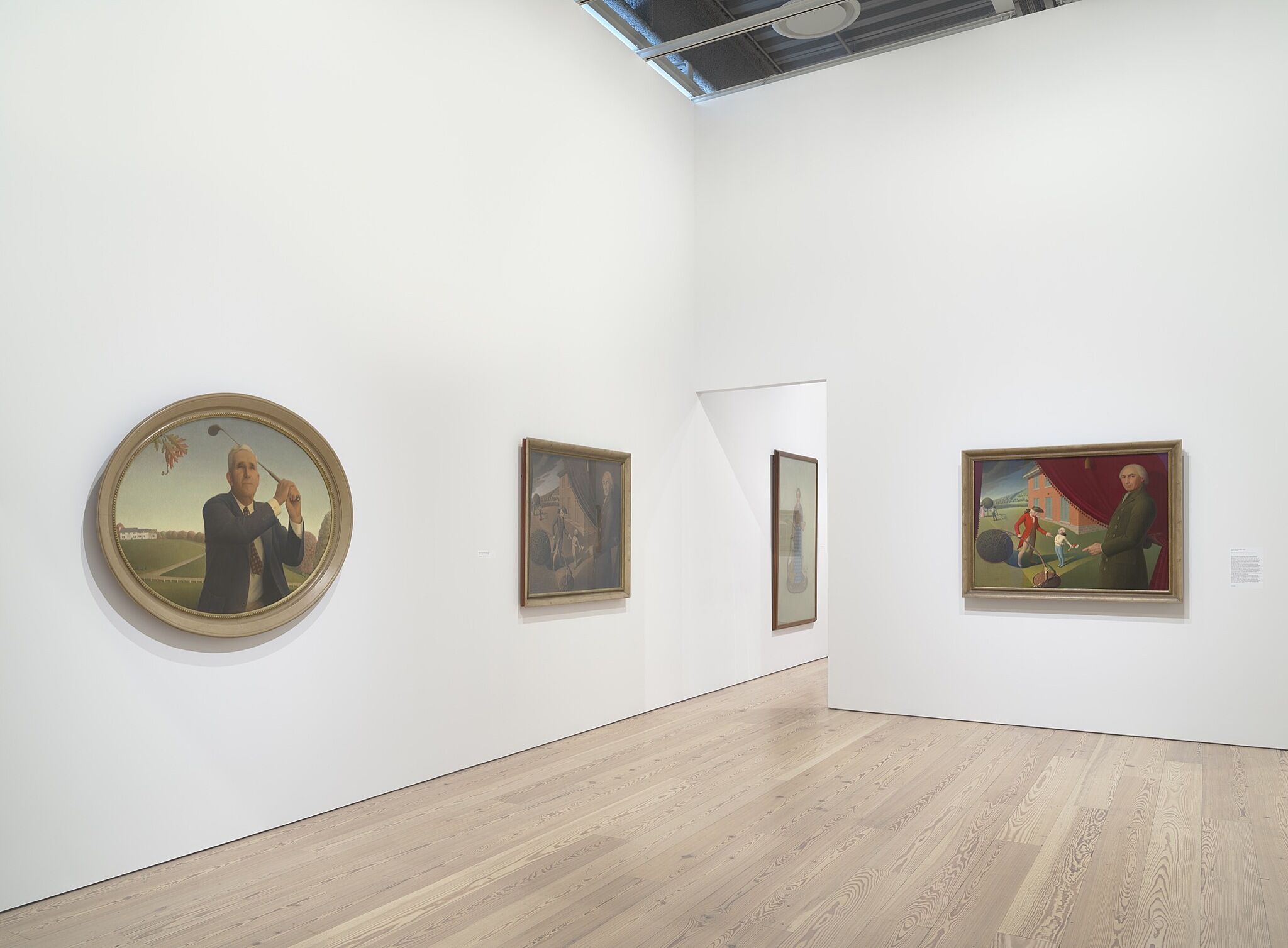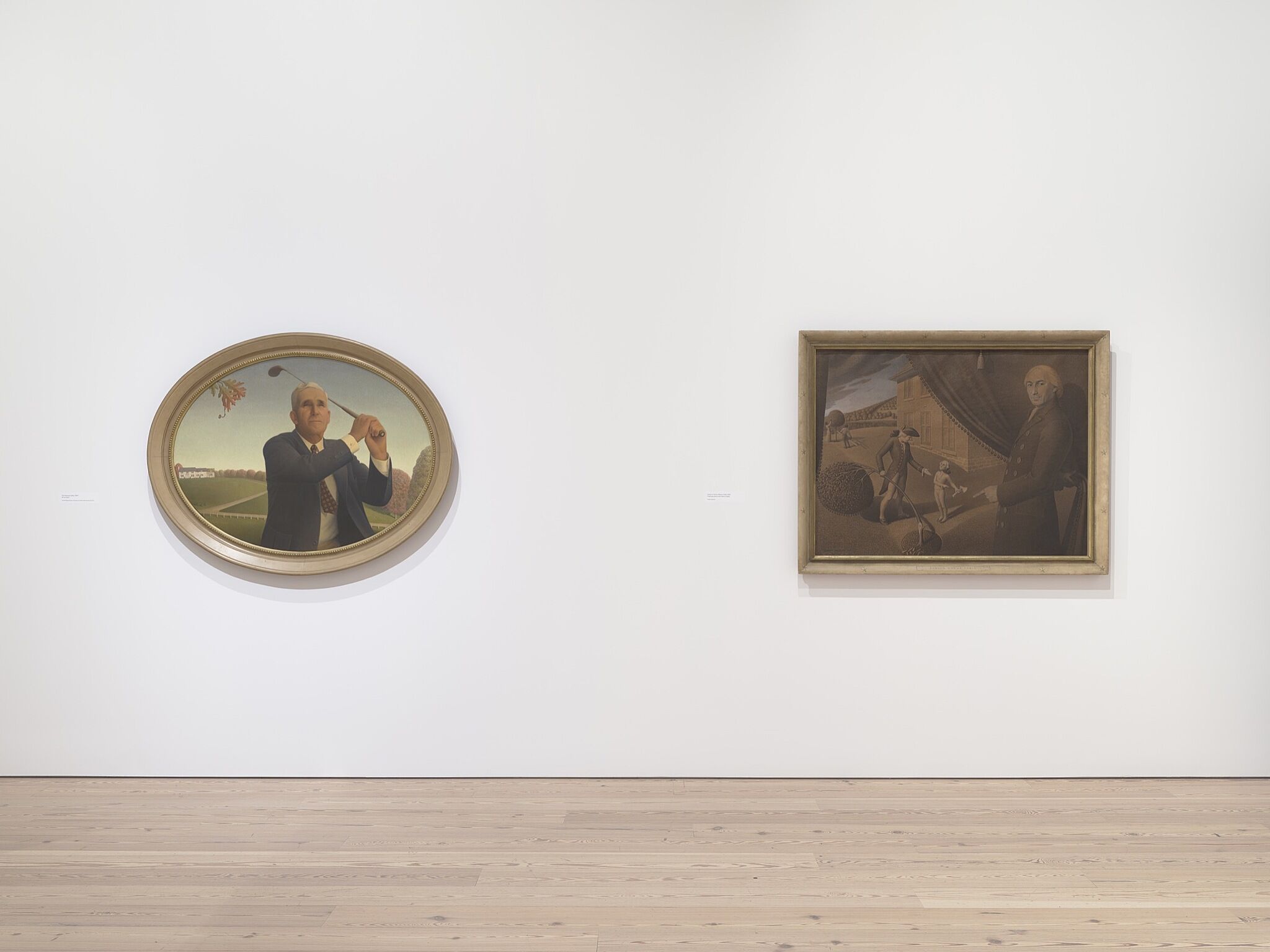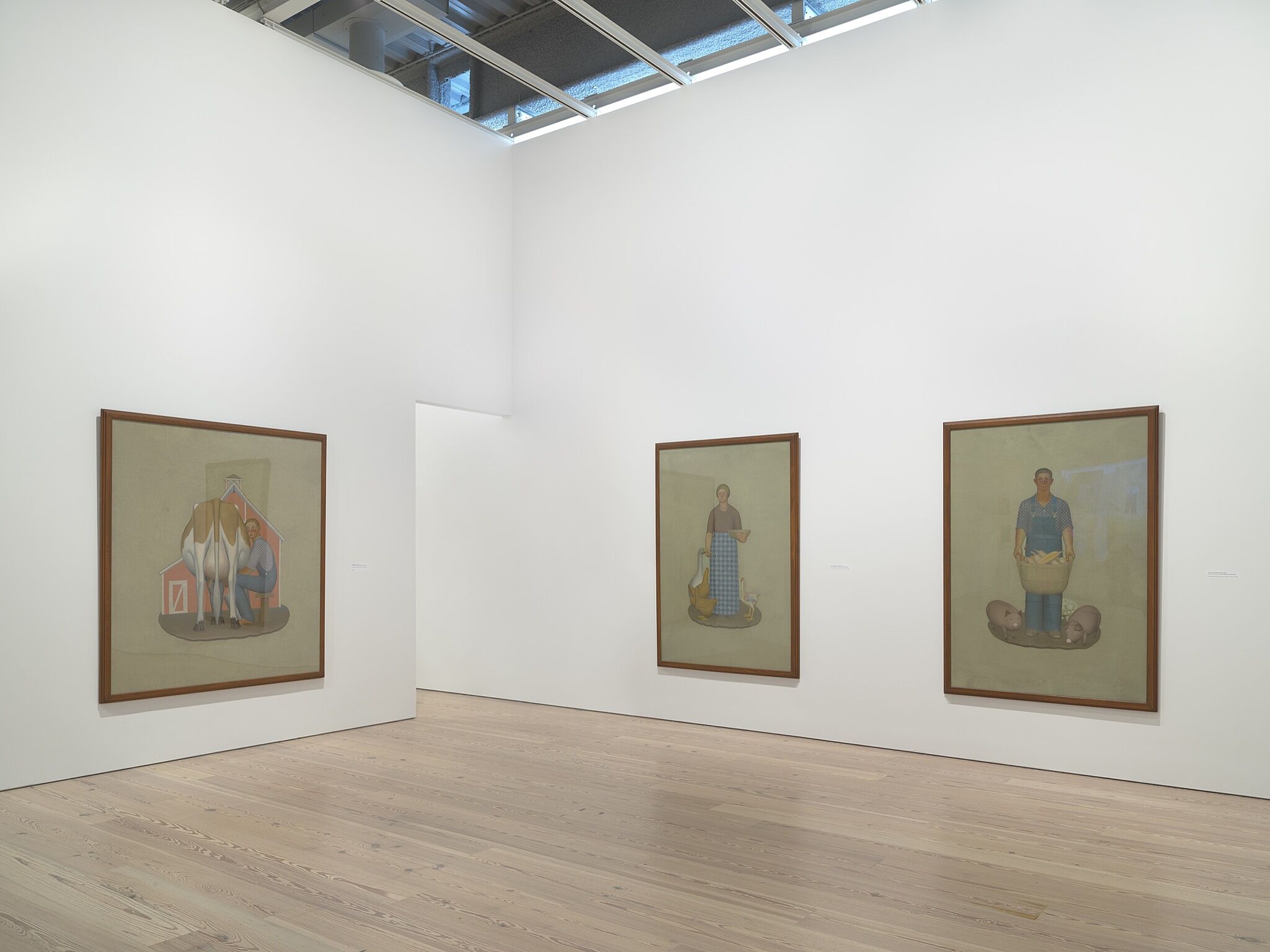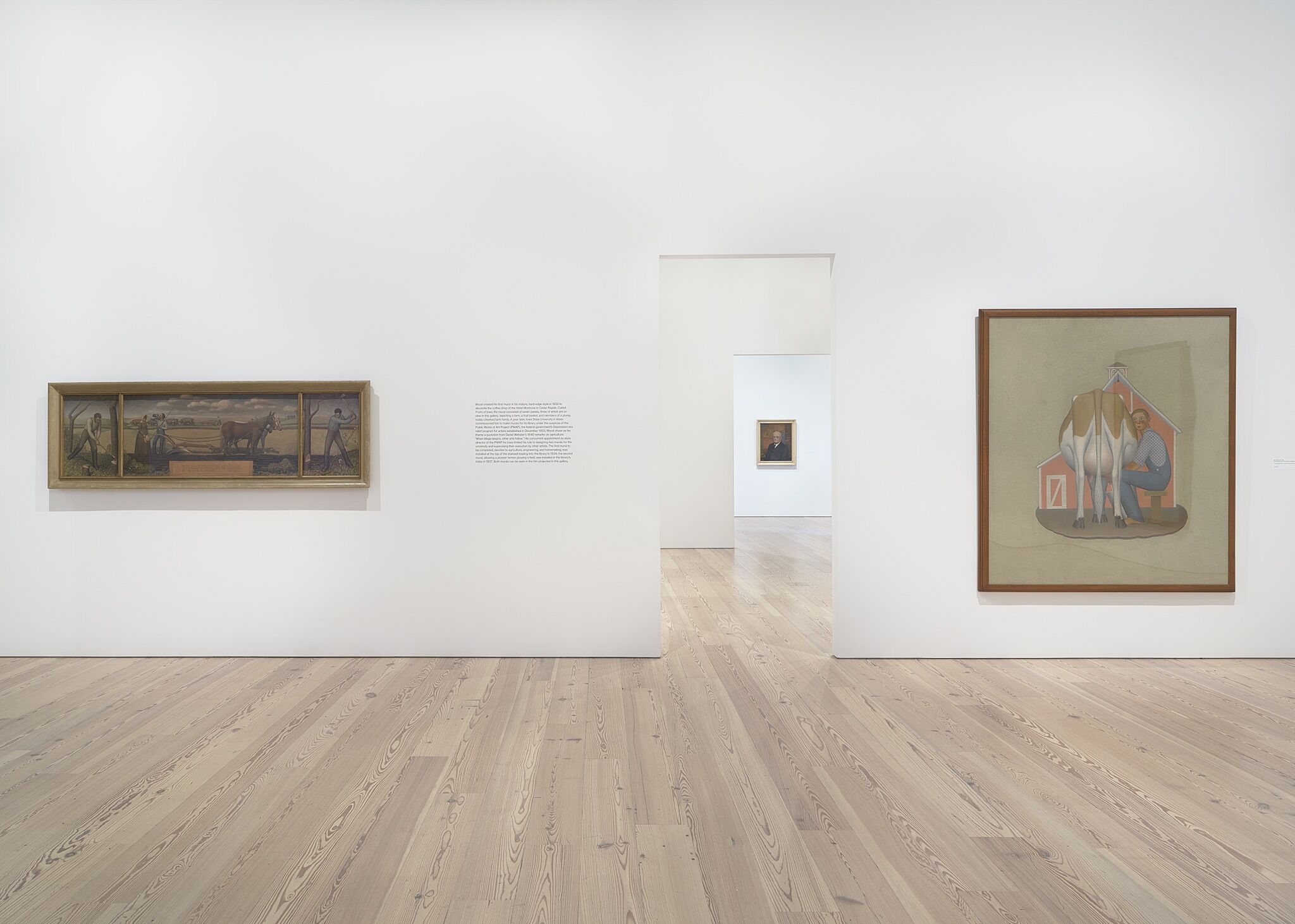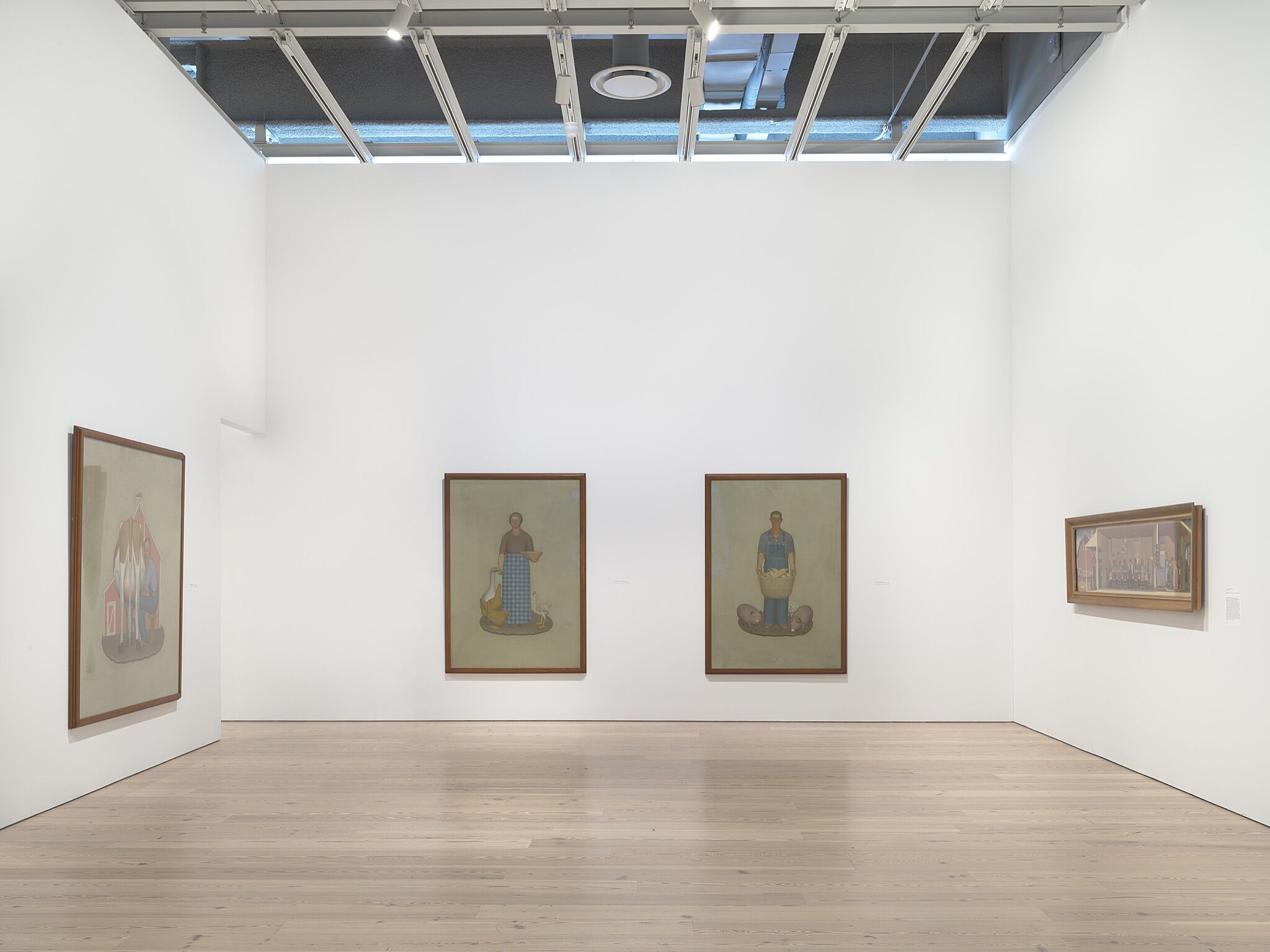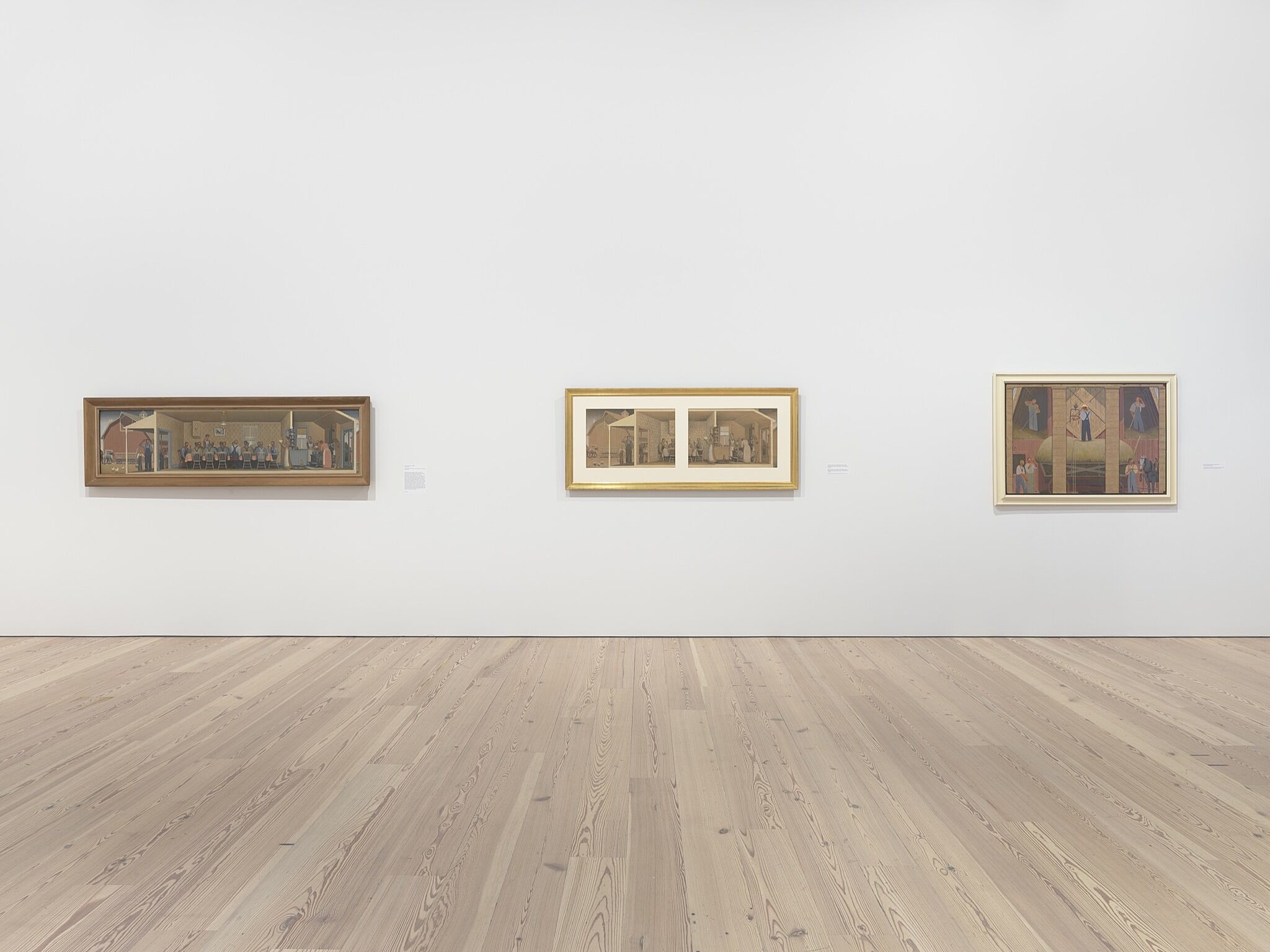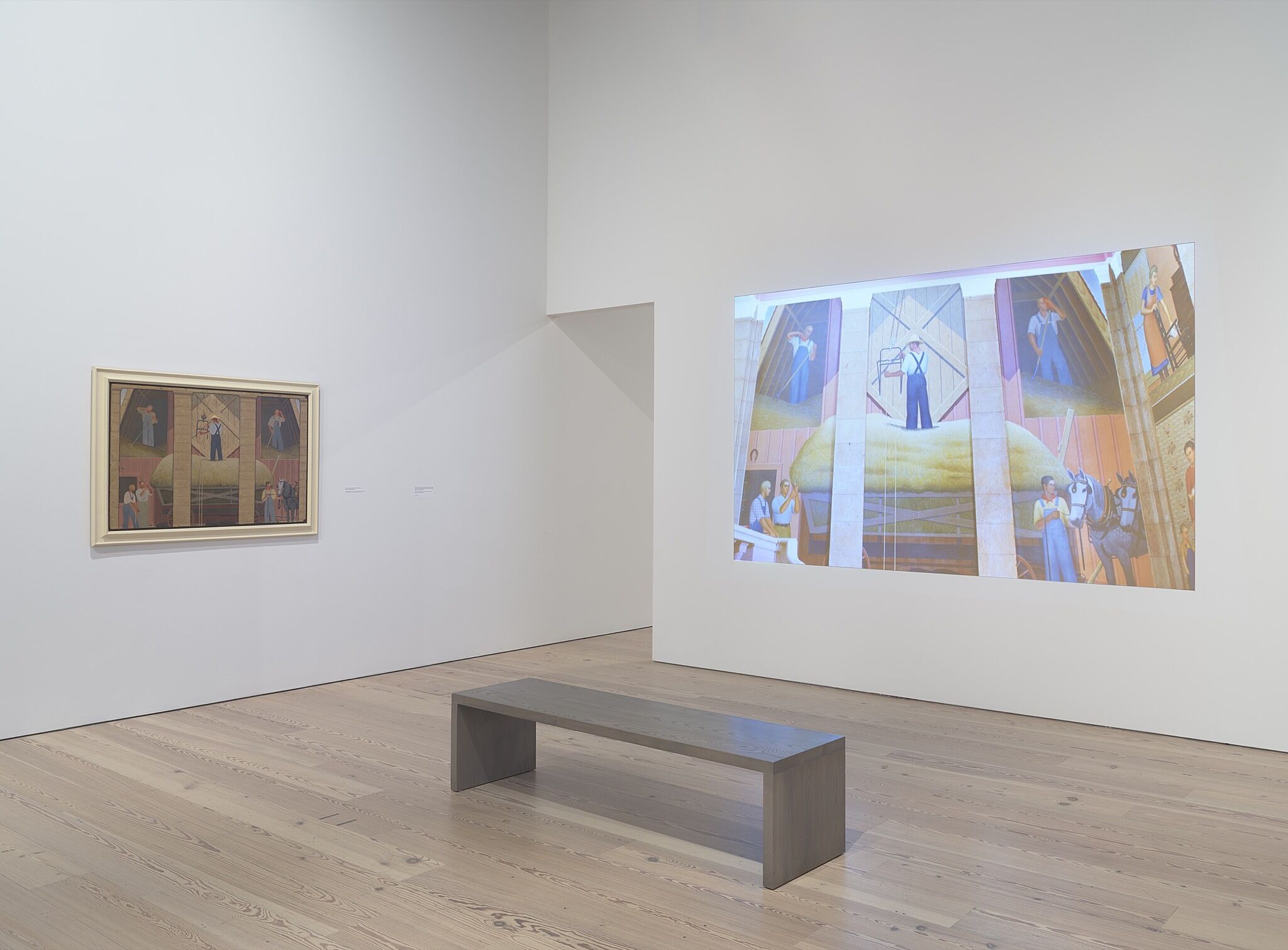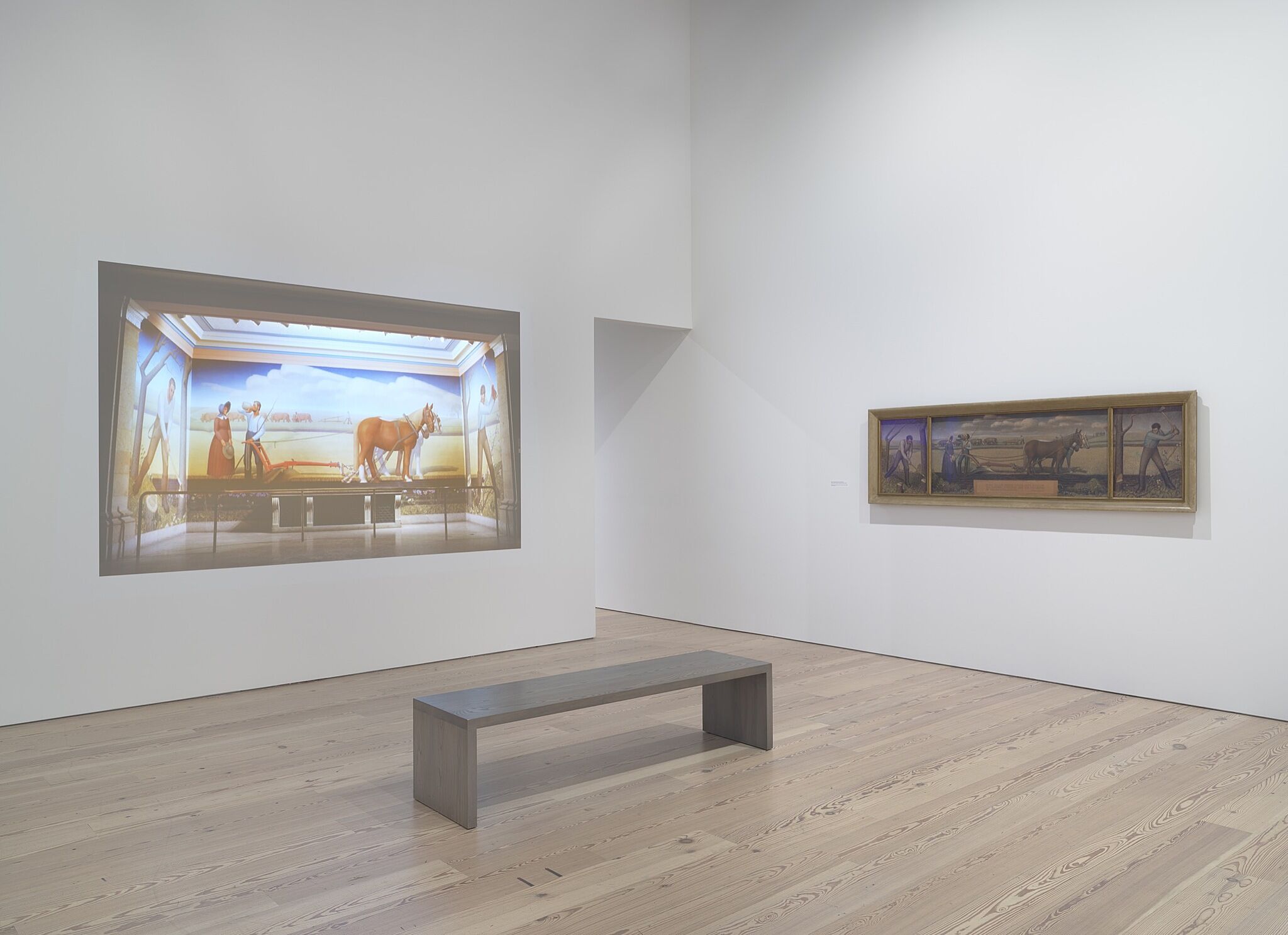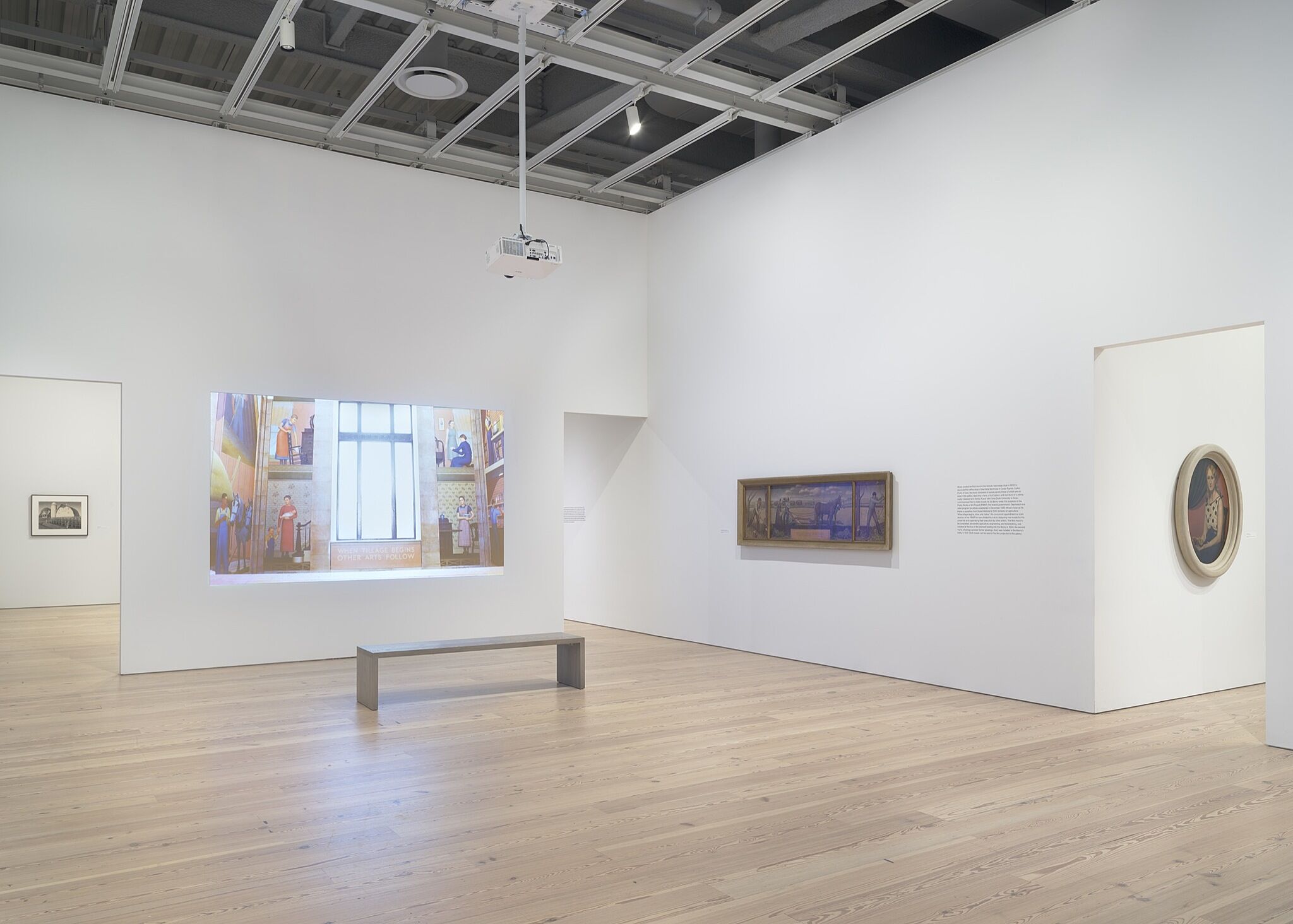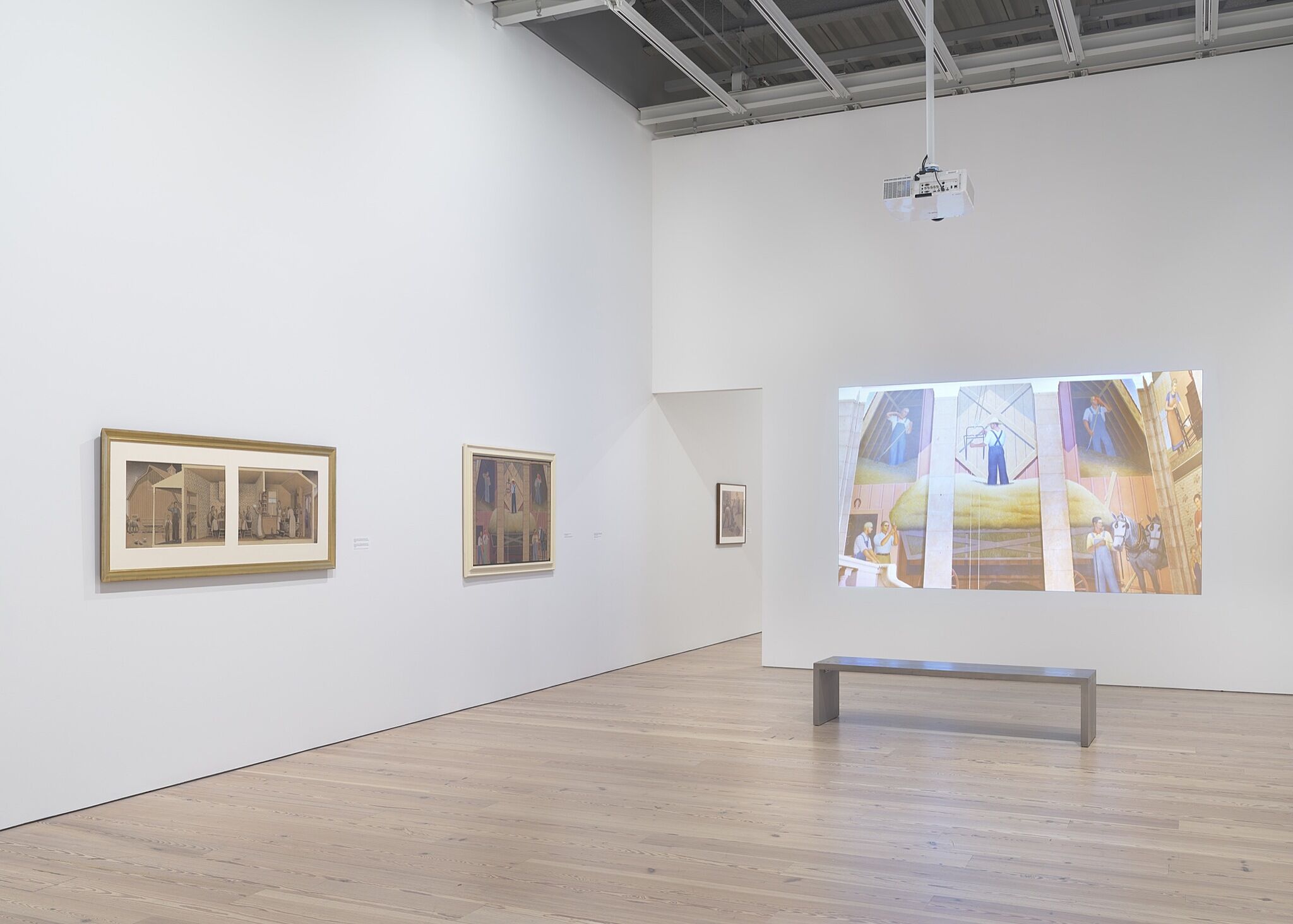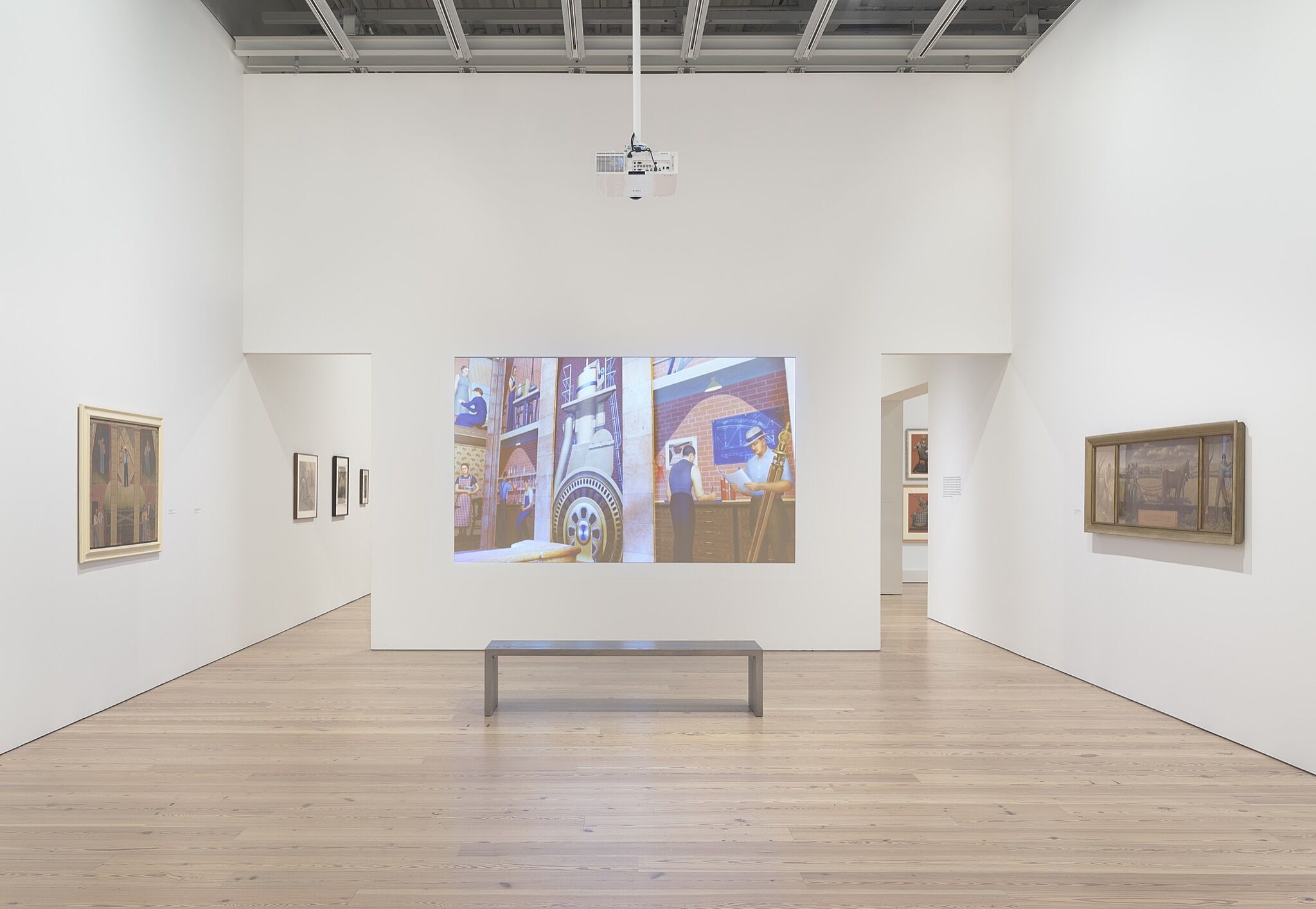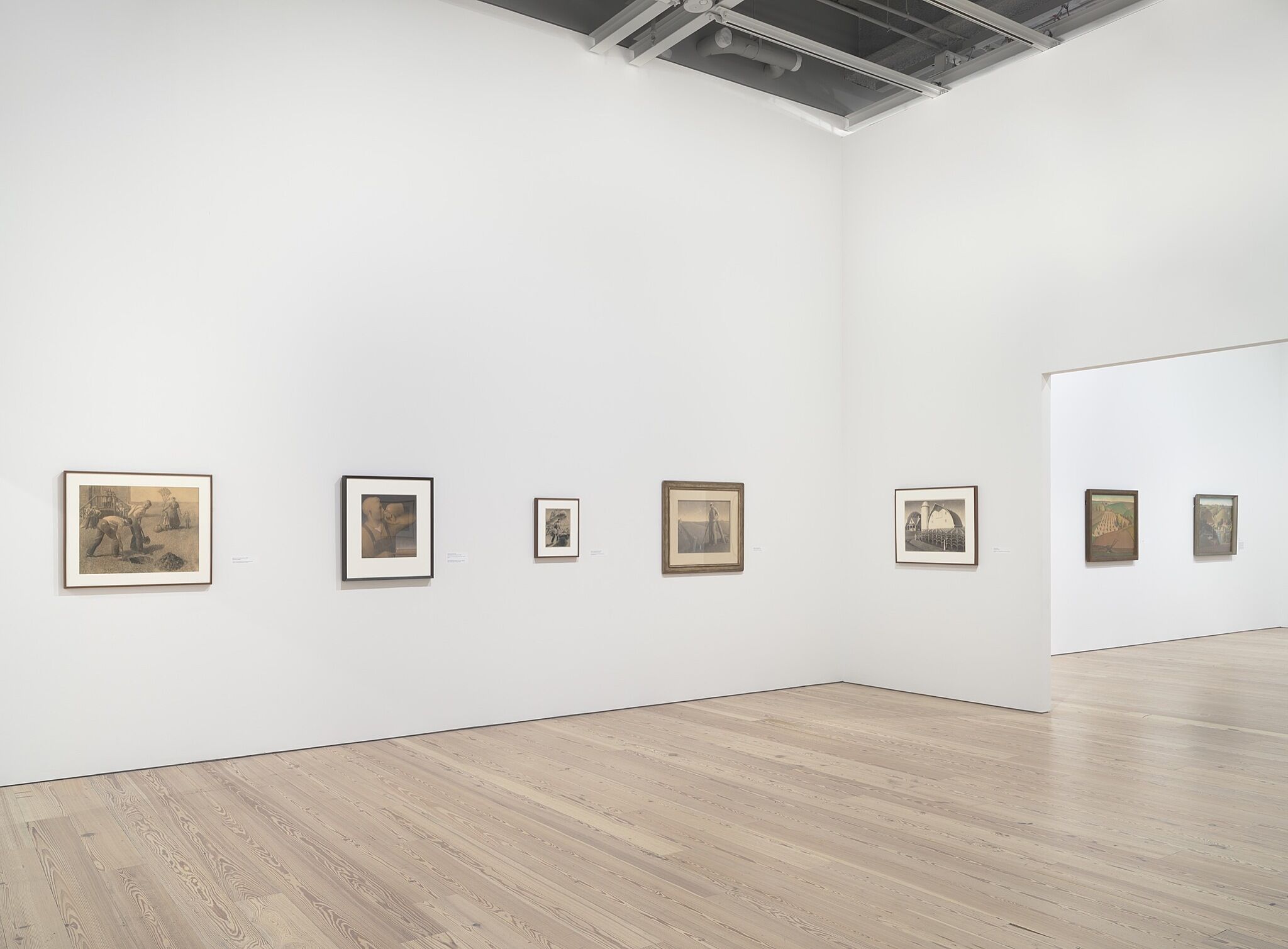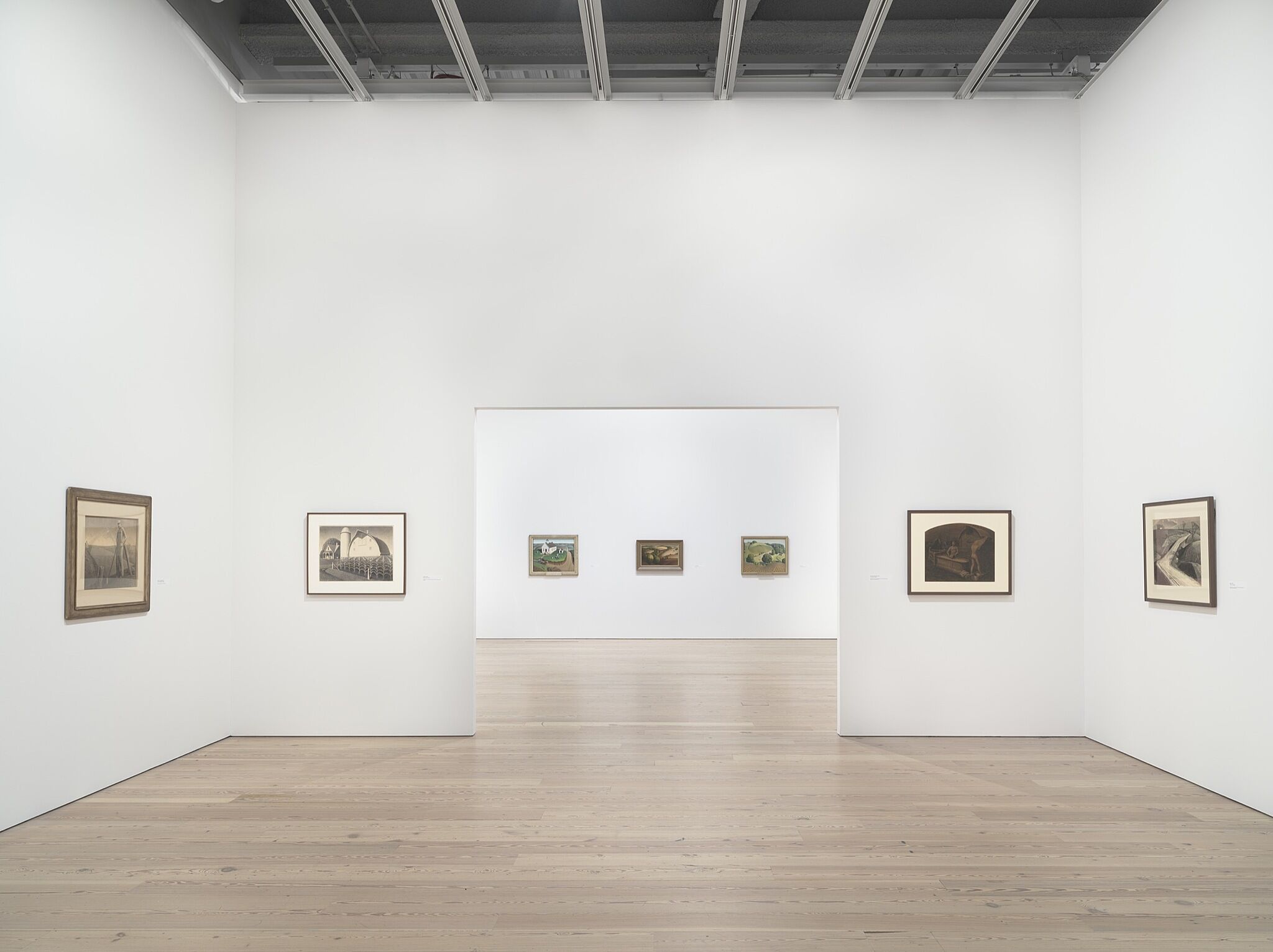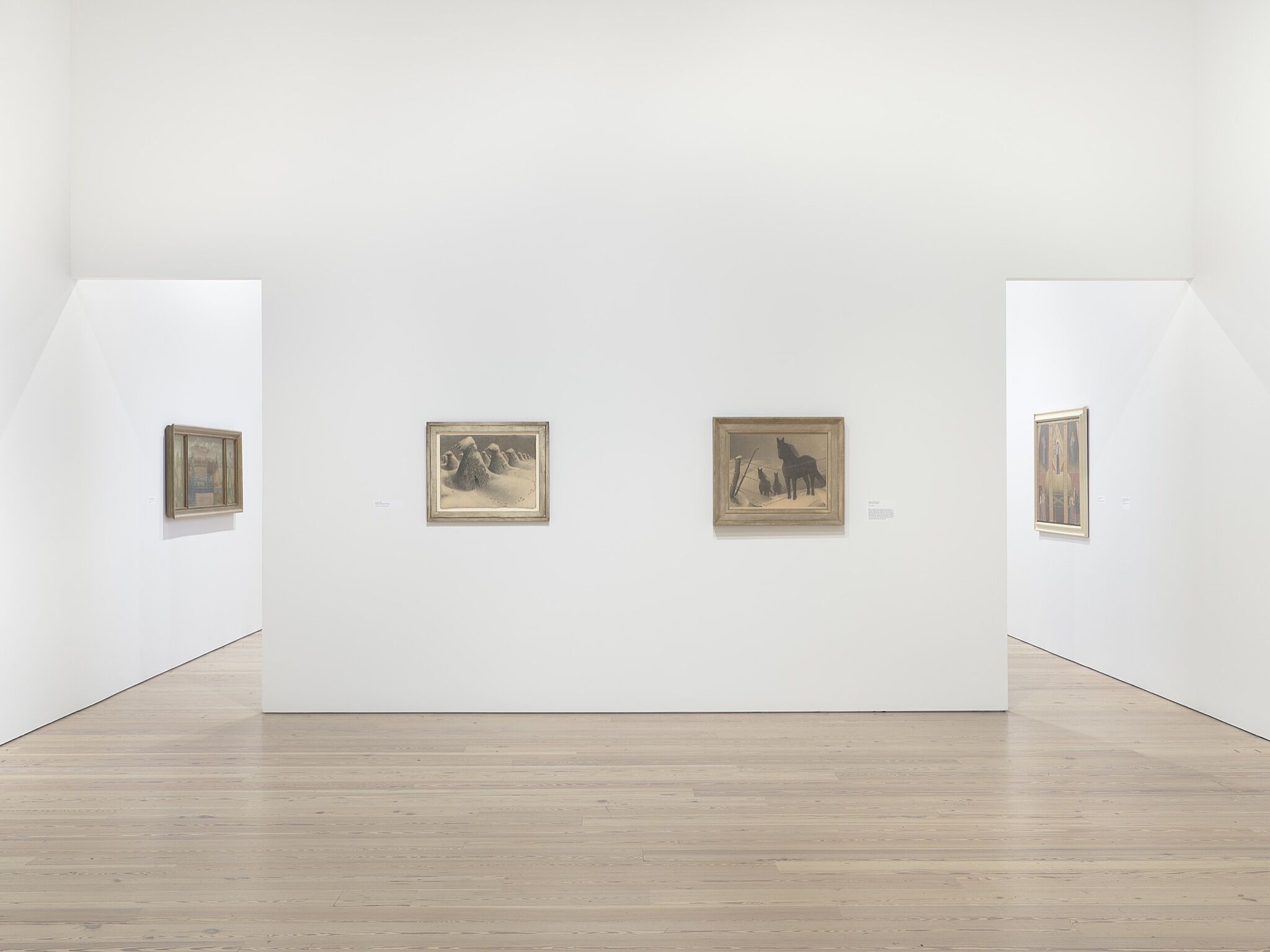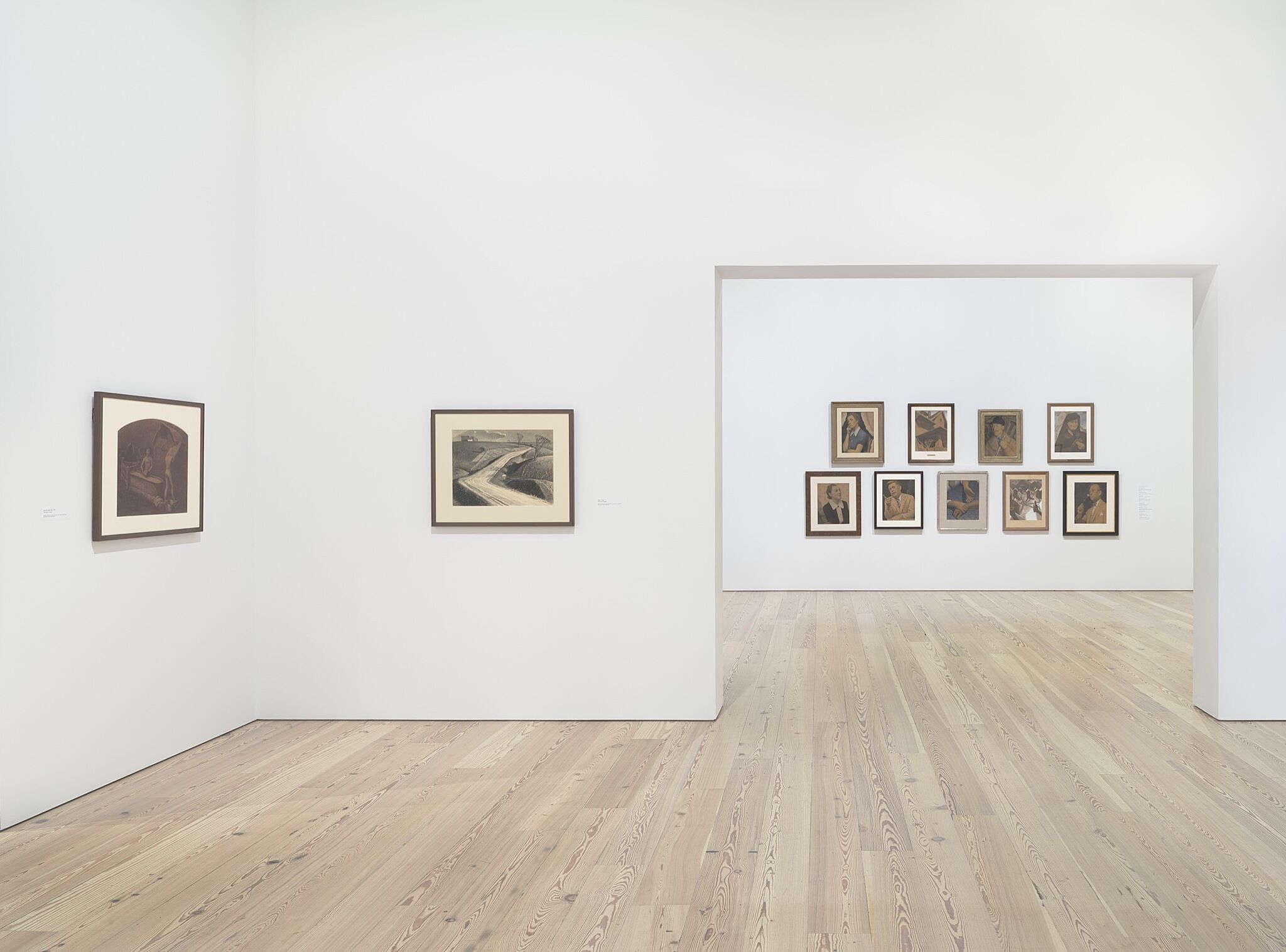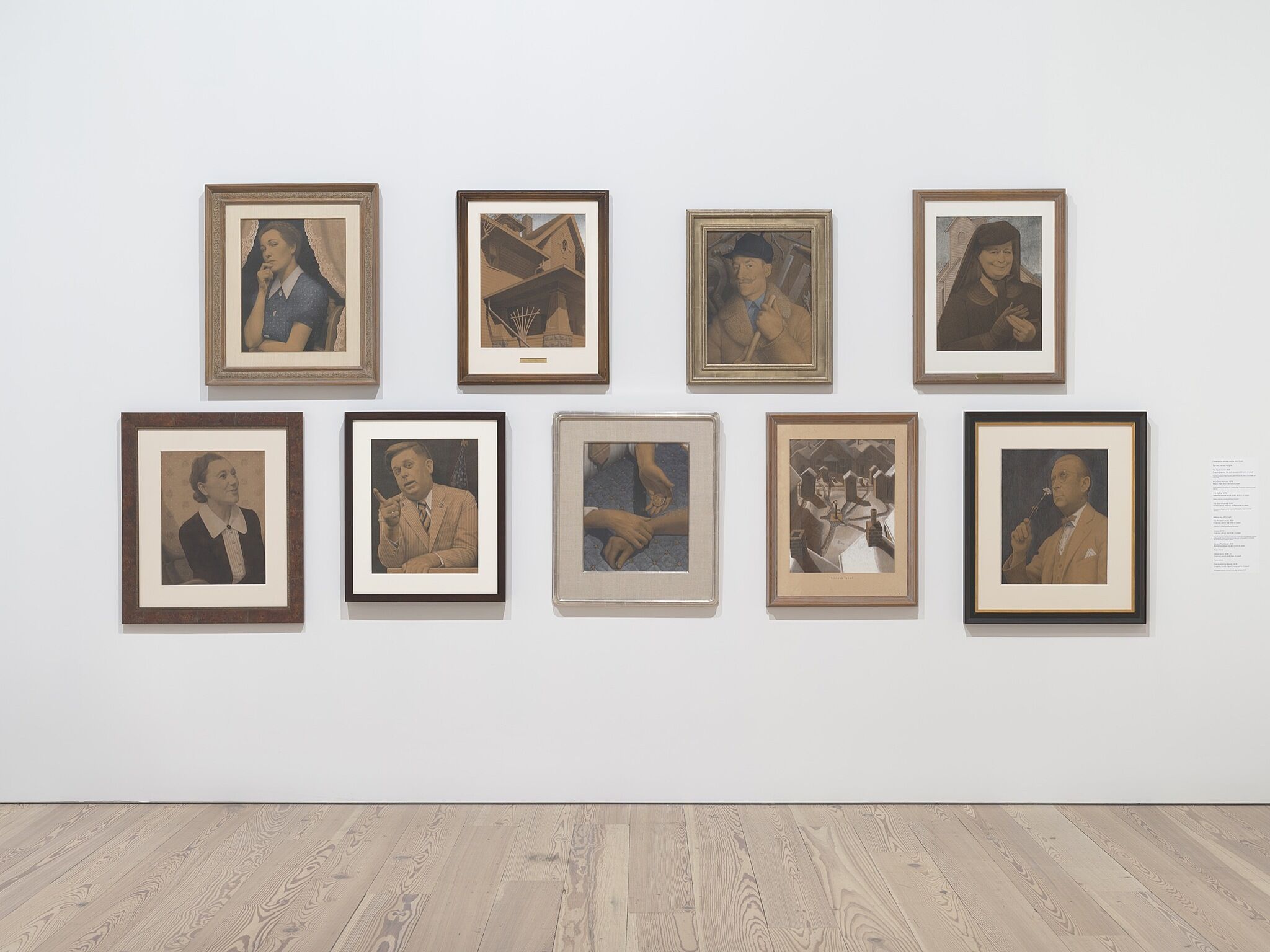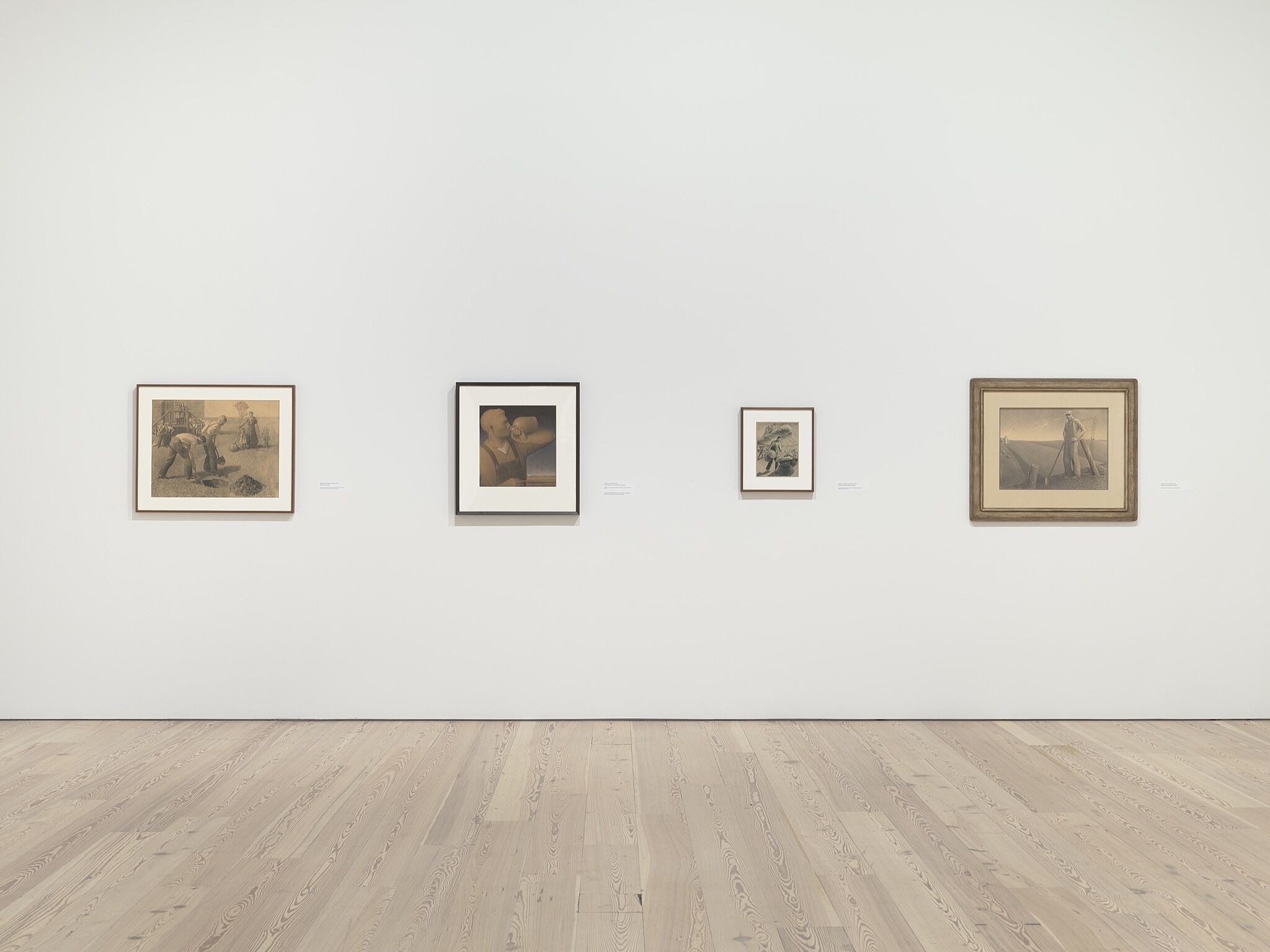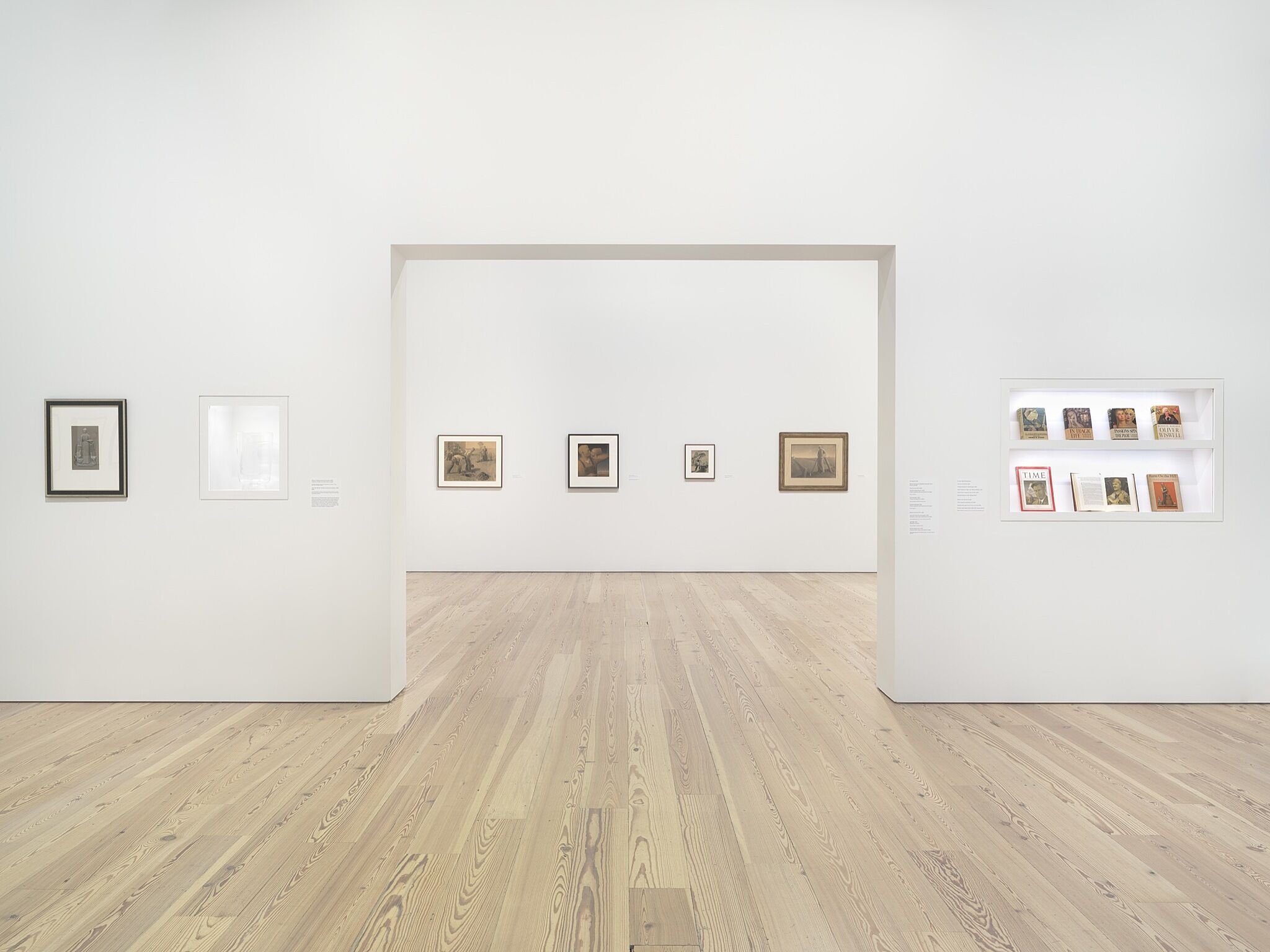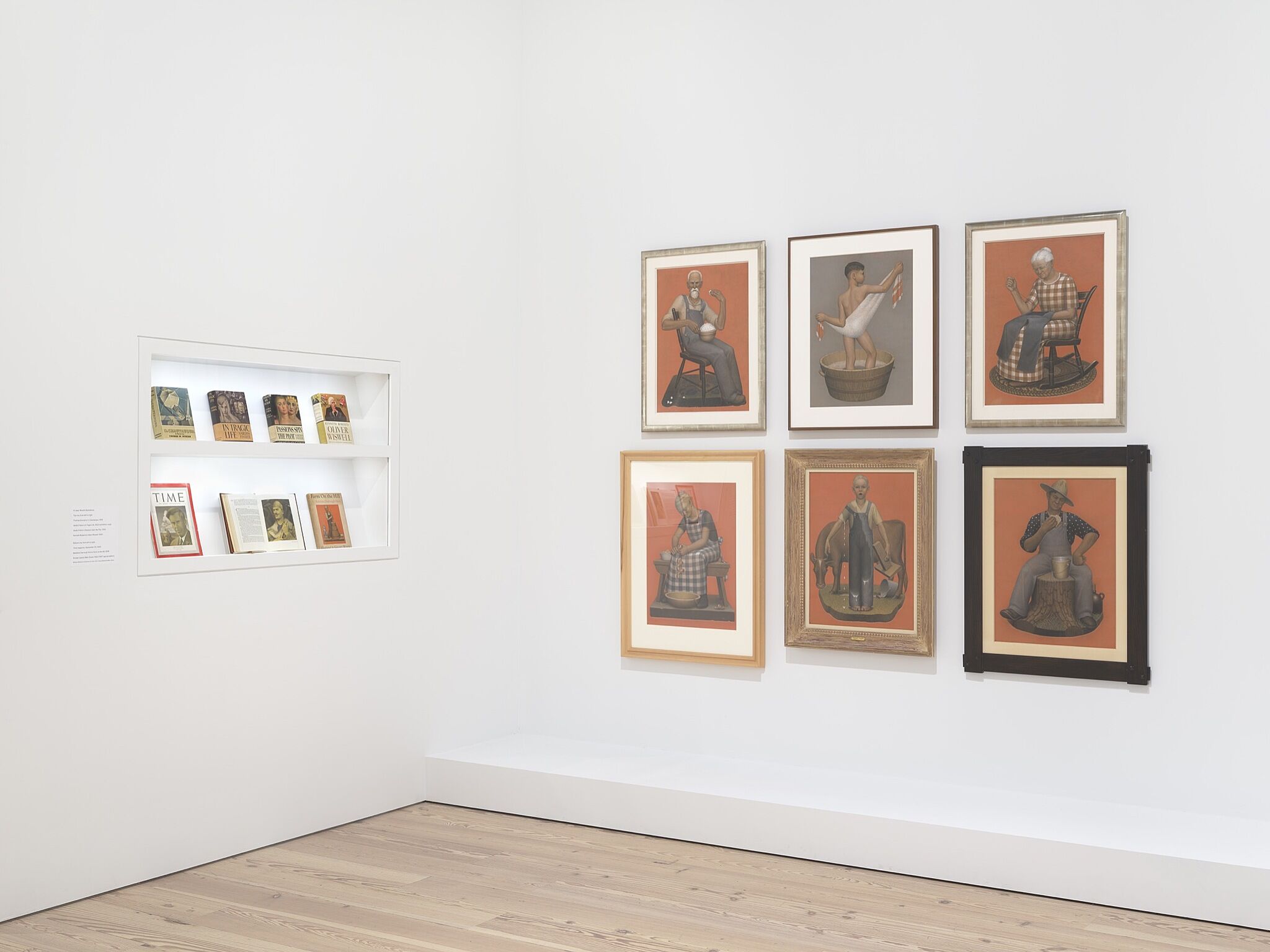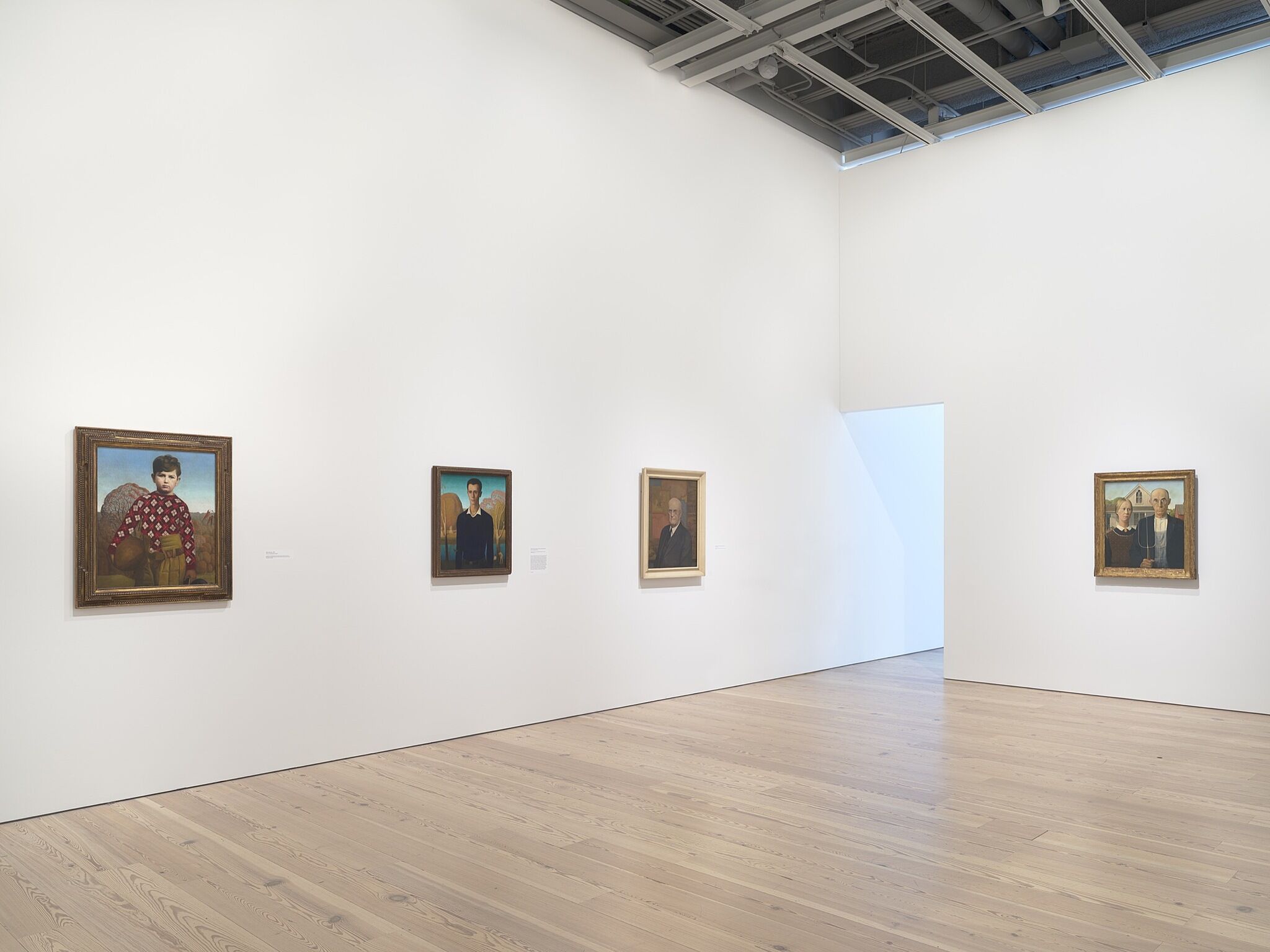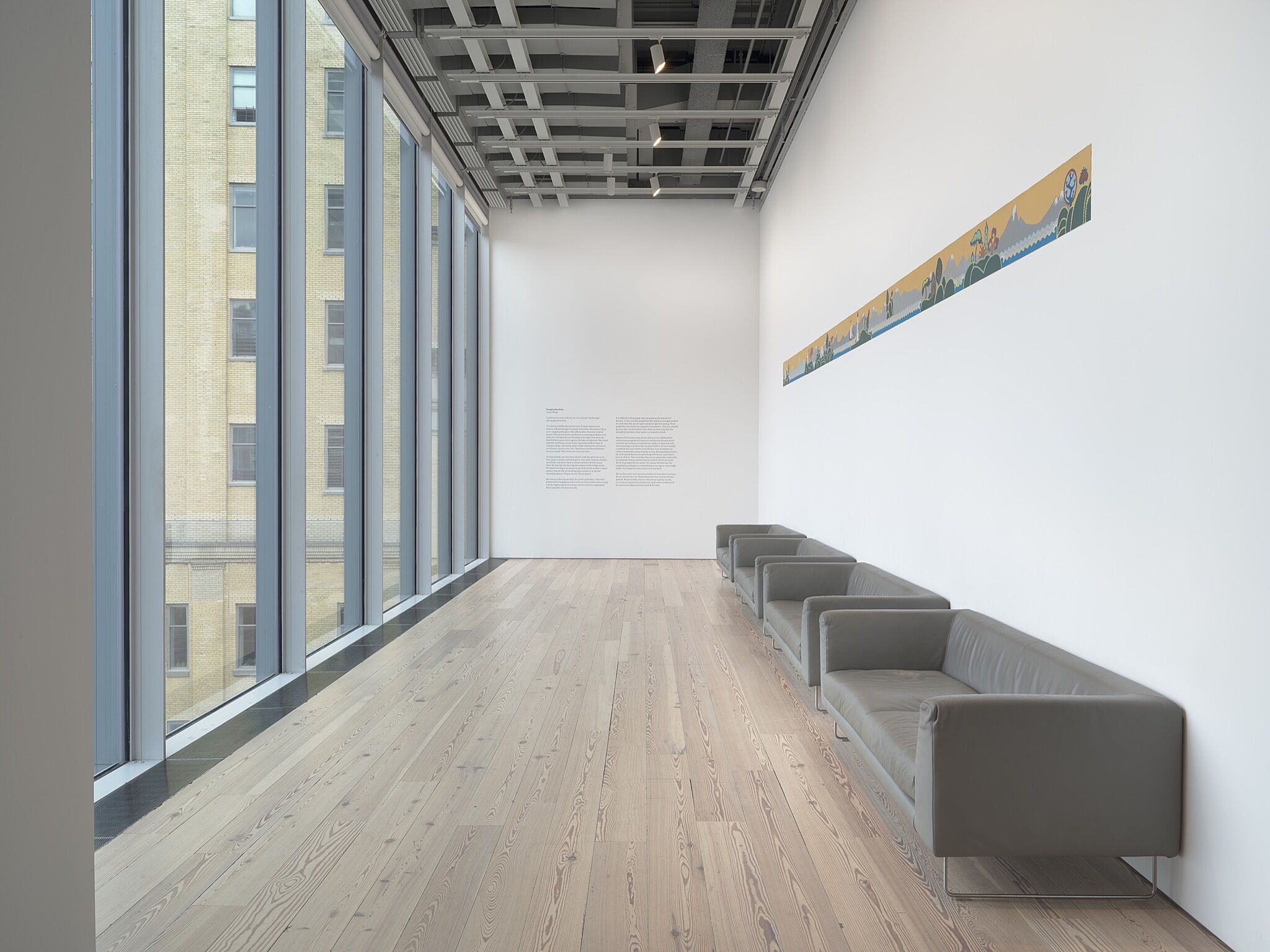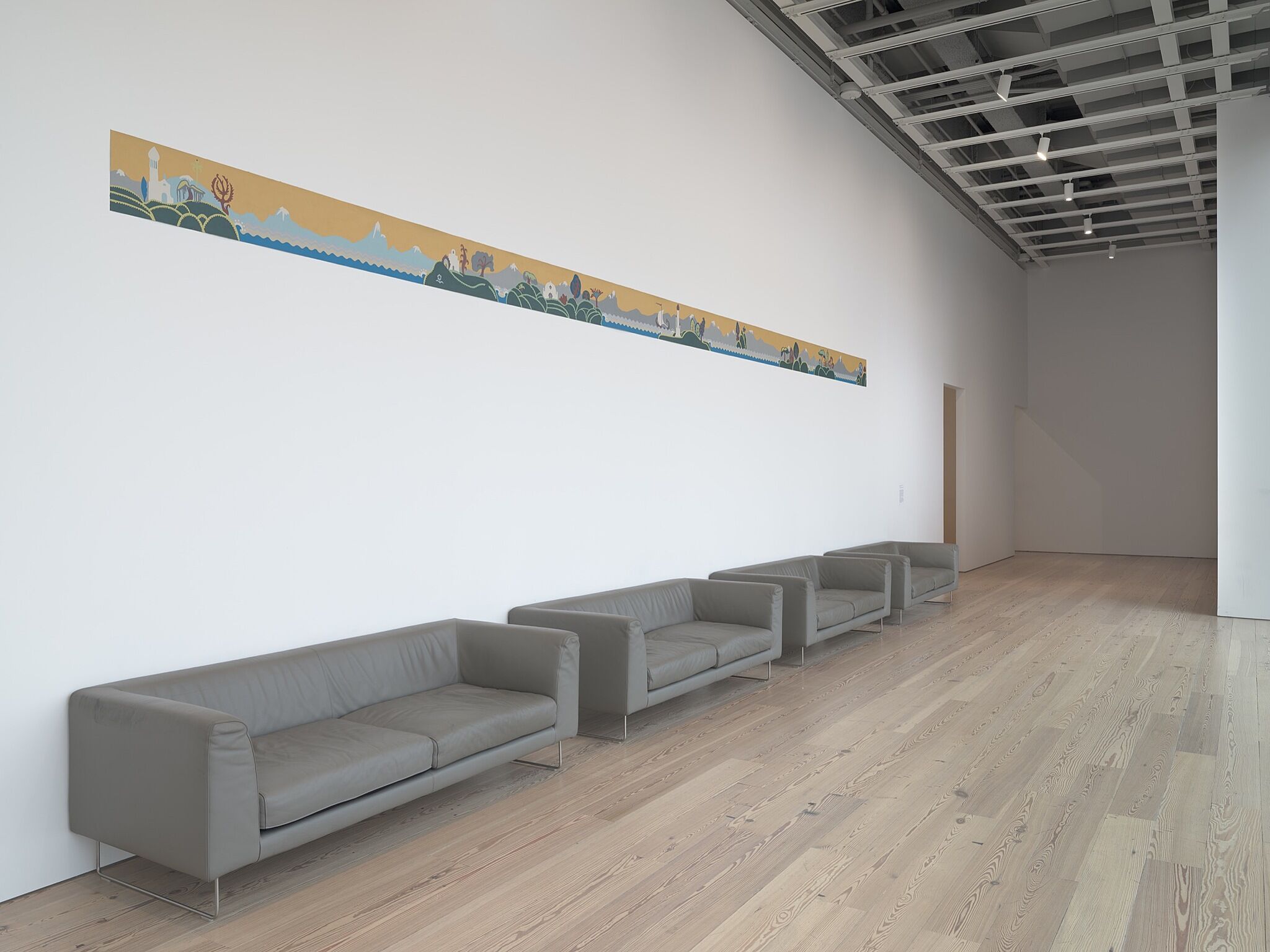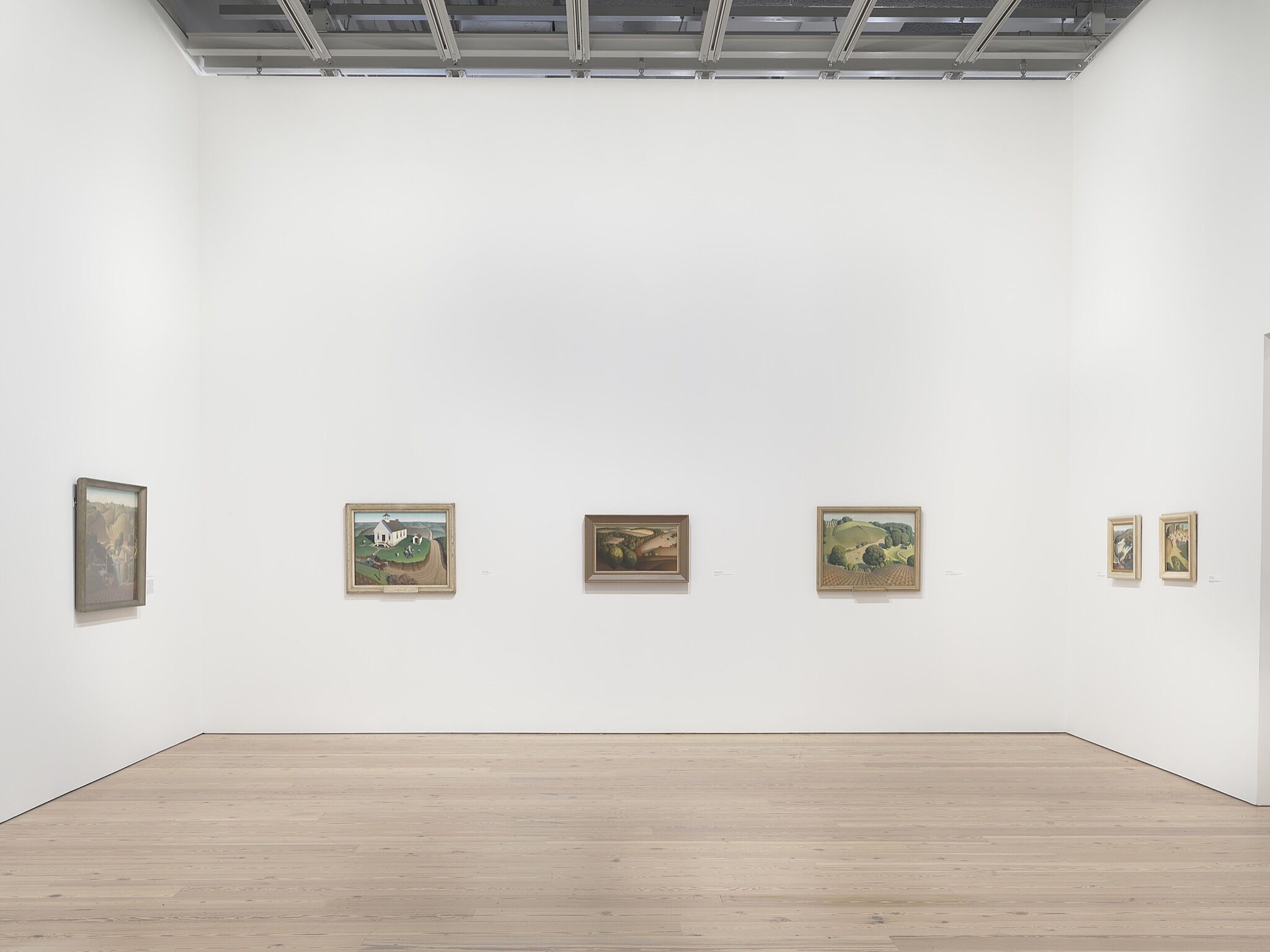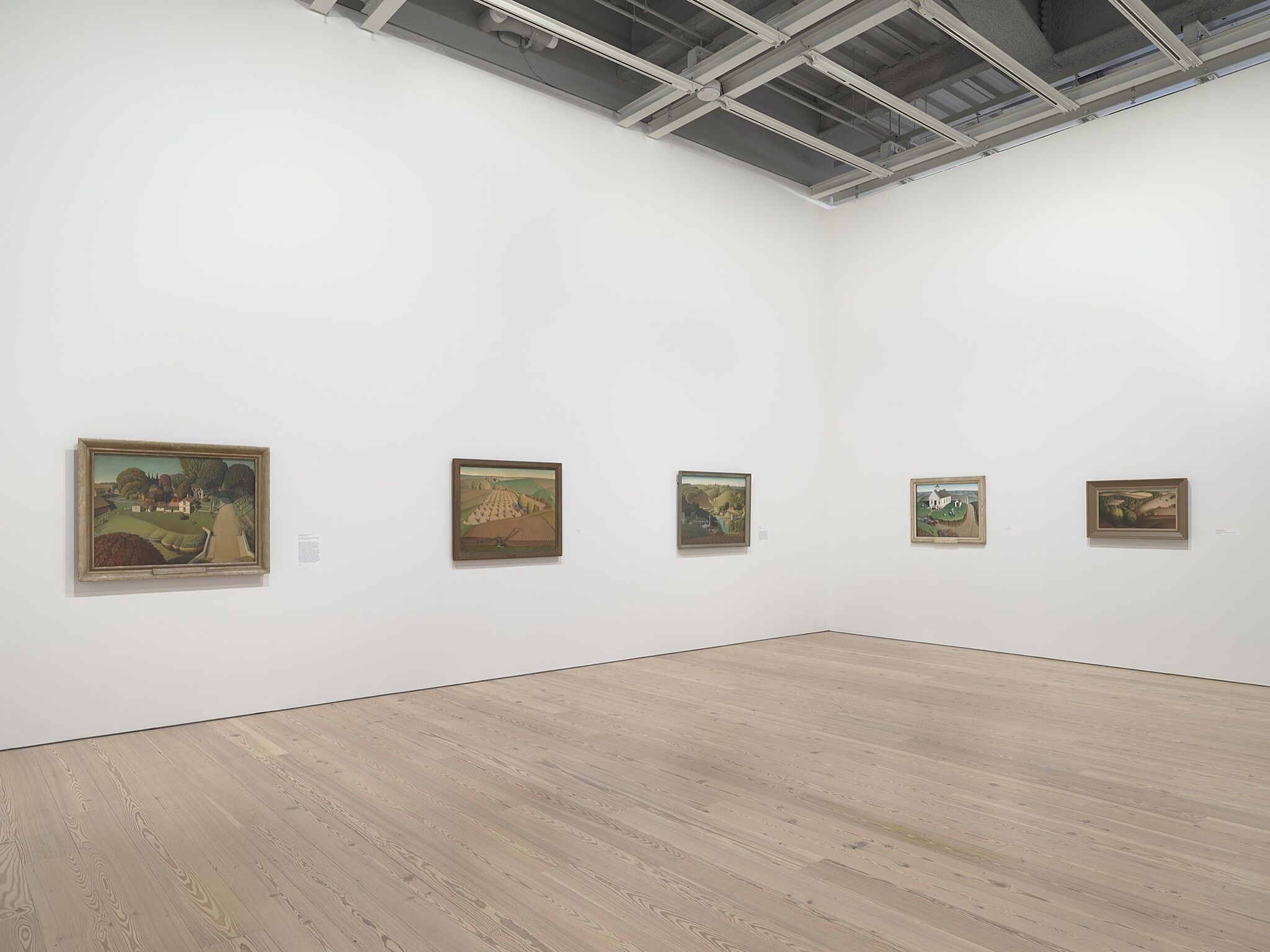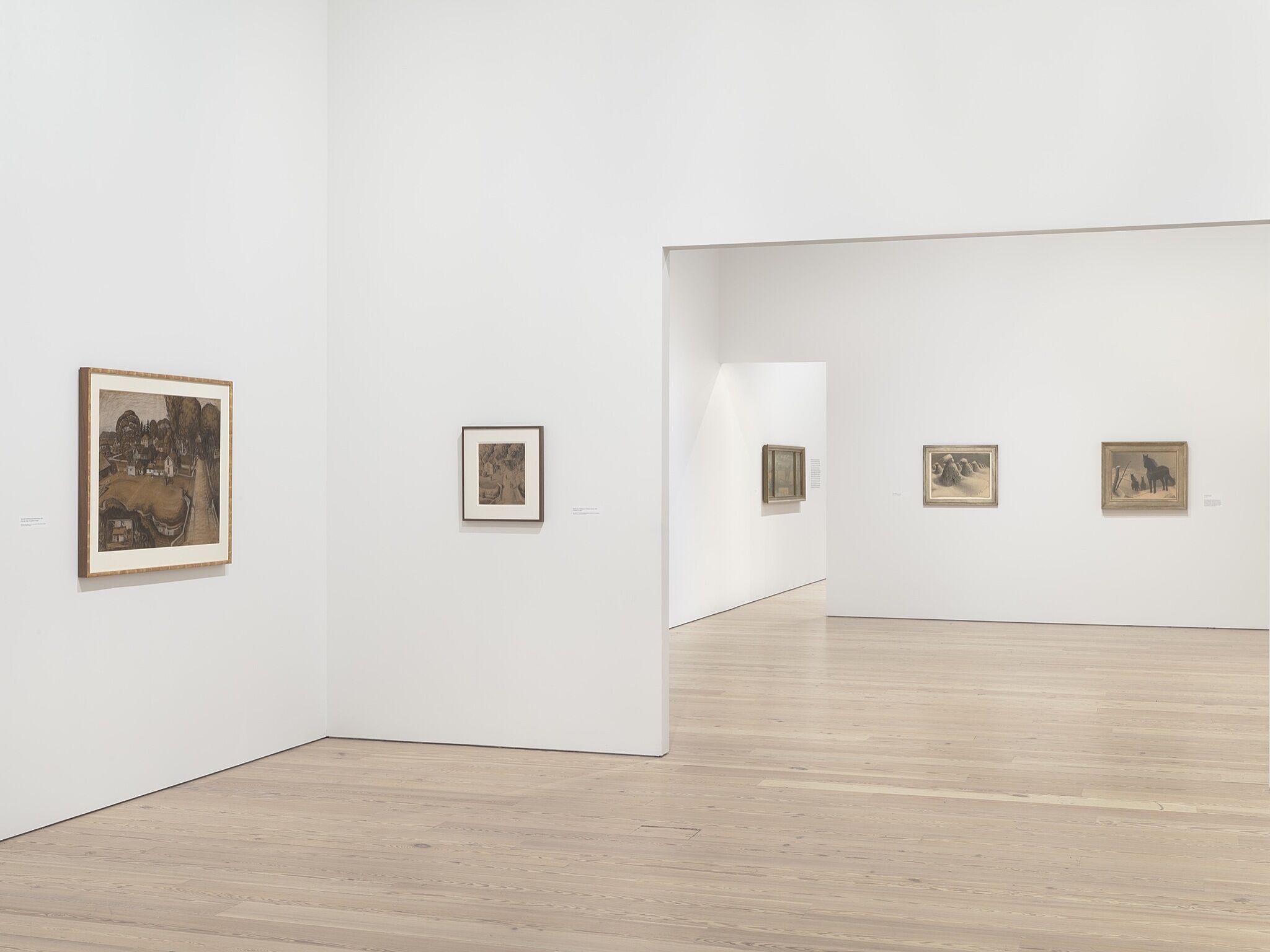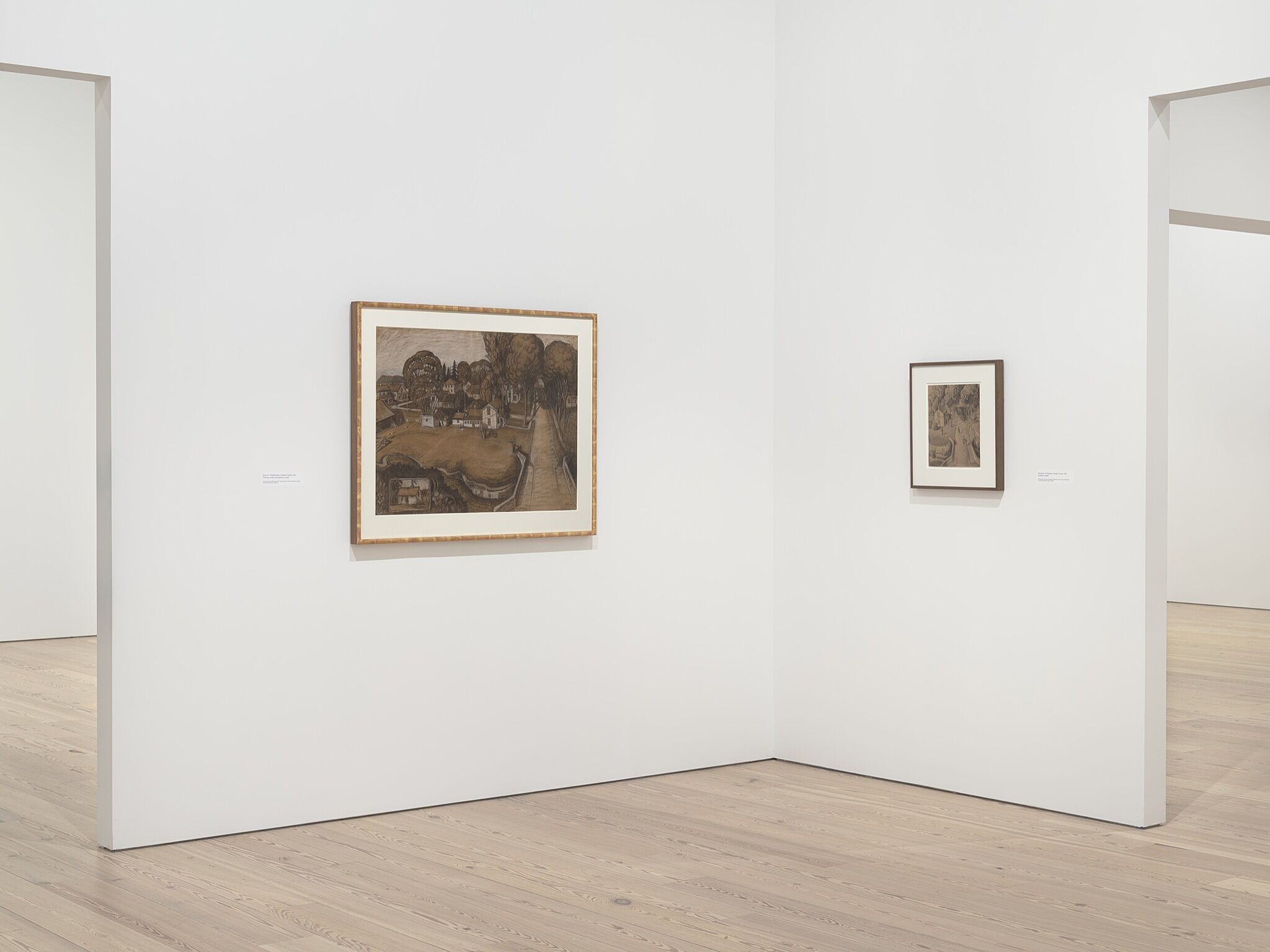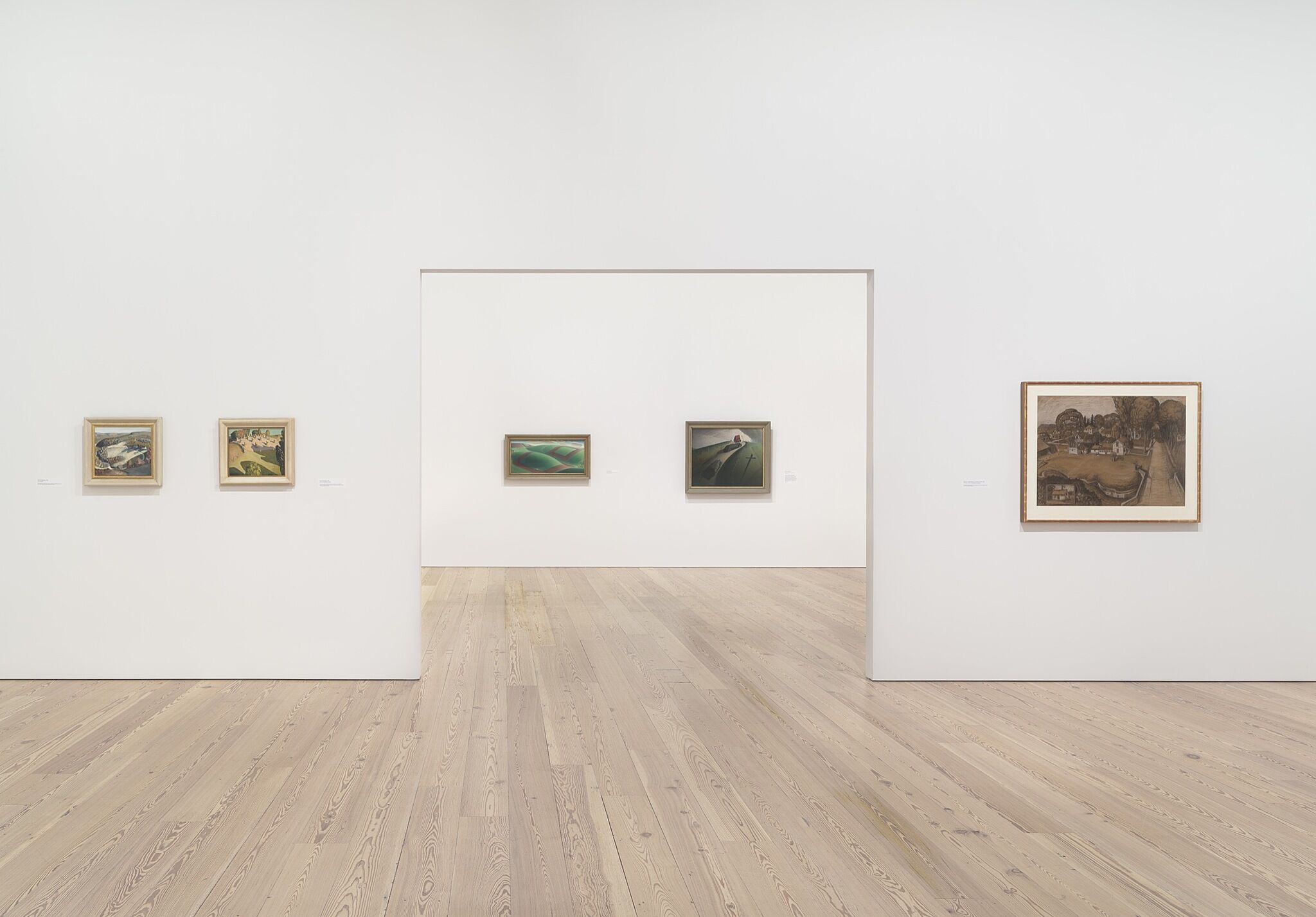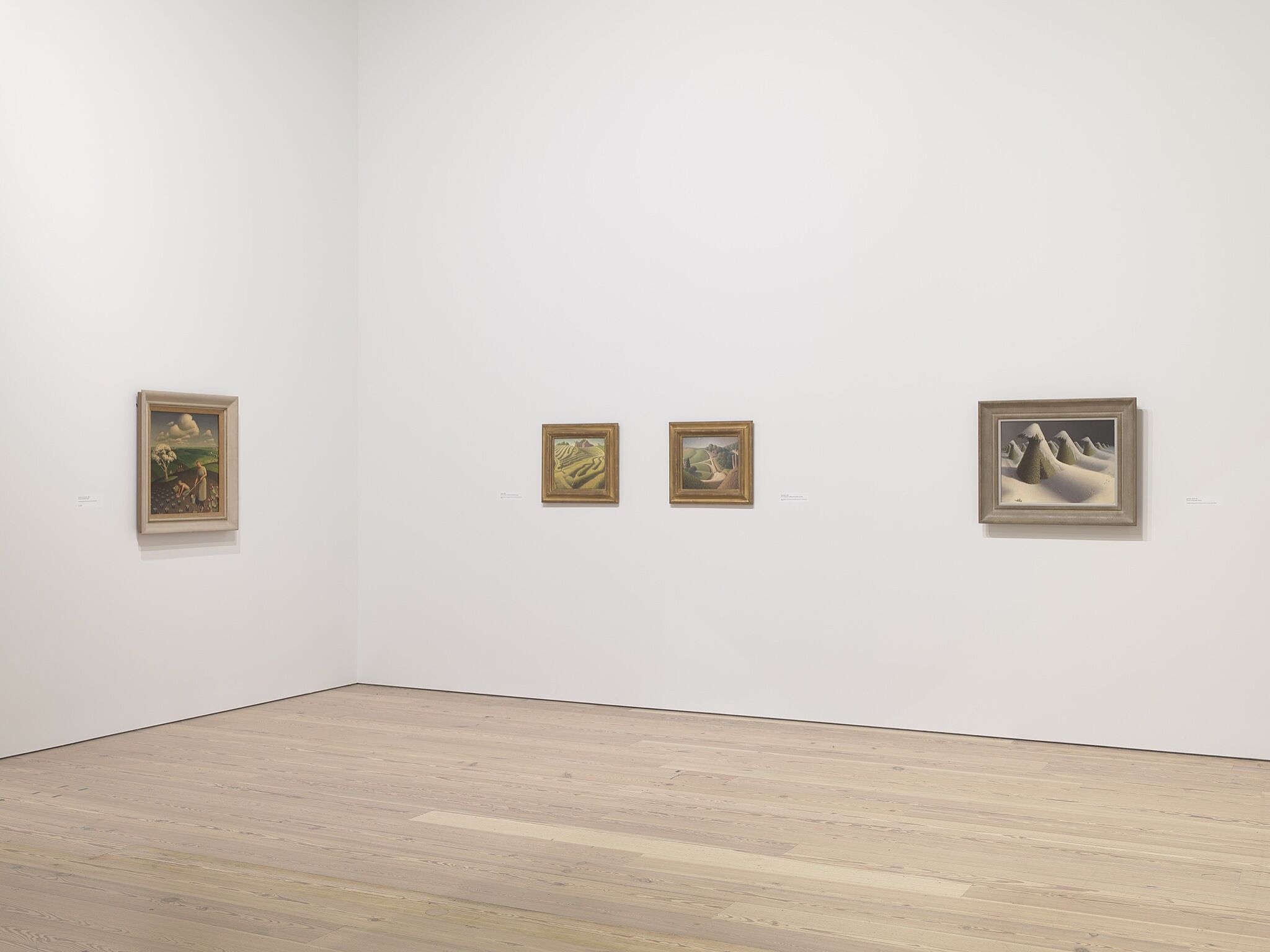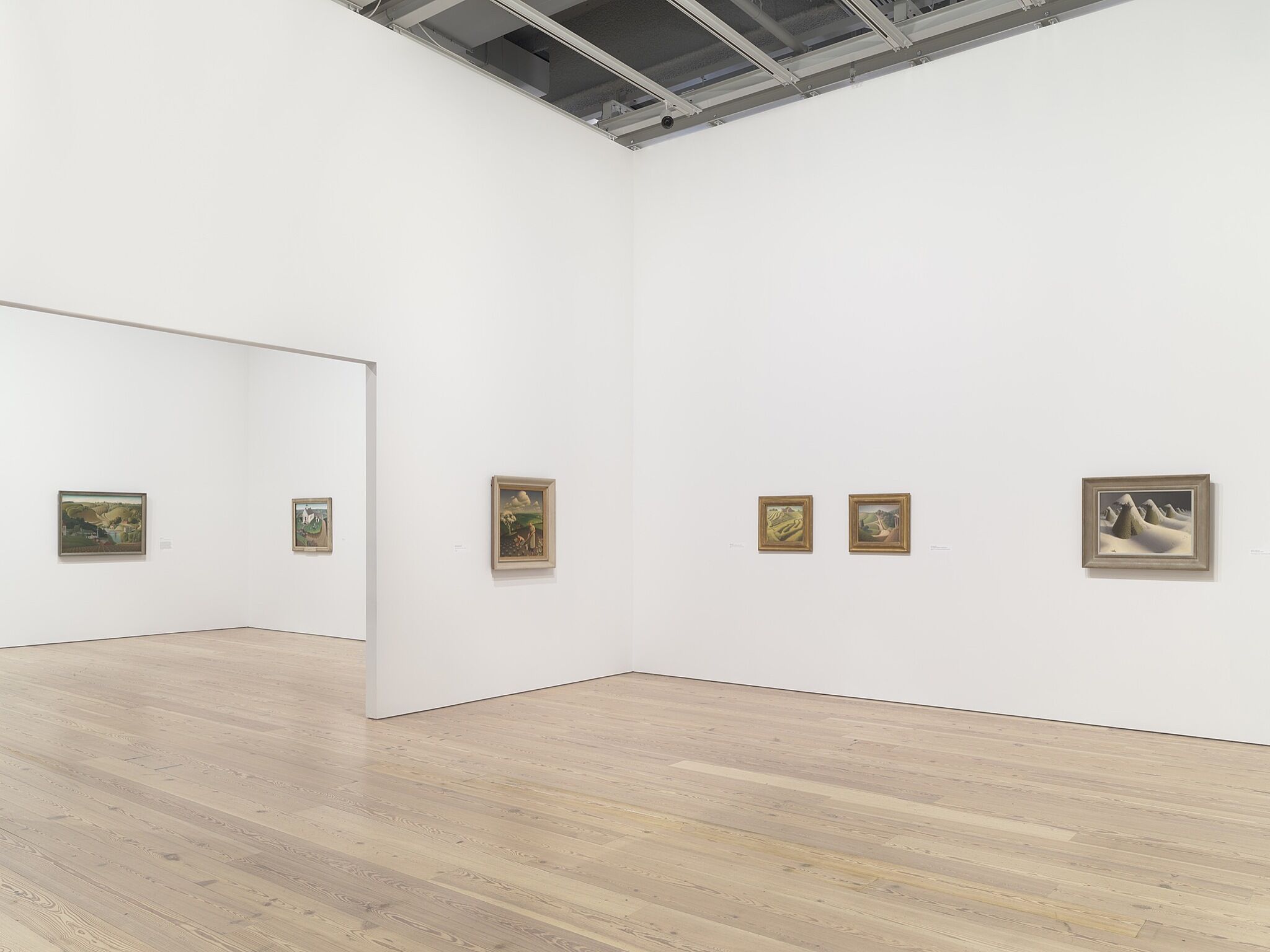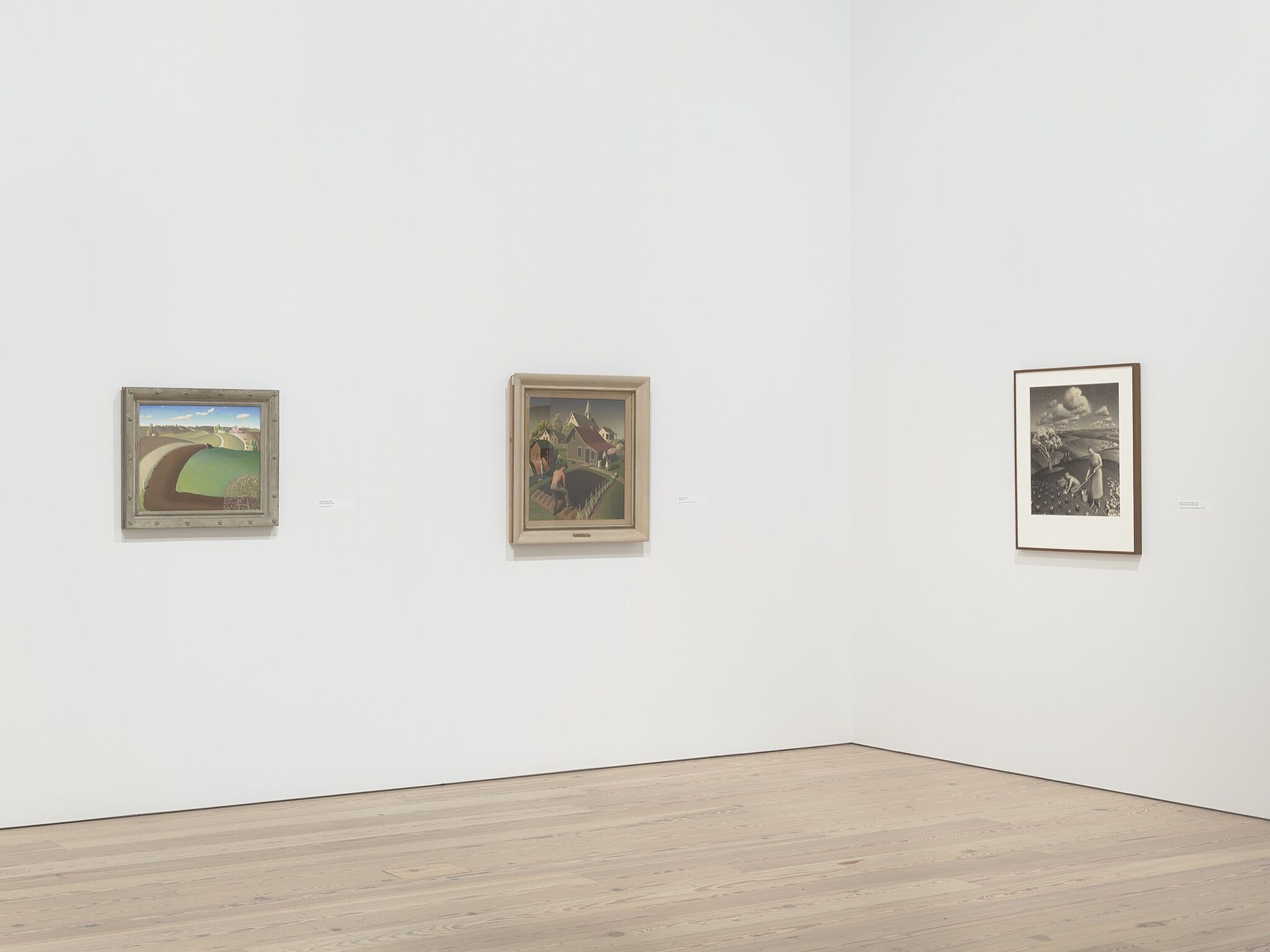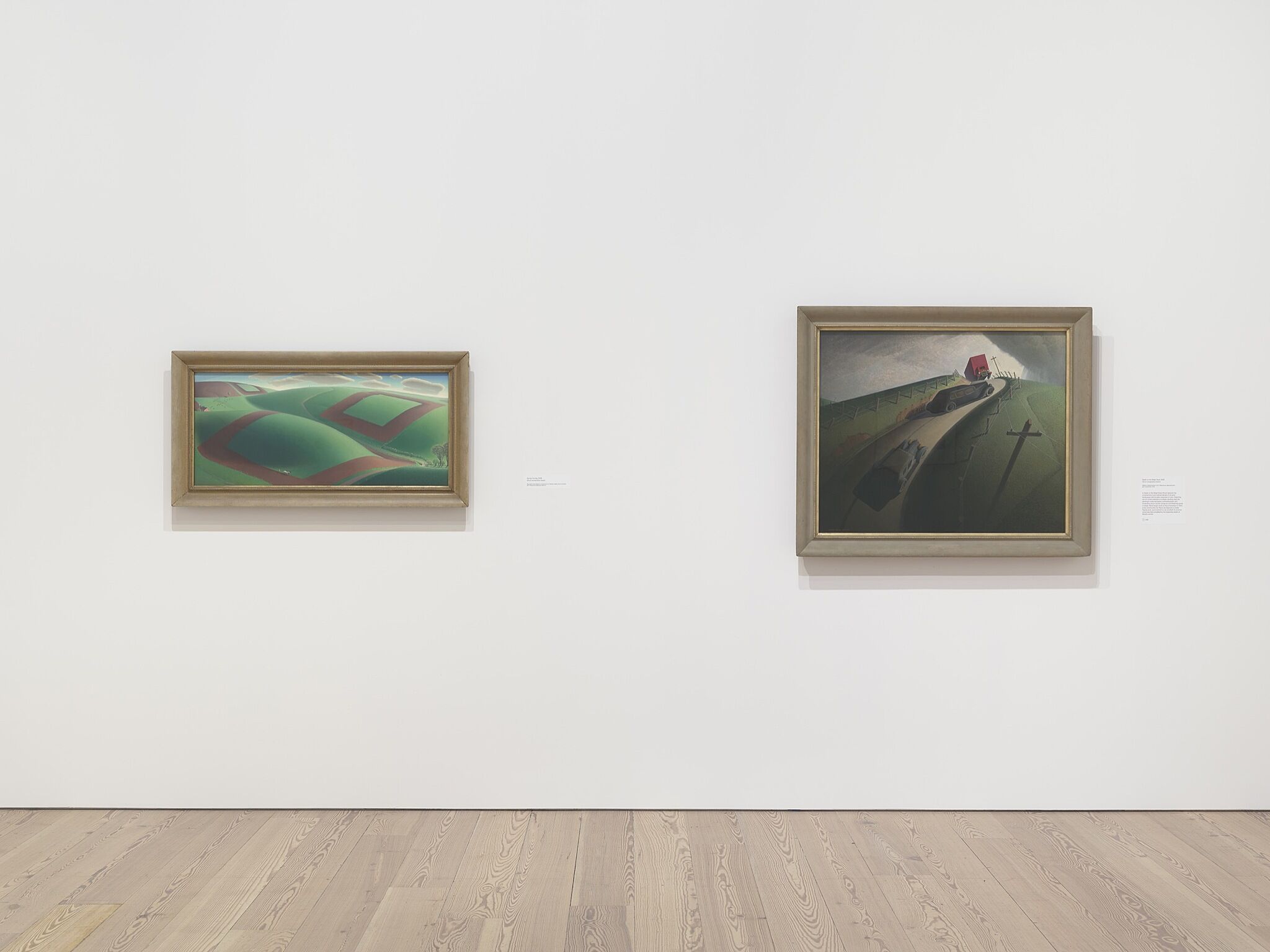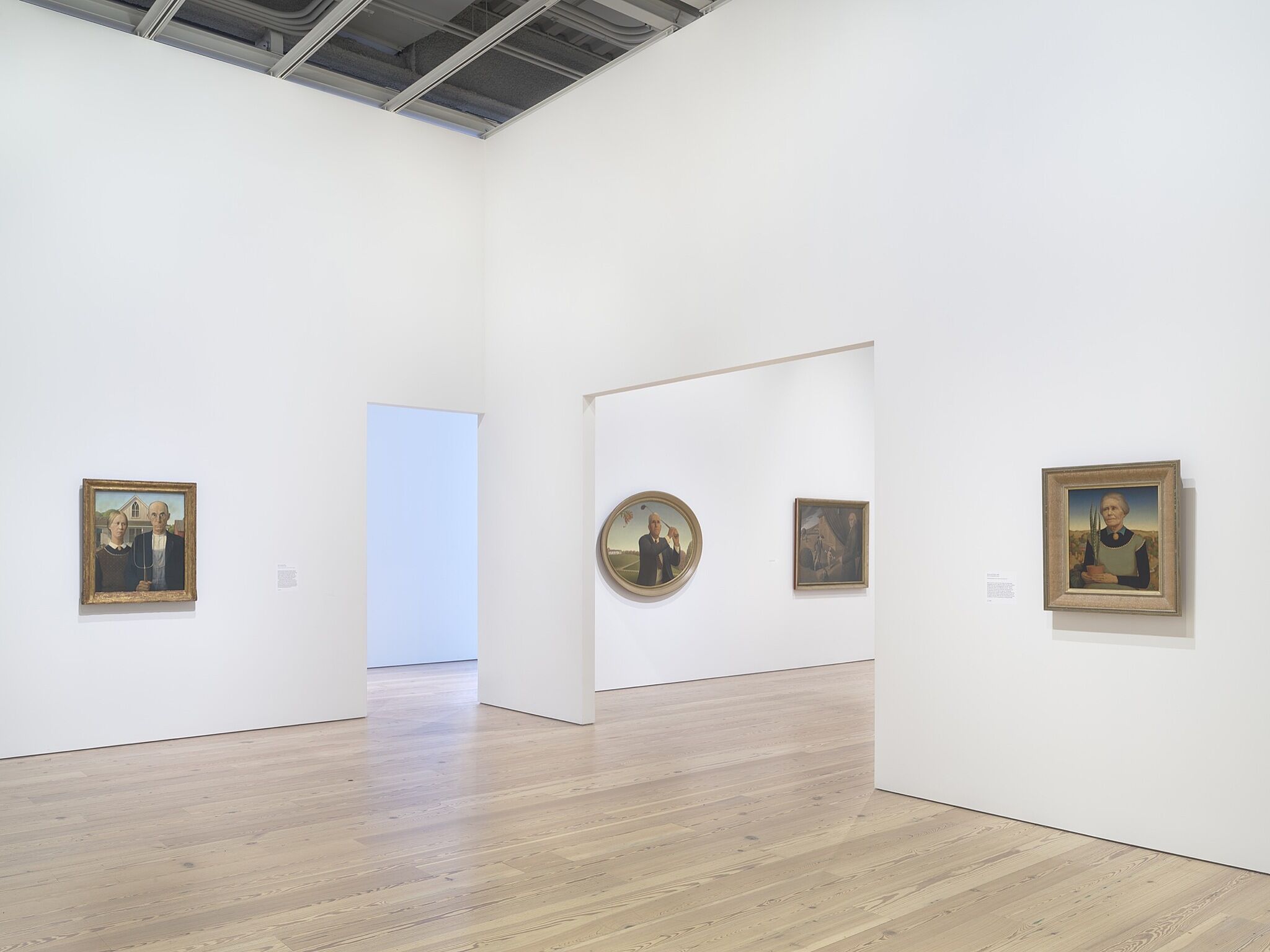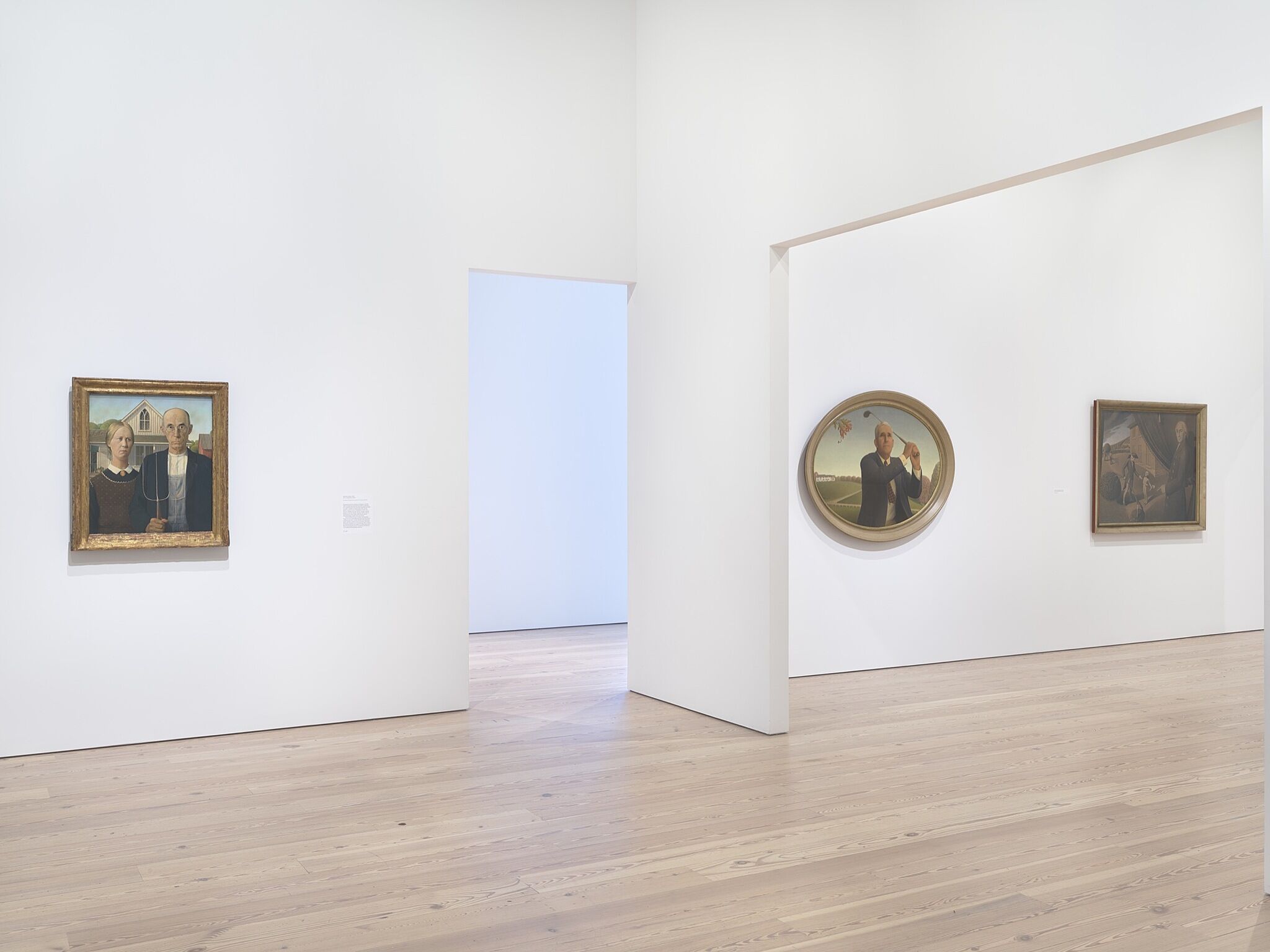Grant Wood: American Gothic and Other Fables
Mar 2–June 10, 2018
Grant Wood's American Gothic—the double portrait of a pitchfork-wielding farmer and a woman commonly presumed to be his wife—is perhaps the most recognizable painting in 20th century American art, an indelible icon of Americana, and certainly Wood's most famous artwork. But Wood's career consists of far more than one single painting. Grant Wood: American Gothic and Other Fables brings together the full range of his art, from his early Arts and Crafts decorative objects and Impressionist oils through his mature paintings, murals, and book illustrations. The exhibition reveals a complex, sophisticated artist whose image as a farmer-painter was as mythical as the fables he depicted in his art. Wood sought pictorially to fashion a world of harmony and prosperity that would answer America's need for reassurance at a time of economic and social upheaval occasioned by the Depression. Yet underneath its bucolic exterior, his art reflects the anxiety of being an artist and a deeply repressed homosexual in the Midwest in the 1930s. By depicting his subconscious anxieties through populist images of rural America, Wood crafted images that speak both to American identity and to the estrangement and isolation of modern life.
This exhibition is organized by Barbara Haskell, Curator, with Sarah Humphreville, Senior Curatorial Assistant.
Grant Wood: American Gothic and Other Fables is sponsored by Bank of America.

Major foundation support is provided by the Henry Luce Foundation.

Major support is also provided by the Barbara Haskell American Fellows Legacy Fund.
Significant support is provided by The Brown Foundation, Inc., of Houston; The Mr. and Mrs. Raymond J. Horowitz Foundation for the Arts; and public funds from the New York City Department of Cultural Affairs in partnership with the City Council.
Generous support is provided by John and Mary Pappajohn and the Robert Lehman Foundation, Inc.

This exhibition is supported by an indemnity from the Federal Council on the Arts and the Humanities.
Exhibition Catalogue
This comprehensive study of Grant Wood provides new insight into the career of one of the key figures of twentieth-century American art. Exploring Wood’s oeuvre from a variety of perspectives, the catalogue presents the artist’s work in all of its subtle complexity and eschews the idea that Wood can be categorized simply as a Regionalist painter.
The excerpt featured here includes a selection from Barbara Haskell’s overview essay as well as a preview of the plate section and illustrated chronology.
Early Landscapes and Narrative Paintings
7
In his early landscapes, Grant Wood recast the farmscape of his childhood into an Arcadian fantasy of undulating, swollen shapes and decorative embellishments whose multiple focal points keep the viewer’s eye in constant motion by giving all parts of the composition equal weight. His landscapes do not depict Midwestern farm life in the 1930s. Instead, they portray his idealized memories of the 1890s farm in Anamosa, Iowa, where he lived as a young boy before moving to Cedar Rapids with his family following the death of his father. His desire was not so much to portray a world that was becoming extinct as to recover a mythical childhood that existed only in his imagination.
Stone City, 1930
Stone City is the first landscape Wood executed in his mature hard-edged style. Depicting a hamlet outside Cedar Rapids that was once known for its thriving limestone quarry, Wood’s painting is characterized by a precision that he felt expressed a specifically American quality. The work’s aerial perspective and ornamental patterning reflect his study of nineteenth-century atlases and Currier and Ives prints, which enjoyed a resurgence of popularity in the 1930s. The painting’s profusion of stylized details lent it a decidedly decorative quality that recalled Wood’s training in Arts and Crafts, but also caused it to be criticized for being too fanciful and mannered.
Events
View all-
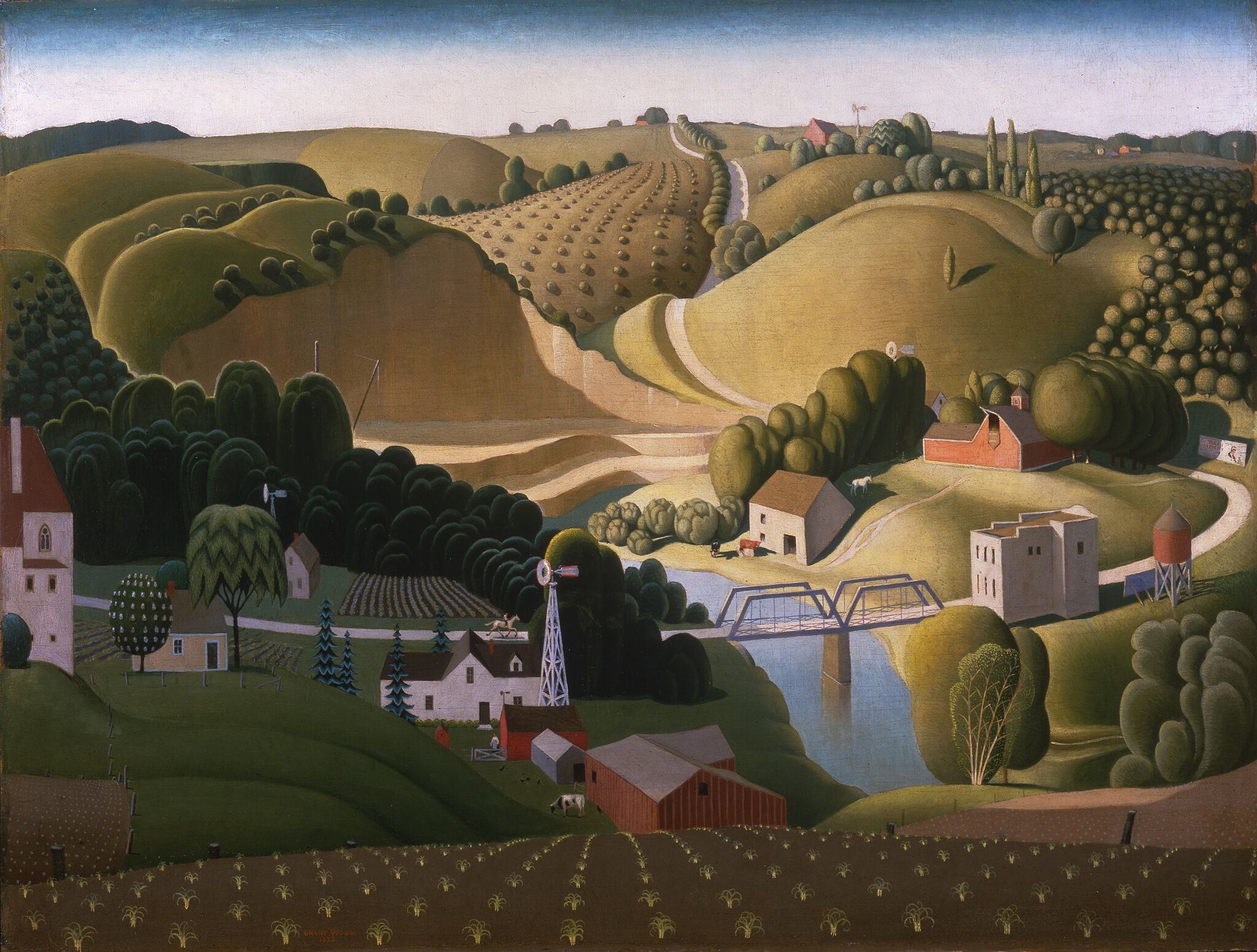
Grant Wood’s Artwork, Dream-Work, and Literary Work
Sunday, June 10, 2018
3 pm -

Weekend Early Admission for Members
Repeats
Saturday, June 9, 2018
9:30–10:30 am -
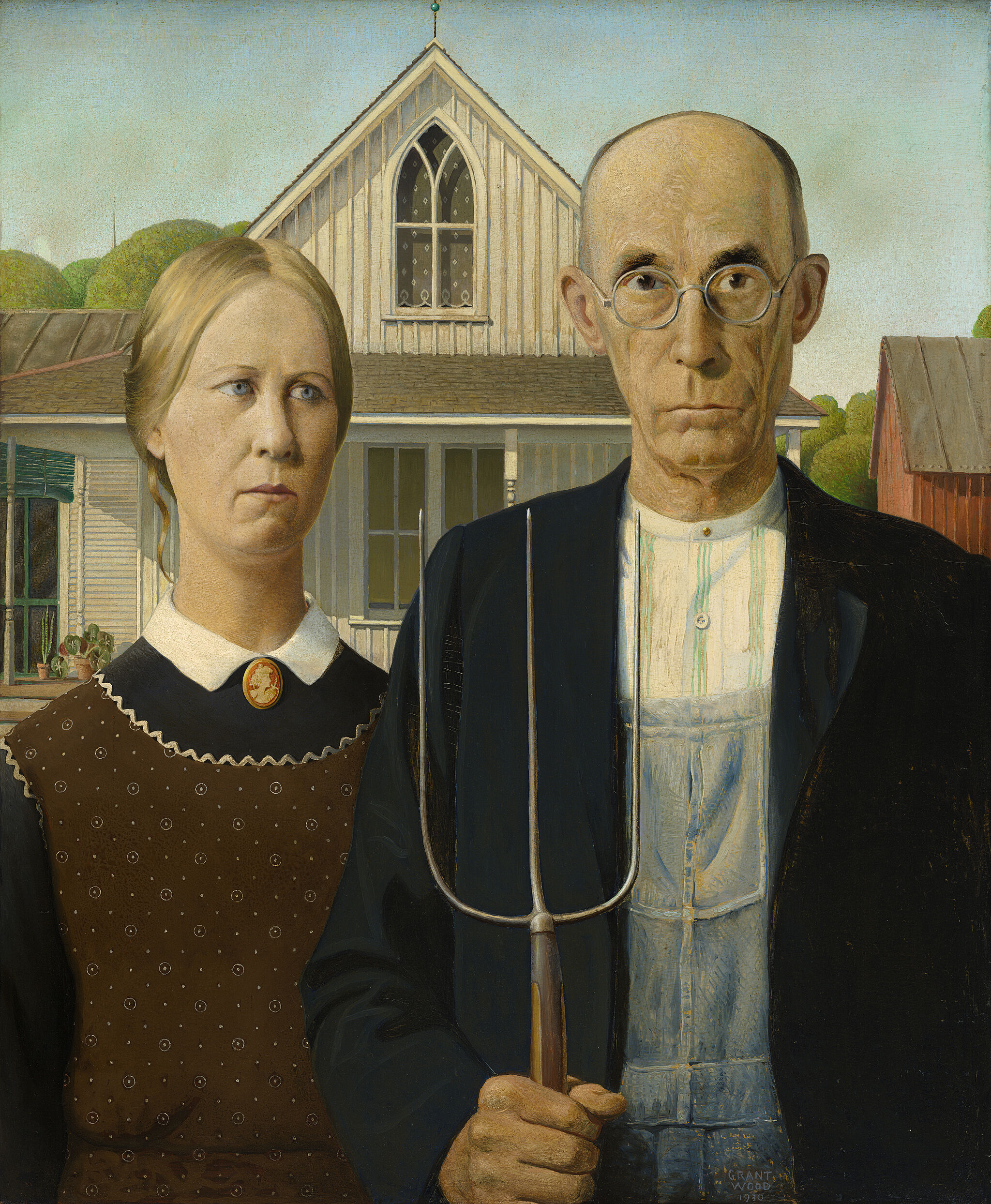
Mother's Day Tour and Brunch
Sunday, May 13, 2018
9:30 am -
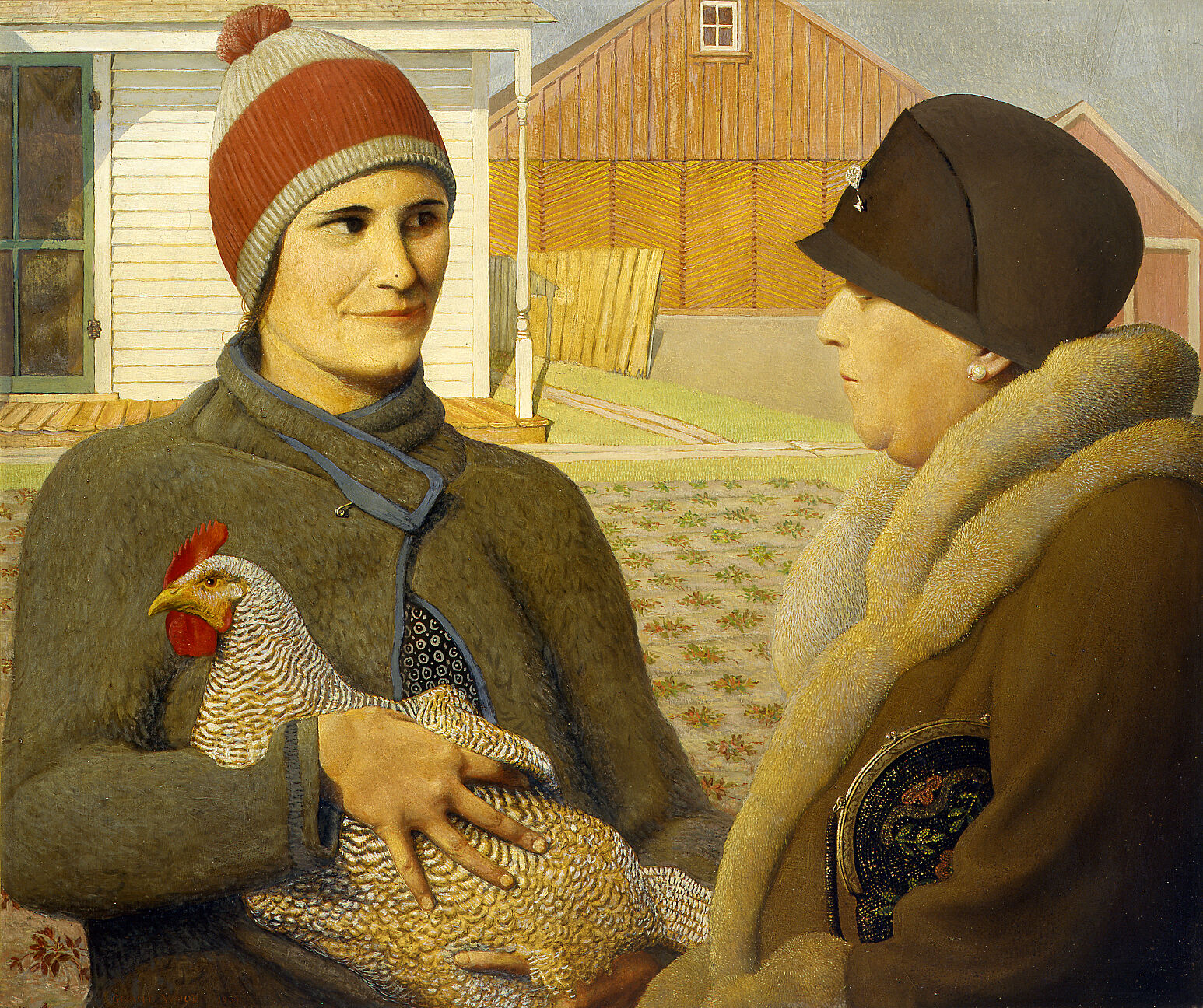
Contemporaries Reception and Tour of Grant Wood: American Gothic and Other Fables
Wednesday, April 25, 2018
7:45–8:15 pm
Mobile guides
Learn more about selected works from artists and curators.
View guide
Explore works from this exhibition
in the Whitney's collection
View 5 works
In the News
“A new exhibit at the Whitney Museum of American Art reveals the complexities of the Iowa-born Wood.”
—The Wall Street Journal
"Feels right on time."
—The New Yorker
"Wood was much more than American Gothic."
—artnet
“As this exhibition demonstrates, he is an artist fated to be perpetually rediscovered.”
—The Washington Post
“Wood had altogether weirder, more singular ambitions than any of his modernist counterparts.”
—Artforum
“A fascinating retrospective.”
—WNYC
"This is no regionalist proponent of clean, country living but an artist of a much darker and more sensual vision, one for whom normalcy was delightfully perverse."
—The Art Newspaper
“It will be a surprise for people who think they know Grant Wood.”
—The New York Times
"The most extensive Grant Wood exhibition that's ever been mounted."
—CBS News

